Text
Fanette Mellier

In this post, Fanette talks about the creation of her picturebook Panorama, an ingenious visual feast in which layers of ink reveal the subtle yet intricate changes which occur over the course of one particular spring day.
Visit Fanette Mellier’s website

Fanette: My book Panorama was conceived in a unique way. It reflects an event in my personal life: the acquisition, along with my husband Clément, of a small chalet not far from Paris, where we live. To us, this place represents a "dream location" nestled in the heart of "no man’s land", the one and only we own.

I wanted to build Panorama around what this place represents, both materially as well as metaphorically. For a long time, I wanted to create a truthful and exclusive colourful narrative. In reality, the story of the book isn’t really about the chalet, it’s about the colour.

As with my other works, I began by sending a letter of intent to my publisher Alexandre Chaize. This letter referred to the definition of the word panorama:
• A circular picture painted in optical illusion.
• A vast landscape that can be seen from all sides.
• A succession of images perceived by the mind as one complete visual experience.
It also included the following intentions: The book follows in the footsteps already explored at Éditions du livre (cycle, colour, temporality, composition in sections, title volatility, absence of words...). But the project takes on a slightly more illustrative dimension, providing a pretext for exploring the form (unchanging) through the colour (whereas in Matryoshka, the form also evolves). So it’s a more detailed and narrative experiment, but also a more radical one. The overall form (shaping) is simple, but reverses the reading, in a vertical dimension.
On the publisher’s website, you’ll find this text, which sums up the book’s intentions in retrospect: “Panorama invites us to contemplate the same landscape, printed 24 times. Page after page, the colour variations reveal the passing of the hours and micro-periods of life. From the gentle warmth of a spring afternoon to the frost of night, nature awakens and then falls asleep. Observing the details becomes a child’s play: a chalet, a clock, a cat, a balloon, a glistening green... Fanette Mellier creates a world where ink layers draw a subtle and dizzying horizon.”


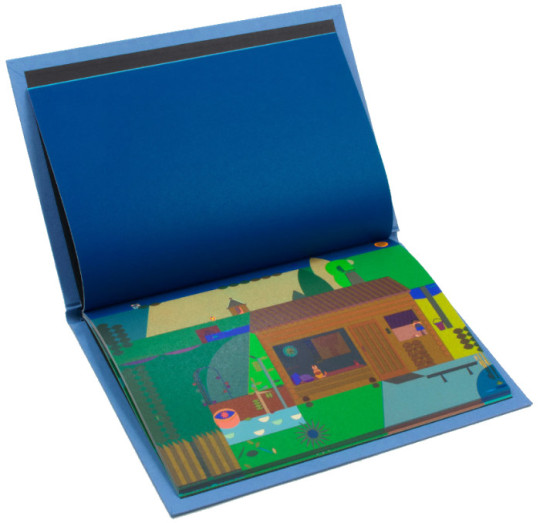

While I was working on the drawing, which took several weeks, I made progress on the synopsis of the book by writing all the narrative passages in advance, hour by hour and page by page. These passages correspond to the colour changes of the various elements, which are described in detail in my notes.

This synopsis was the subject of many discussions with Alexandre, who went so far as to create illustrations in order to check that the narrative flow was consistent.
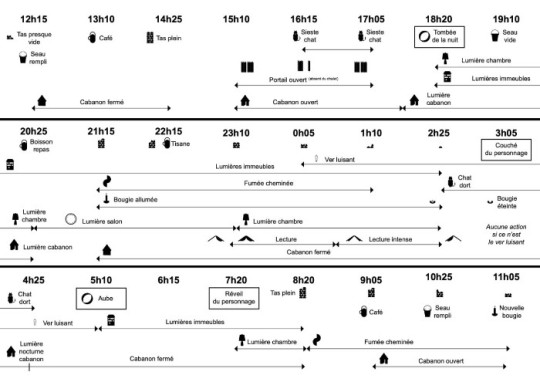

Then, once the layout of the book had been completed (which was a very tedious phase!), I was involved in the final layer setting at the Art et Caractère printing house in Lavaur. Printing the book, which was supposed to take a day, took more than three, and I thought we’d never get to the end of the final layer setting... to the point where it seems to me that it would be out of the question to reprint the book one day.
Panorama is printed in a special way, as it is a mixture of four-colours and direct shades. The four-colours, in their "standardised" aspect, are used as a realistic coloured canvas.
The entire landscape was coloured beforehand in CMY, to form a chromatic base. The CMY inks were therefore printed first during the layer setting.

The 3 Pantones, black and white were then printed in stages. The Pantones correspond to the narrative: PMS 807 brings light, PMS Green intensifies and nuances the presence of green, and PMS 072 brings the night and refreshes the landscape.
Black is only used on 6 pages, between 12.05am and 5.10am, to vividly draw in the night shadows. White takes over from black. Between 6.15am and 11.20am, it brings the colours to life with a morning frost that gets lighter over the pages.


The complexity in terms of printing comes from the intersections and overlapping of the colour zones, because printing in several steps causes the paper fibres to move and makes it difficult to reproduce these mixtures of colours on a very fine scale...

To me, the result of this book is halfway between the impressionism of Water Lilies and In Search of Lost Time on the one hand — and the pop art of Maya the Bee and Où est Charlie? (Where’s Wally?) on the other...

The book has become such an integral part of my life that I often feel like I’m walking around “in my book” when I’m at the chalet.
And a strange thing to mention is the presence of animals. The main character in the book, the cat, was completely fictional when I wrote the book. After the book was published, he arrived and settled down overnight in the same place as in the book, in front of the window. This cat, who’s called Austin and belongs to the neighbours, always comes by when we spend time in the chalet. The frog and the glow-worm have also appeared over time, in the same place as in the book. It gave us goosebumps!
This permeability between the real world and the book has a mystical resonance to me.

Illustrations © Fanette Mellier. Post translated by Gengo and edited by dPICTUS.

Buy this picturebook
Panorama
Fanette Mellier
Éditions du livre, France, 2022
Panorama is the contemplation of a single landscape printed 24 times, once for each hour of the day. Page after page, the changing colours reveal the passing hours and the little miracles that are part of any given day in a life.

0 notes
Text
Sydney Smith
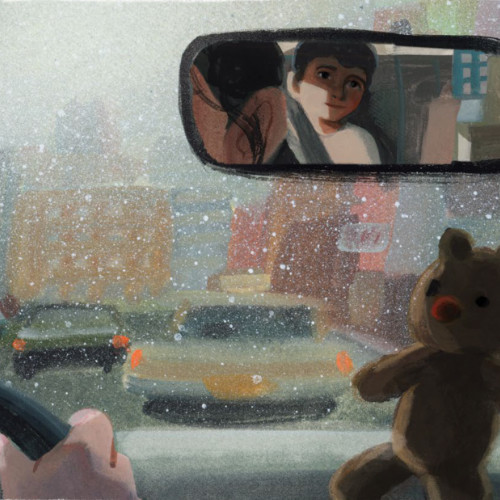
In this post, Sydney talks about Do You Remember?, a contemplative and deeply moving picturebook, told from the perspective of a young boy who is moving home and is trying to understand his emotions. To be published by Neal Porter Books in October 2023.
Visit Sydney Smith’s website
Sydney: At this moment I am sitting on my doorstep waiting for a book to arrive in the mail. I am waiting for that complicated moment of holding something in my hand that is final and limited in its form. Something that had filled my days, months, and years and brought more struggle than I expected and uncovered more of myself than I was prepared to face. It started as a book about memory. I should’ve guessed I was in for a challenge.




I had experimented in past books with painting softly and playfully. Those images looked like how a memory might appear if we could project our mind on a screen and show others that time when we were young.
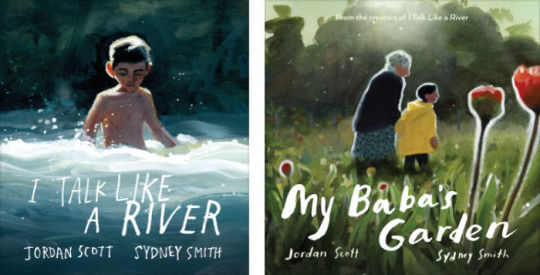
Memory is something that is inherently personal and private but universal. As a visual artist I could try to communicate that feeling and the look of a memory. I wanted to speak to readers about the nature of memory, but I soon found out that I was swimming the deep end without my water-wings. It is vast area of the human experience, and I was unsure about my ability to tell an interesting story and relate it to the theme to which I was committed.
Hindsight tells me I was going about this all backwards. Starting with the theme and trying to fit a story to that theme requires too much forcing and manipulation and often makes for an awkward and stilted flow. I was not alone on this journey, my Virgil was my editor, Neal Porter. He gave me the freedom to explore and with every draft we shared we went deeper into the weeds, all the while Neal asking the only real question worth asking, “What is it about?”
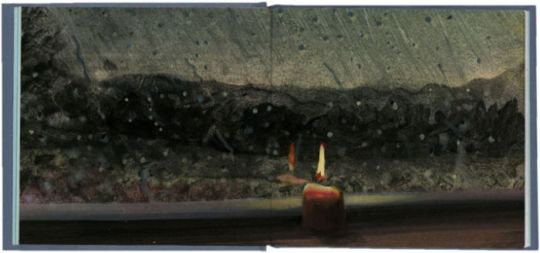

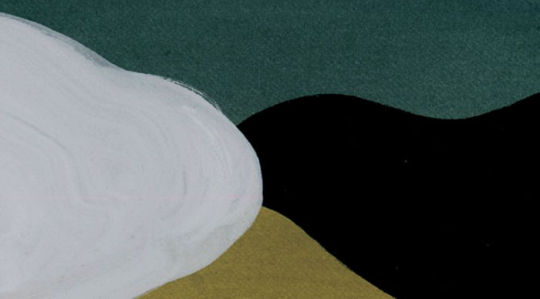

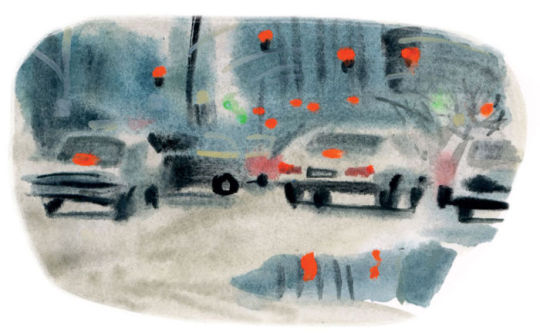

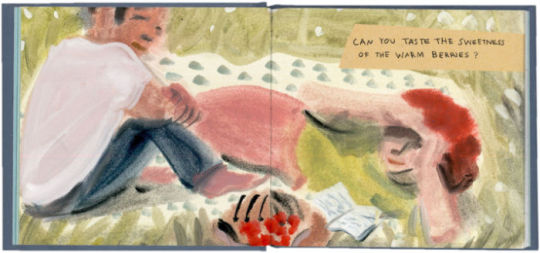
It was a book about remembering the past and making a memory of the present with someone you loved. But the characters, a mother and son, were sharing memories that were mine. They were real memories about living in the country, about picnics in the field, and riding my bike on the driveway then leaving all that behind and moving to the city. The two characters are in a bedroom on the first night in a new home in the city far from the farm. The book was working but I couldn’t even look at it. It felt deeply wrong. I was omitting a major element of the story, of my story. The part that made each memory worth recalling.
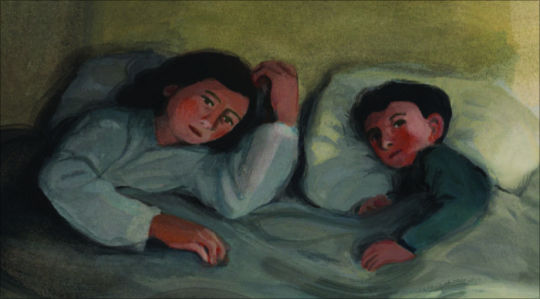
What actually happened was my parents divorced and my mother and I relocated far from our home in the country. Everything was uncertain and my world was turned upside down. My mother still calls it the Great Upheaval. I knew that if the story wasn’t true to our experience, I would be denying a part of my history even though it was painful to everyone involved. At the time of the divorce my role was to convince those around me who were in such pain that I was unaffected and stable. I understood that my sadness would make others sad. I felt like a custodian for the emotions and guilt that surrounded me. As the book evolved into a story of a broken family, I understood that my feelings of discomfort were there because I was pushing against the instinct that formed when I was that 8 year old. I was showing my sadness and it was ok. But that was not all. I was also answering the question my parents have silently asked for 36 years. It’s the same question I am asking now with children of my own. What will you remember? What will your memories of this time look like? Will you remember the upheaval, the darkness, the uncertainty?
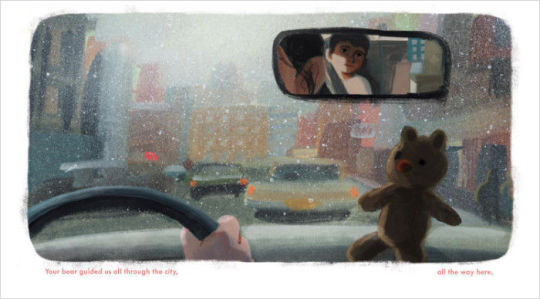
The answer is that I remember love. Unconditional and ever present.

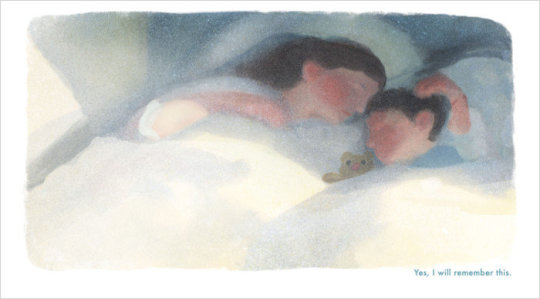
This book is for my mother, but she has not seen it yet. I am sitting on my doorstep, waiting for this book to arrive in the mail. With its 40 pages and a handful of words, it could never say it all but it says enough.
Illustrations © Sydney Smith.

Buy this picturebook
Do You Remember?
Sydney Smith
Neal Porter Books, United States, 2023
Can you hear the morning wind in the trees? Can you feel the snowflakes landing on your wrist? Can you taste the sweetness of the warm berries?
A boy describes the memories that are so meaningful to him as he is about to move into a new home. Sydney Smith takes us into the mind of the boy as he processes the complex emotions that he experiences as he contemplates his new surroundings.

2 notes
·
View notes
Text
Torben Kuhlmann

In this post, Torben talks about the creation of his mouse adventures: Lindbergh, Armstrong, Edison, and Einstein. Originally published in German and English by NordSüd and NorthSouth, this incredible series has been translated into over thirty languages.
Visit Torben Kuhlmann’s website
Torben: It’s been eight years since my mouse adventures series started with the book Lindbergh.

A lot has happened since then and three other inventive mice have had even greater adventures in my books: Armstrong, Edison, Einstein.


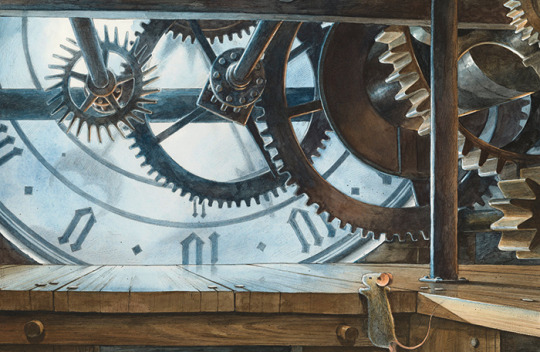
However, a few peculiarities are the same for all mouse adventures. At the beginning there is always the big question: What if...? What if many great pioneering feats and achievements in human history were actually the work of ingenious mice?
That thought was the starting point for Lindbergh and along with it came creative decisions that have defined the series ever since. One goal is always a degree of realism. I see a special appeal in drawing a realistic portrait of a bygone era.

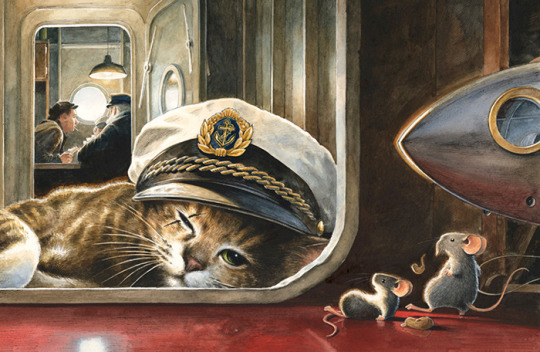
And on this realistic stage, I tell the fantastical story of mice influencing human history in hitherto unknown ways, for example: by inspiring a famous pilot or a Nobel Prize winner in theoretical physics.
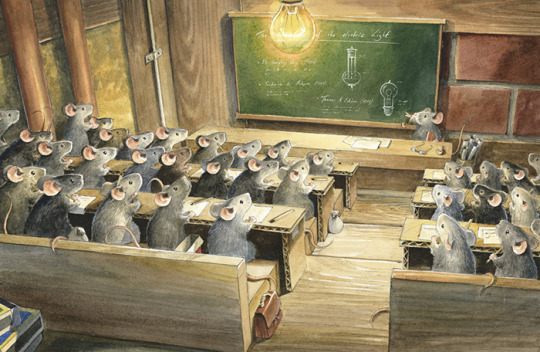
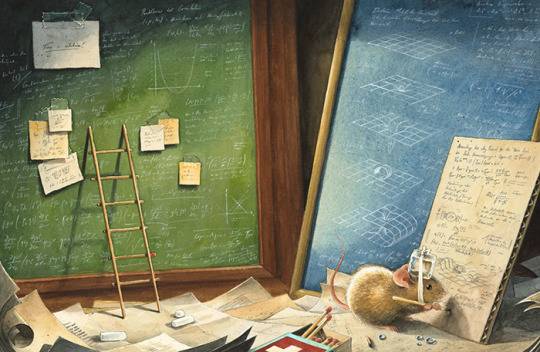
At the beginning of my process stands a sketchbook. The first task is to find some key scenes. Most of the time, a rough overall picture of the story emerges quite quickly. In Lindbergh it was a mouse’s meeting with a bat that got everything rolling.
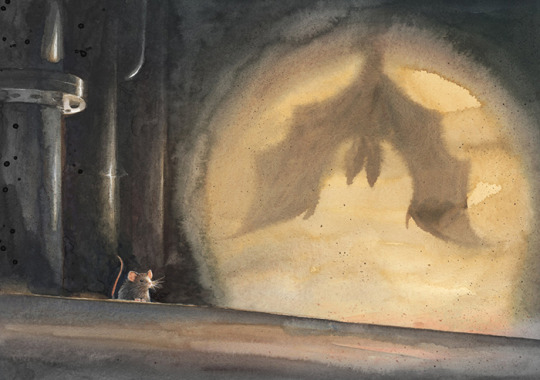
The first sketches depicted that encounter and were soon joined by the mouse’s first inventions: flying machines that were clearly inspired by the anatomy of bats.

I then develop the concept further throughout the sketchbook and collect ideas in the form of rough scribbles, story bits, and early text ideas. Gradually, a typical storyboard emerges from this, not dissimilar to that of a movie.
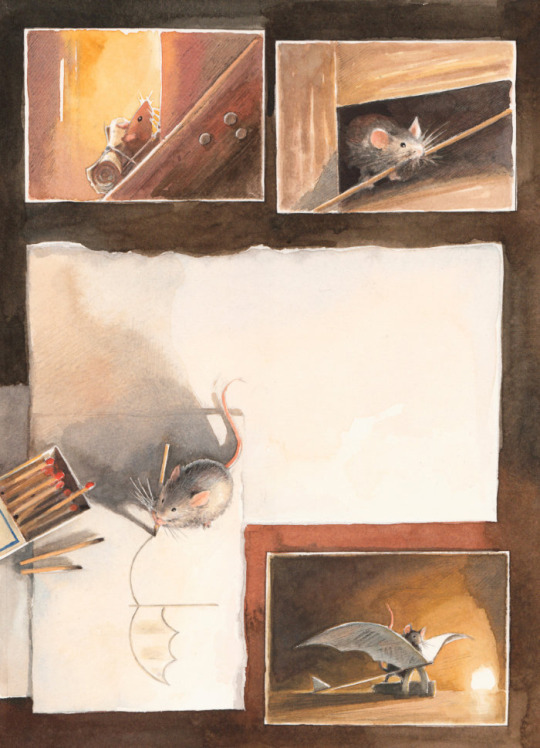
My latest mouse adventure, Einstein, was also created this way, although the process was much more streamlined compared to the rocky start with Lindbergh. In Einstein the initial question was: What if a time-traveling mouse had inspired Albert Einstein’s thoughts on the relativity of time? Unlike the previous books, however, it was clear from the outset who would be the namesake of the story. And so the first sketches were portraits of a young Albert Einstein with a mouse hiding from him.

The topic of time and time travel is also indicated here visually, since several clocks appear in the picture. These first sketches later became the cover illustration. It was a nice opportunity (and a challenge) to have the namesake finally appear as a portrait on this latest book cover.
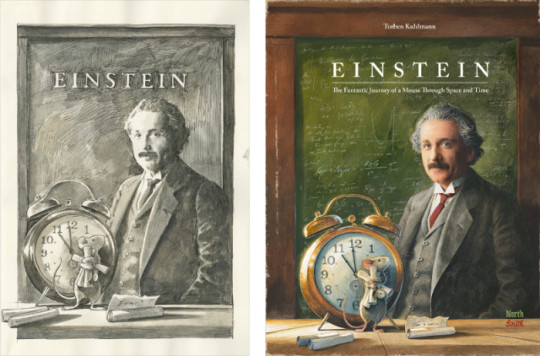
In general, the appeal of this fourth mouse adventure was the opportunity to play with paradoxes and time loops; something that is only possible thanks to the time travel theme. Within the story, the mouse—seeking to build a time machine—is inspired by Einstein’s work. And in turn, a young Einstein—writing his theories about space and time—is inspired by the mouse who is stranded in the past. It’s both a causality loop and a paradox if you think about it. A complete storyboard of the story developed very quickly in my sketchbook.

One idea quickly led to the next. It was very satisfying to see how these pieces of the puzzle emerged and gradually fit together: a late arrival to a cheese festival in Bern, stories of Swiss watchmakers, and last but not least Einstein’s Bern miracle year in 1905.


In addition to completing the sketchbook, work on the final text begins, first in handwritten sketches and gradually in a refined form. In the final picture book, the text and images should fit closely together. I often allow the illustrations to take on the narrative focus. Why should I repeat something in the text that can easily be observed in the pictures?

The last step is to create the illustrations. I use a combination of several techniques here. It begins with a pencil drawing on watercolour paper. This drawing is worked out more and more precisely and finally executed with waterproof ink. This drawing is then coloured layer by layer with watercolours. For a 128-page book, 64 double pages have to be planned and illustrated. But it is all the more fulfilling when all the elements come together in the end and you see the result of the work that has occupied you for a solid year.


This is a good moment to announce that the series of mouse adventures is far from over. I am playing with some early ideas at the moment. Let’s see which one will grow into a new picture book. There are still many groundbreaking inventions and pioneering acts that might have some as-of-yet unknown connections to inventive and inquisitive mice.

And slowly but steadily the 10th anniversary of Lindbergh is approaching. Let’s see what the ingenious mice have up their non-existent sleeves for that occasion.


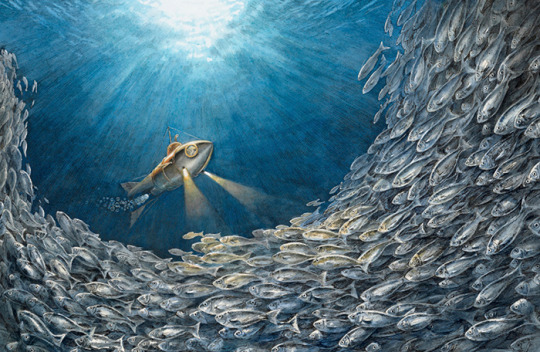
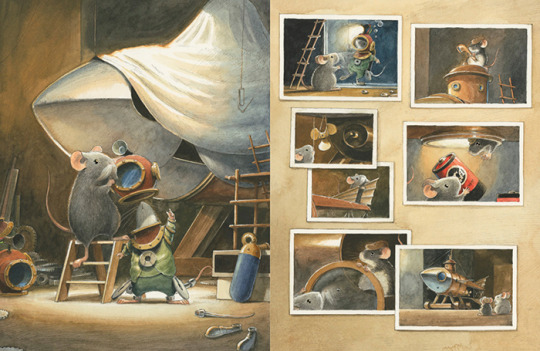
Illustrations © Torben Kuhlmann. Post edited by dPICTUS.

Buy this picturebook
Einstein: The Fantastic Journey of a Mouse Through Space and Time
Torben Kuhlmann
NordSüd Verlag, Switzerland, 2020
NorthSouth Books, United States, 2022
When an inventive mouse misses the biggest cheese festival the world has ever seen, he’s determined to turn back the clock. But what is time, and can it be influenced? With the help of a mouse clockmaker, a lot of inventiveness, and the notes of a certain famous Swiss physicist he succeeds in travelling back in time. But when he misses his goal by eighty years, the only one who can help is an employee of the Swiss Patent Office, who turned our concept of space and time upside down.
German: NordSüd Verlag
English: NorthSouth Books
Chinese (Simplified): Ginkgo (Shanghai) Book Co. Ltd.
French: Editions Mijade
Japanese: Bronze Publishing
Catalan: Editorial Juventud
Korean: Booknbean Publishing
Greek: Psichogios Publications
Dutch: De Vier Windstreken
Persian: Houpaa Books
Romanian: Corint Books SRL
Russian: Polyandria Print LLC
Swedish: Lilla Piratförlaget
Spanish: Editorial Juventud
Czech: Dynastie s.r.o.

Buy this picturebook
Edison: The Mystery of the Missing Mouse Treasure
Torben Kuhlmann
NordSüd Verlag, Switzerland, 2018
NorthSouth Books, United States, 2018
A long time ago, one mouse learned to fly, another landed on the moon... what will happen in the next Mouse adventure?
When two unlikely friends build a vessel capable of taking them to the bottom of the ocean find a missing treasure—the truth turns out to be far more amazing.
German: NordSüd Verlag
English: NorthSouth Books
Chinese (Simplified): New Buds Publishing House
Finnish: Kustannusosakeyhtiö Otava
French: Editions Mijade
Italian: Orecchio Acerbo
Japanese: Bronze Publishing
Catalan: Editorial Juventud
Korean: Booknbean Publishing
Greek: Psichogios Publications
Dutch: De Vier Windstreken
Persian: Houpaa Books
Romanian: Corint Books SRL
Russian: Polyandria Print LLC
Swedish: Lilla Piratförlaget
Slovenian: Desk d.o.o.
Spanish: Editorial Juventud
Czech: Dynastie s.r.o.

Buy this picturebook
Armstrong: The Adventurous Journey of a Mouse to the Moon
Torben Kuhlmann
NordSüd Verlag, Switzerland, 2016
NorthSouth Books, United States, 2016
Torben Kuhlmann’s stunning new book transports readers to the moon and beyond! On the heels of Lindbergh: The Tale of a Flying Mouse comes Armstrong: The Adventurous Journey of a Mouse to the Moon—where dreams are determined only by the size of your imagination and the biggest innovators are the smallest of all. The book ends with a brief non-fiction history of human space travel—from Galileo’s observations concerning the nature of the universe to man’s first steps on the moon.
German: NordSüd Verlag
English: NorthSouth Books
Chinese (Simplified): Ginkgo (Shanghai) Book Co. Ltd.
German-Arabic: Edition bi:libri
German-English: Edition bi:libri
German-French: Edition bi:libri
German-Italian: Edition bi:libri
German-Russian: Edition bi:libri
German-Spanish: Edition bi:libri
German-Turkish: Edition bi:libri
Finnish: Kustannusosakeyhtiö Otava
French: Editions Mijade
Italian: Orecchio Acerbo
Croatian: Planet Zoe d.o.o.
Greek: Psichogios Publications
Dutch: De Vier Windstreken
Persian: Houpaa Books
Polish: Wydawnictwo Tekturka
Romanian: Corint Books SRL
Russian: Polyandria Print LLC
Swedish: Lilla Piratförlaget
Slowenian: Desk d.o.o.
Language: Dynastie s.r.o.

Buy this picturebook
Lindbergh: The Tale of a Flying Mouse
Torben Kuhlmann
NordSüd Verlag, Switzerland, 2014
NorthSouth Books, United States, 2014
One small step for a mouse; one giant leap for aviation.
These are dark times... for a small mouse. A new invention—the mechanical mousetrap—has caused all the mice but one to flee to America, the land of the free. But with cats guarding the steamships, trans-Atlantic crossings are no longer safe. In the bleakest of places . . . the one remaining mouse has a brilliant idea. He must learn to fly!
German: NordSüd Verlag
English: NorthSouth Books
Armenian: Zangak Publishing
Chinese (Simplified): New Buds Publishing House
German-Arabic: Edition bi:libri
German-English: Edition bi:libri
German-French: Edition bi:libri
German-Italian: Edition bi:libri
German-Russian: Edition bi:libri
German-Spanish: Edition bi:libri
German-Turkish: Edition bi:libri
Estonian: Rahva Raamat
French: Editions Mijade
Hebrew: Agam Publishing House
Italian: Orecchio Acerbo
Japanese: Bronze Publishing
Korean: Booknbean Publishing
Mongolian: Amar-Urguu LLC
Greek: Psichogios Publications
Dutch: De Vier Windstreken
Persian: Houpaa Books
Polish: Wydawnictwo Tekturka
Russian: Polyandria Print LLC
Swedish: Lilla Piratförlaget
Slovenian: Desk d.o.o.

4 notes
·
View notes
Text
Johanna Schaible

In this post, Johanna talks about her incredible debut picturebook ‘Once upon a time there was and will be so much more’. In the first dPICTUS Unpublished Picturebook Showcase in 2019, this project was voted for by 23 of the 30 publishers on the jury, acquired by Lilla Piratförlaget, and then published as a co-edition in nine languages.
Visit Johanna Schaible’s website
Johanna: I will tell you about my picturebook ‘Once upon a time there was and will be so much more’. It takes us on a journey through time. The book begins in the distant past, catches up to the present halfway through, and then leads us with questions into the future.

Millions of years ago, dinosaurs lived on Earth.

One hundred years ago, a journey took a long time.
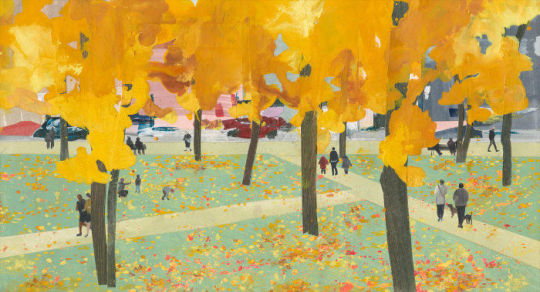
A month ago, it was still autumnn.
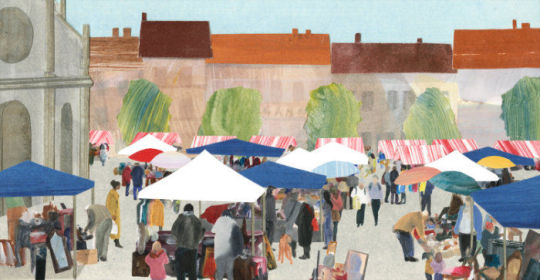
What will the weekend bring?
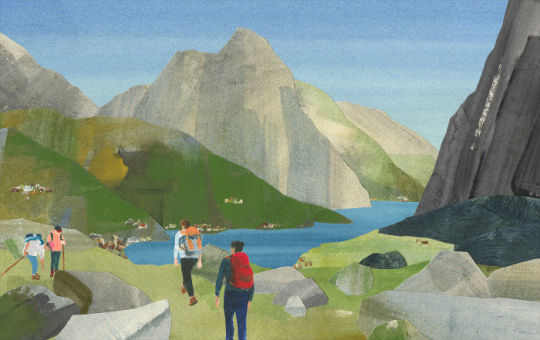
Will you have children one day?
The time is depicted in a special way. If you open the book in the middle it looks like this:
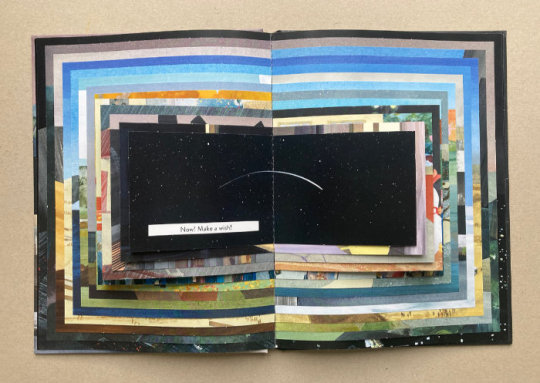
The pages of the book become smaller as we draw closer to the present and grow larger again as we move into the future.
This is one of the first dummy books I made.

Back then, it was hard to believe that this would turn into a real book one day. For a long time, I heard from the publishing world that it is very difficult to produce a book like this and it would be even harder, if not impossible, to find a publisher who would take the risk, effort and cost to produce it. It took some time, but here it is!

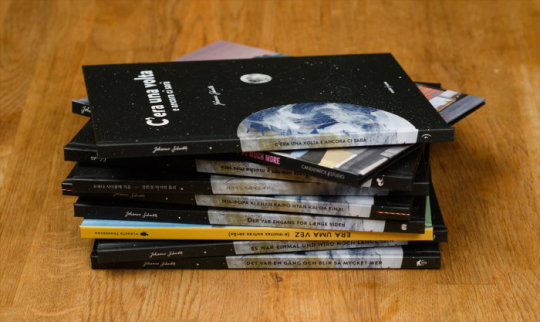
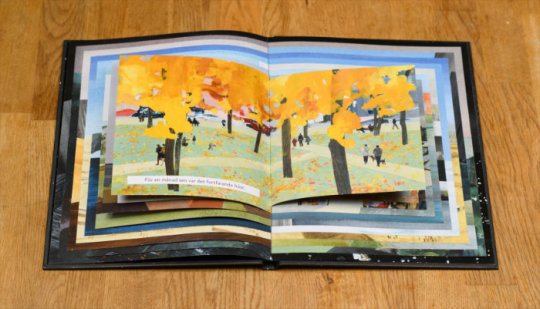
The book’s journey started with Bolo Klub, which was founded several years ago by the Swiss illustration duo It’s Raining Elephants. Bolo Klub supports illustrators in completing a picturebook, and provides networking opportunities with professionals from the publishing world. I had the chance to take part in the first edition from 2018–2019. We were a wonderful group of fifteen illustrators that came together once a month to push our book projects forward, and to benefit from each other’s feedback.

Photograph by E.Ettlin.
I do a lot of projects moving between art and illustration. To make a picturebook sounded very challenging to me, especially because I rarely work on narrative.
I always keep a logbook where I write about the project I‘m working on, including the inspiration and input I receive. This is the logbook from the meetings with the Bolo Klub.
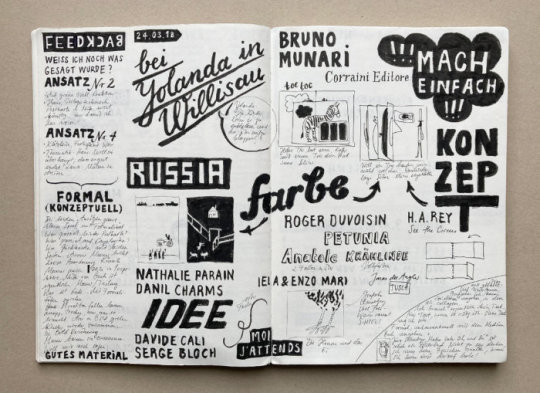
From the beginning, I was attracted by books with exciting formats, and I wasn’t up for creating a regular one. I didn’t want a main character, and my starting points were thematically very open and global. My keywords, for example, were ‘night’, ‘air’ and ‘time’.

With the aim to really make progress on our projects, we spent a working weekend together. Besides the working, it was so enriching to exchange thoughts and ideas. In a creative process, we all face similar challenges.
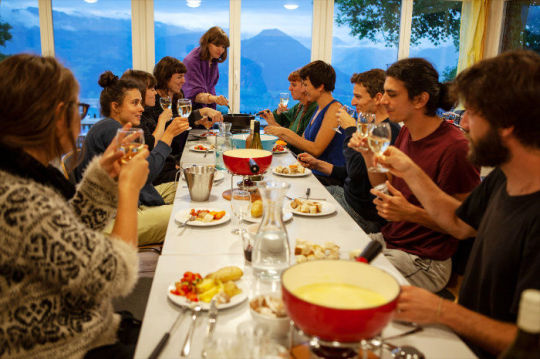
Photograph by E.Ettlin.
I was working on two ideas: The first idea was a zoom, starting far away and coming in close to one child. The second idea was a dummy book with the topic ‘time’. Combining the two ideas was the turning point, and I had finally found the theme and concept I was looking for.

Photograph by E.Ettlin.
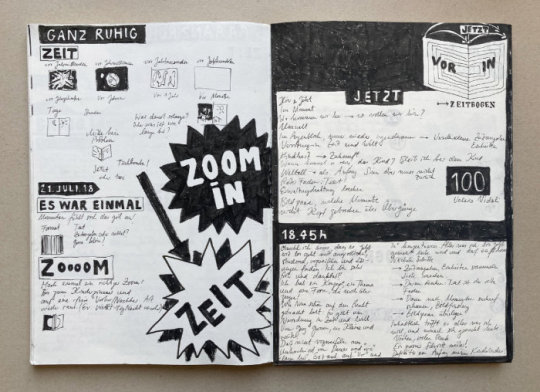
I often work with collage and painting for my illustrations. I also do my sketches using this technique because I want to see the atmosphere of an image and idea straight away.
To start with, I made some little sketches the size of postcards. In this case I work more roughly, and I appreciate the liveliness that inhabits these sketches. I feel comfortable working quite fast. It helps me to develop the images intuitively.
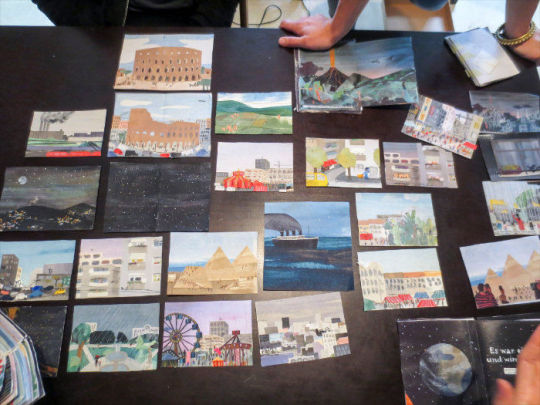
Photograph by E.Ettlin.
I made a lot of little dummy books to observe what happened while turning the pages. I had to find simple sentences that gave the timeline and structure to the book.

Alongside the development of a coherent journey through time, I had to think about the feasibility of my idea. When I did my little dummy books, they were very imprecise. It was only when I started to measure the pages and make examples of the real book size that I realised that my pages didn’t just get smaller, but their format changed completely.
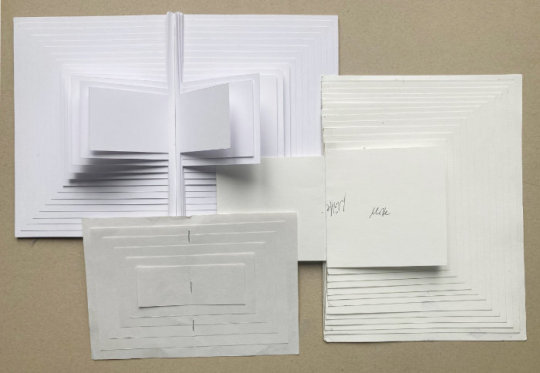
This became one of the most important pages for me in the logbook: the one with the measurements of each image.
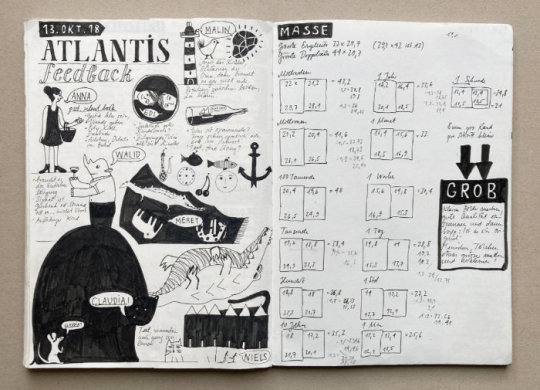
The format changes from a more common picturebook size...

... to a wide panorama format, and then back again.

To be sure about the size, it helped me to use frames that I put over my collages, to be able to change and move elements until the end.

With the Bolo Klub and my dummy book, I travelled to the Bologna Children’s Book Fair 2019.
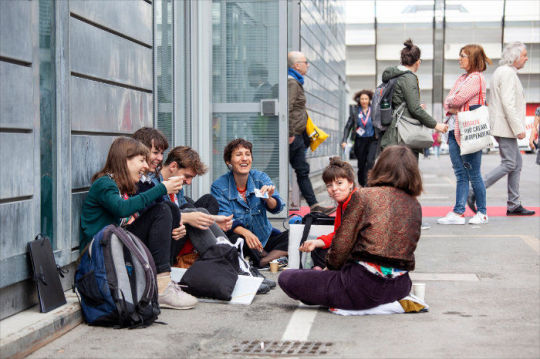
Photograph by E.Ettlin.
In Bologna, some publishers told me they were interested. But I never heard from them again. One publisher seemed particularly interested, but didn’t propose me a contract at that time.
It was another call that boosted this project. I sent my dummy book to the first edition of the dPICTUS Unpublished Picturebook Showcase in 2019, and was thrilled when I heard that 23 of the 30 publishers on the jury voted independently for my project. It made me very happy because it showed me that, even if that didn’t mean that they would publish it, my book was touching them in some way.
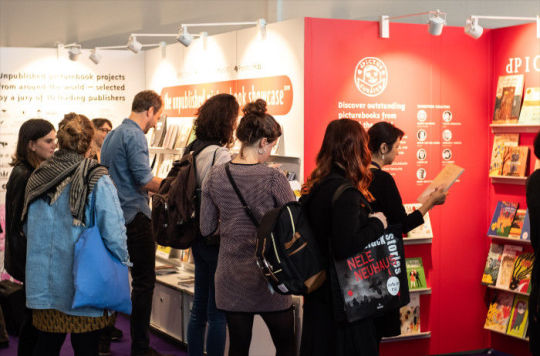

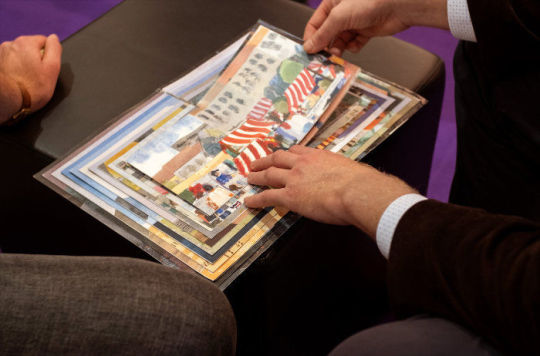
Frankfurt Book Fair 2019 photographs by Theodore Bauthier (@b.c.theodore).
It was also through The Unpublished Picturebook Showcase that my book project found the publisher that accepted the big challenge of making it a reality. I was very lucky with my Swedish editor Erik Titusson from Lilla Piratförlaget, and Sam McCullen from dPICTUS / Picturebook Makers on the graphic design. In our collaboration, I felt a big trust in me and my work.

My creative process for this project was similar to how it very often is for me: Some pictures came easily and stayed very close to the original sketch...

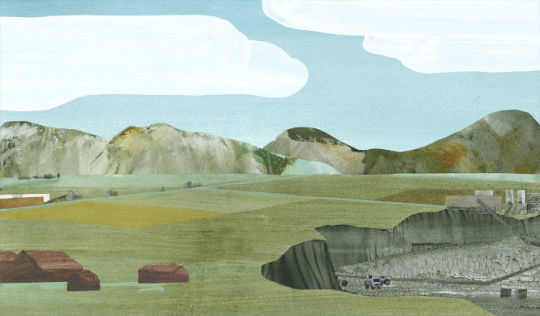
But for some of the other pictures, I had to do them over and over again until they felt right to me.
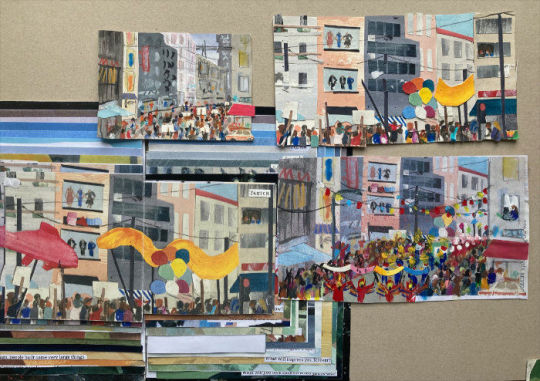
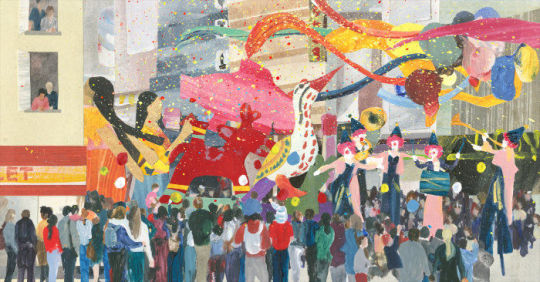
With my technique of mixing painting and cutouts, I really like to develop sceneries and creating atmospheres. To show humans inhabiting these scenes was a challenge in the beginning. It became easier after I decided to paint the figures at a larger size. For some images I made the whole setting first. Then I cut out the figures and inserted them digitally.
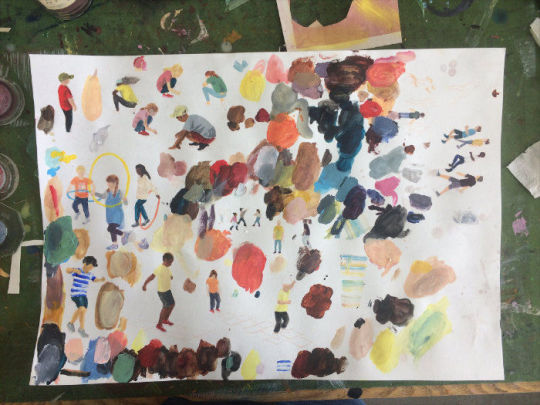
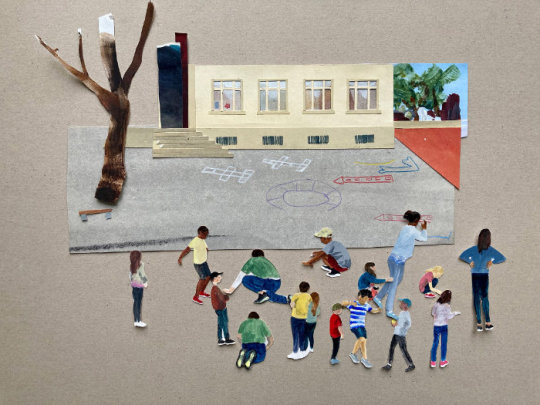
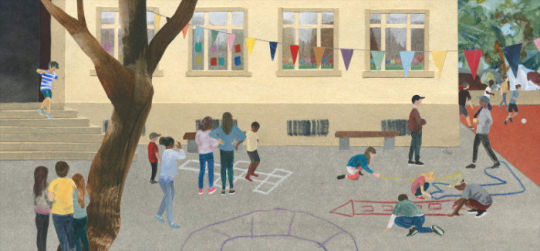
Whenever I got stuck, it helped to go outside and take photos of the daily life around me.

This, for example, is a house in the old part of Bern, which inspired me for the following image.
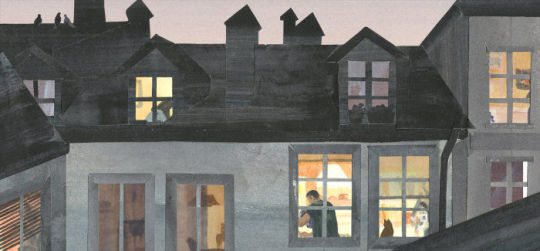
To make this book was a precious experience to me. The companionship and support from the Bolo Klub was very helpful and enriching. On this journey, I’ve had the chance to meet a lot of inspiring people who shared their knowledge and offered me their help. I‘m so thankful to all of them, and especially to my closest allies and friends who support me in all of my projects.
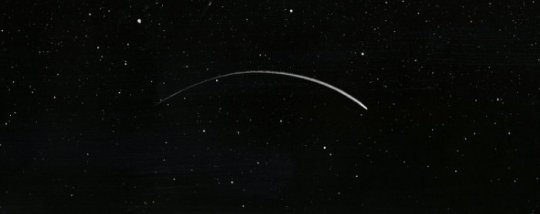
I hope that this book will offer to people of all ages the possibility to talk about what kind of future we imagine and want to build together.

Illustrations © Johanna Schaible. Post edited by dPICTUS.

Buy this picturebook
Det var en gång och blir så mycket mer / Once upon a time there was and will be so much more
Johanna Schaible
Lilla Piratförlaget, Sweden, 2021
Billions of years ago, land took shape. Hundreds of thousands of years ago, people built some very large things. A month ago, it was still autumn. Where will you be in an hour? How will you celebrate your birthday next year? What will impress you forever? What do you wish for the future?
This book takes us on a journey through time. It begins in the distant past, catches up to the present halfway through, and then leads us with its questions into the future. Both the fleeting present and the enormity of time are depicted in a truly unique way: the pages of the book become smaller as we draw closer to the present, only to grow larger again as we move into the future.
Swedish: Lilla Piratförlaget
English: Candlewick Press (late 2021)
Italian: Orecchio Acerbo
German: Carl Hanser Verlag
Portuguese: Planeta Tangerina
Spanish: Leetra (Mexico)
Danish: Turbine
Greek: Martis
Korean: LOGpress

6 notes
·
View notes
Text
Harriet van Reek

In this post, Harriet talks about several of her books, including her latest publication ‘Het dierenboekje Mie’ (The animal booklet Mie), and her stunning picturebooks which focus on letters and handwriting. She also shares fascinating insights into her creation process.
Visit Harriet van Reek’s website
Harriet: Let me tell you something about the book that I just handed in to the publishing house Querido: ‘Het dierenboekje Mie’ (The animal booklet Mie). It’s a gentle book; there’s a lot of lazing around. A bit of lying down, a bit of stroking, licking, and caressing. Nothing special. It’s like a counter-reaction to the rush and constant requirements. I wanted to draw attention to the senses and the adventure of touching, feeling, hearing, and looking closely. Presenting ordinary things in a different way, allowing you to actually see them again, with a surprised look.
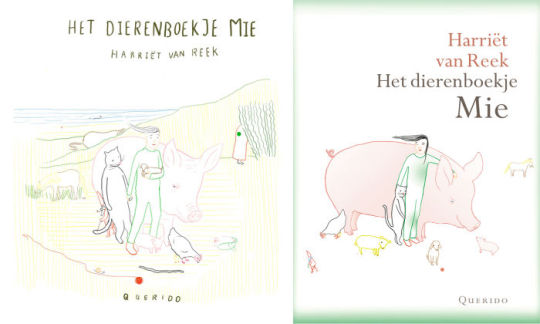
I had also been looking for a more ecocentric approach, based on empathy and respect for animals and nature.

Before I knew exactly where I wanted to be, in language and image, I went on a search. It’s kind of like peeling until you get to the pit. It started with two different leporellos, the first of which I got rid of because I thought it was all nonsense, and the second I got rid of because I thought it was too boring, too romantic, too soft.
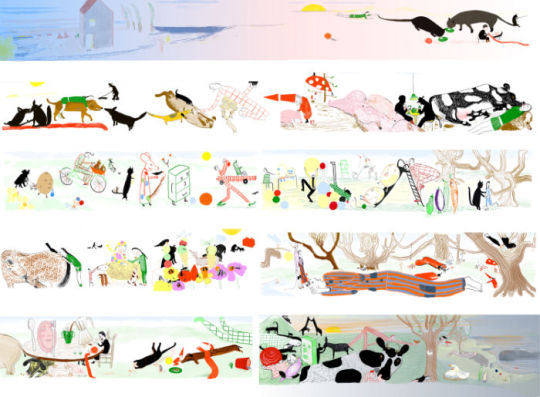
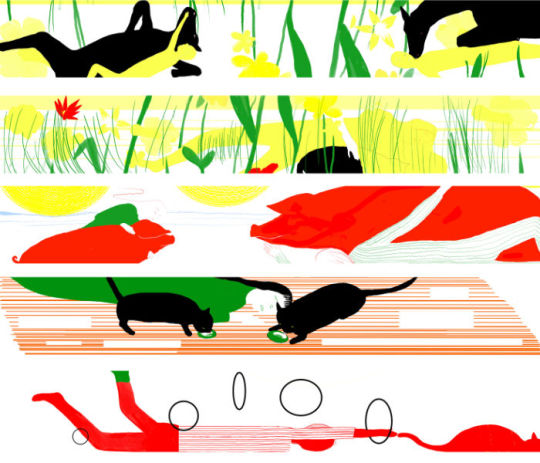
During the first lockdown, in April 2020, I found the right approach. I first wrote the text and then drew the book on a drawing tablet, a Cintiq. I had never done that before. Until that point, I worked on paper, with watercolour, coloured pencil, a drawing pen, and ink.
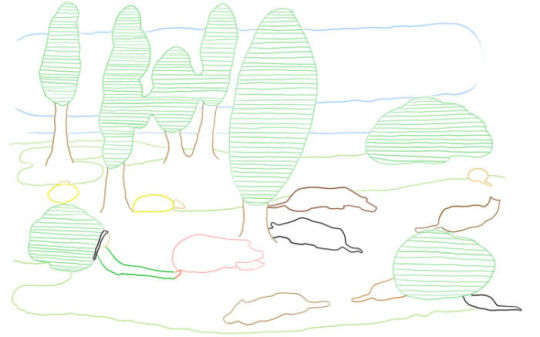

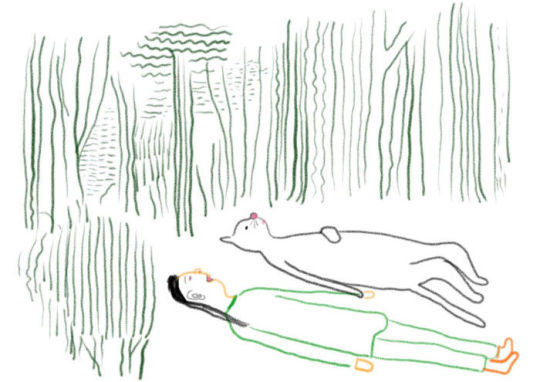

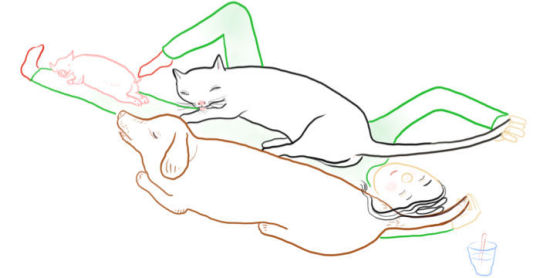
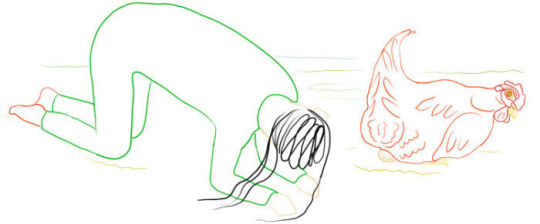


The most difficult thing for me is to be free. To find freedom. Finding openings to the imagination, to language. The wheel has to be reinvented over and over again. This also makes creating a new book challenging. It’s like a complicated game, having to find the secret rules of the game to solve the riddle.
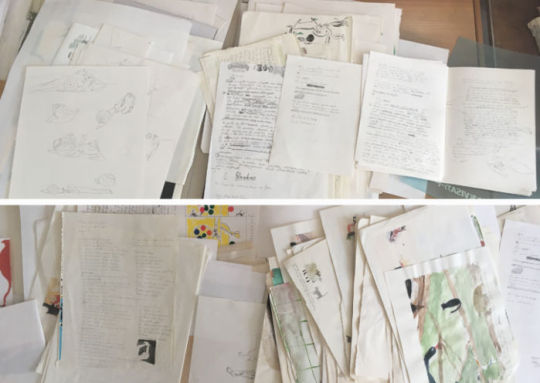
The idea must be good and the text must be good. The subject of the book must have a certain urgency and meaning. So it’s always a matter of waiting for something like this to arise. I don’t want to just make something up.
Another topic I’ve worked on before is letters and handwriting. Handwriting seems to be lost in our keyboard society. I created two books on this subject. First, there was ‘Letterdromen met Do’ (Letterdreams with Do). I turned the letters into living beings. They come to life by themselves, if you write by hand.
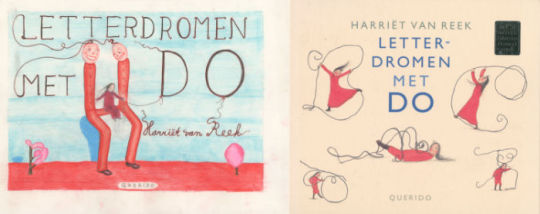
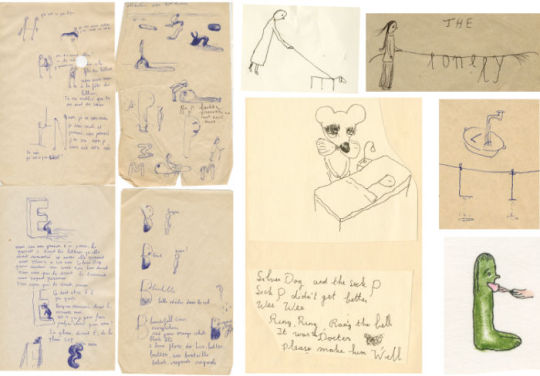

The letters challenge you to create stories with them, simply because of their shape. This way, I hoped to lure the reader towards the letter and to be carried away by it myself as well.
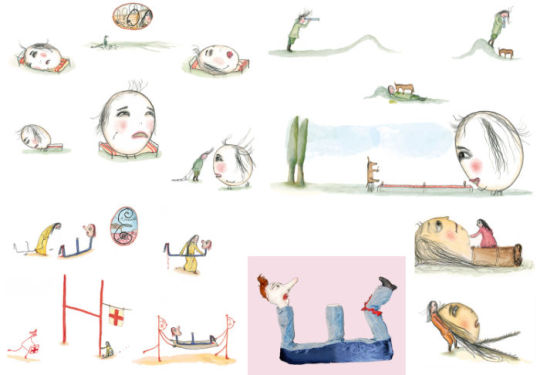

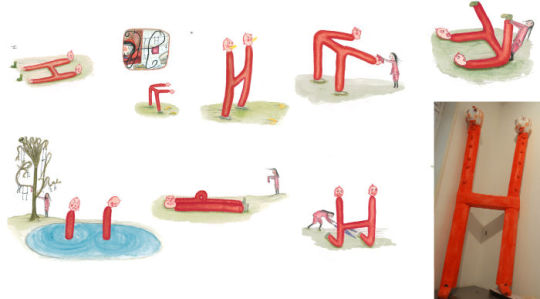

After Letterdreams with Do, I made another book about letters. This time, there was a strong emphasis on writing and the personal expression which is possible through handwriting: ‘Lettersoep’ (Letter Soup).
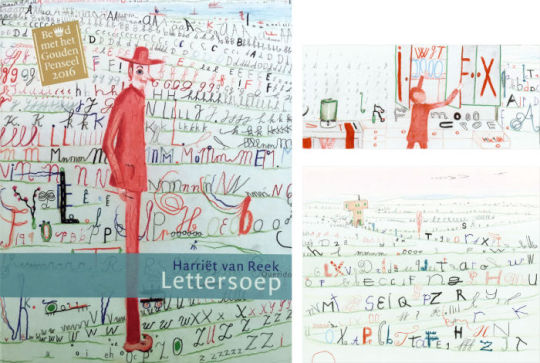
The main character is an L, he lives in a T, together with a P, a cat. There are all kinds of puns in the text and the images, which makes the book, just like ‘Letter Dreams with Do’, difficult or perhaps impossible to translate. The book also covers various professions that are either dying out or are a craft.
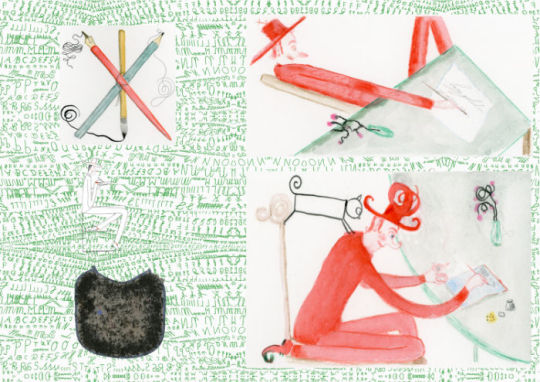
I actually like the sketches more than the final work. I often think, “why did I go this far, I was already there.”

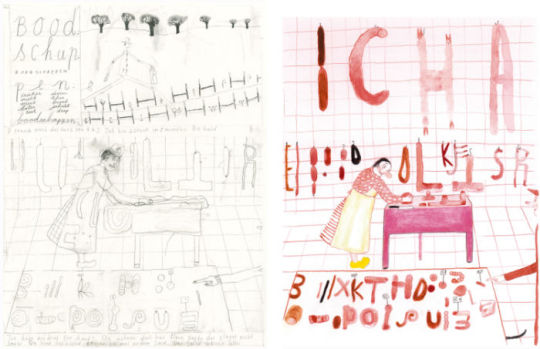
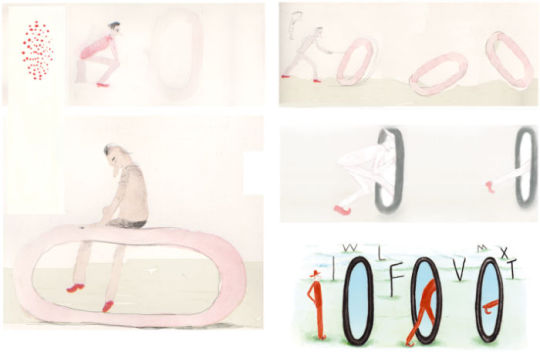
It usually takes several years between one book and the other. In the meantime, I do other things. I sometimes spend my time creating ceramics, freehand drawing, or weaving.
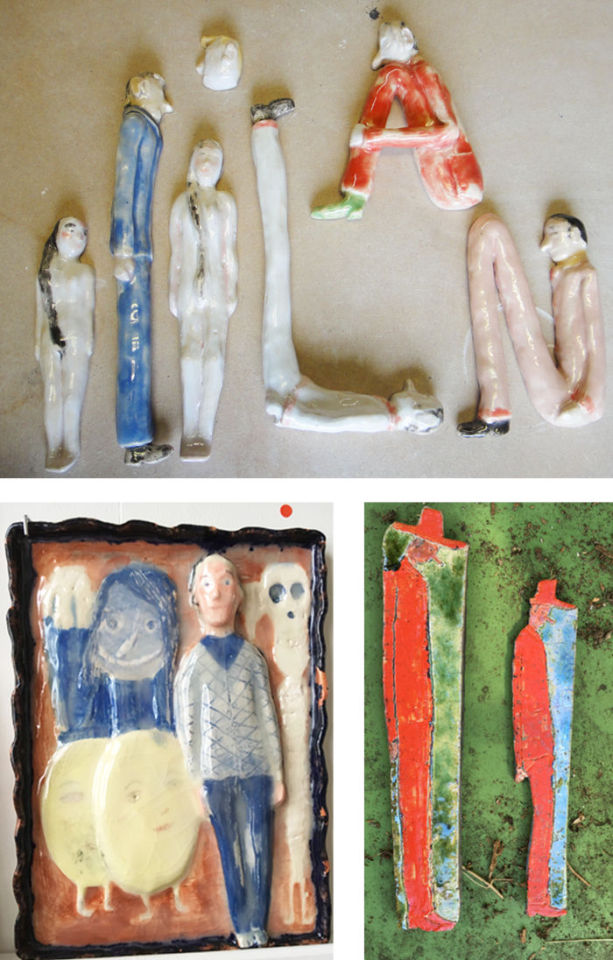
Along with Geerten Ten Bosch, I create visual theatre and performance. In this photo, we’re performing actions on a few spectators. The aim of our work is always to stimulate the viewer’s imagination in an associative way.
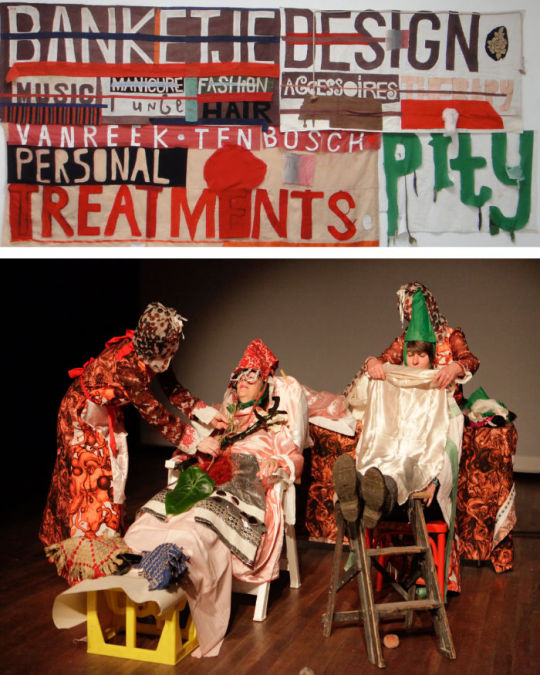
We also created an experimental picturebook together.
‘Ei! Ei!’ (Egg! Egg!) was made by cutting out drawings and merging them into new images through collage. It’s very nice to alternate solitary work with working on projects together.

I like antique Japanese ghost stories drawn on book scrolls, the Yokai-ga, Jockum Nordström’s ‘children’s’ picturebooks about Sailor and Pekka, and I love 19th century picturebooks.
Furthermore, I wish the studio Fotokino in Marseille was located in Rotterdam, my home town, because of the exhibitions and the attention they have for illustration and art.
Walking along coasts and through fields helps me to think about a book, and I am always looking for a place where I can work in peace for a few months, somewhere outside, far from the hectic city. (If you know any places, I’d love to hear about them.)
I hope I was able to inspire you with my contribution and thanks for reading!
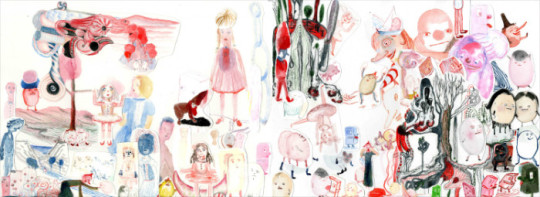
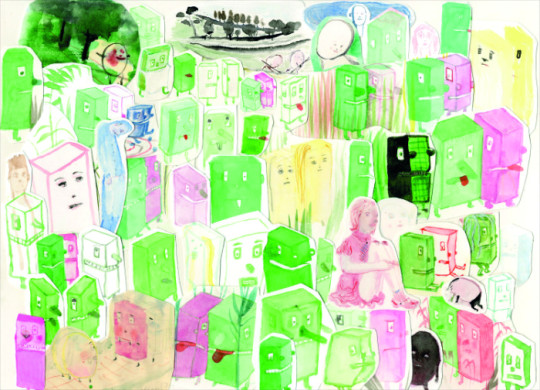
Illustrations © Harriet van Reek. Post translated by Gengo and edited by dPICTUS.

Buy this picturebook
Het dierenboekje Mie /
The animal booklet Mie
Harriet van Reek
Querido, Netherlands, 2021
Sixteen stories about Mie, a girl who spends every day with the animals. She takes the cow to the sea, or she keeps an eye on the hen, which has just given birth to chicks. She tickles the pig, brushes the cow, and pets the cat while it is raining outside. When the pony does pony things, Mie tries to imitate it all. And at the end of such a tiring day, Mie falls asleep in the grass.
A disarmingly simple and soft picturebook to calm you down, completely.
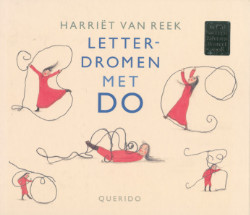
Buy this picturebook
Letterdromen met Do /
Letterdreams with Do
Harriet van Reek
Querido, Netherlands, 2008
Do is busy making letters all day long. She gets so into it that the letters come to life for her. In her dreams, Do even experiences the most fantastic adventures with them! A picturebook for children who are starting to discover letters themselves, but also for anyone who likes letter adventures.
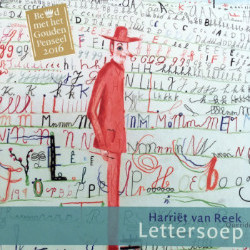
Buy this picturebook
Lettersoep / Letter Soup
Harriet van Reek
Querido, Netherlands, 2015
I’m going to make nothing of anything. I’m going to make a BIKE out of NOTHING, says Letterel. How are you going to do that? Lettercat asks. Very simple, says Letterel. Cut the N into three pieces and lay it out a little differently, and if I cut ANYTHING into 6 long sticks, 4 short and two curves, I can make a lot more. Letterel lives with a Letter cat in a letter house. He loves letters. Cut letters, look at letters, dream letters, and write letters! He conjures a beautiful colourful world where the imagination has no limits.

Buy this picturebook
Ei! Ei! / Egg! Egg!
Harriet van Reek & Geerten Ten Bosch
Uitgeverij Philip Elchers, Netherlands, 2018
An experimental picturebook by Harriet van Reek and Geerten Ten Bosch. Together they present a crazy and far from traditionally designed story about two eggs and a puppet show. A book about friendship and courage, a feast for the eyes and the heart, in which you are challenged to read and look carefully.
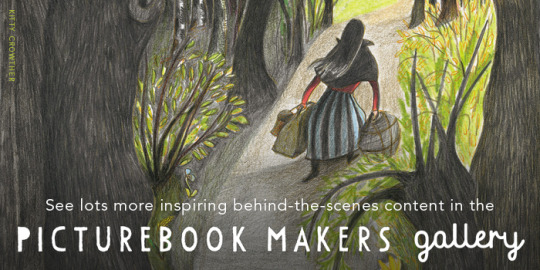
0 notes
Text
Marika Maijala

In this post, Marika talks about ‘Ruusun matka’ (Rosie’s Journey), her wonderfully fresh debut picturebook as an author and illustrator, published in Finland by Etana Editions. She talks openly about her intimate creation process, and the challenges of writing.
Visit Marika Maijala’s website
Marika: When writing this blog post, I am completely stuck in my writing process. I am trying to write a new story, but it keeps escaping me. Actually, even this blog post makes me a bit nervous, because it is a story as well: How did the book turn out the way it did?
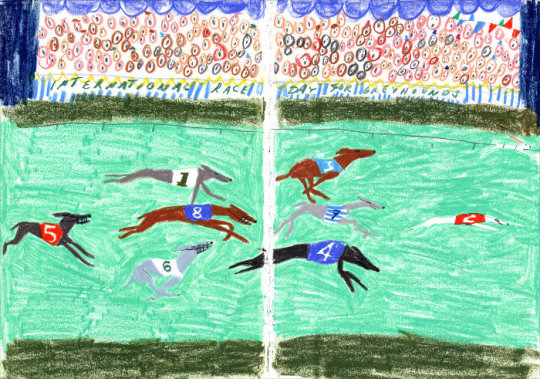
Rosie and the race dogs in ‘Rosie’s Journey’ (Etana Editions, 2018)
My first picturebook as an author was ‘Rosie’s Journey’. It’s the story of a race dog, who runs away from the race track to find a place where she can run the way she likes to. Now, as I am struggling with my writing, I have returned to this project often and tried to figure out how I did it. It is hard to reach, as now, looking at it after a couple years have gone by, I only remember chaos, randomness and doubt, exactly the same feelings I am having now. I think I need to go further back to see how it started.

I remember sitting in a book meeting in a publisher’s office a few years back. We were discussing a forthcoming book project. There were two stories on the table, and the publisher asked which would I rather illustrate, this other story, or this one, with two happy dogs? I remember replying immediately: “the one with happy dogs”. The other story got selected, and it turned out to be a great book, but I think that deep inside of me I only want to draw happy dogs. In the end I even made a very stupid story for myself about four dogs driving around in their car. They are happy.
So maybe that’s why the main character in my first authored book is a dog. She just appeared in my sketchbook one day. Here is the first sight of Rosie. She seems happy.
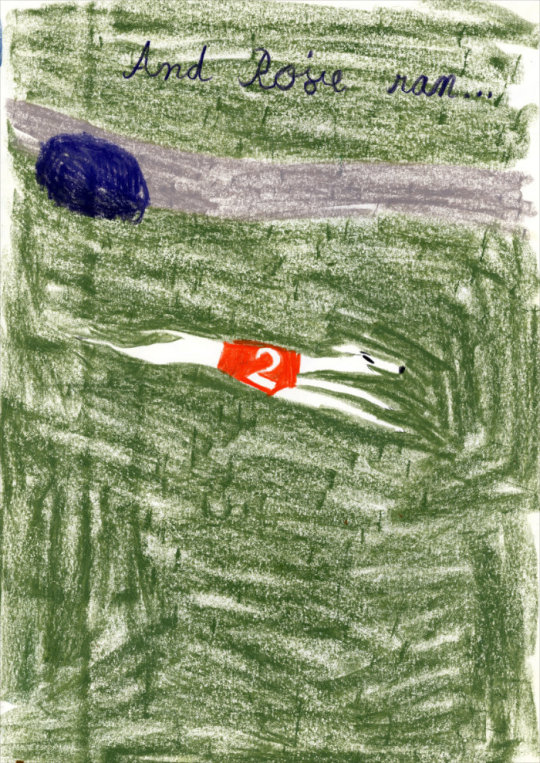
This was a new notebook – an A3 Moleskine I had bought on one Interrail trip in Italy, and I carried it all the way home through Europe; how stupid. Especially as it was still empty after two years. That was a time when I was very tired of my work. I had illustrated children’s books for over a decade, worked with wonderful writers and received nice reviews for my illustrations. But I felt I didn’t really enjoy drawing. I used computer a lot, because I didn’t trust my drawing skills. So I took out this huge notebook and started scribbling, messing around. Drawing badly. Pictures came out. They were bad, but I enjoyed making them.
Around that time, I was selected for a masterclass with some other Finnish illustrators. Our teacher was Kitty Crowther, whom we all admired very much, so this was a special weekend for all of us. January was cold that year in Helsinki, and the course took place in a spooky old house by the sea. We were running on the frozen sea and making all kinds of exercises to free our creation and find our inner stories.

That weekend, I showed my new drawings for the first time to other people and got encouraged by the feedback I received from Kitty and other illustrators. Maybe I really was going in the right direction? We still often talk about this weekend with those artists, and looking back at it now, I think it was an important turning point for many of us. For me it was.
This is one of the drawings I did on the course. I still look at it when I am having a bad day, or I feel lost. Depending on the day, I am either the lion or that person getting eaten by the lion.
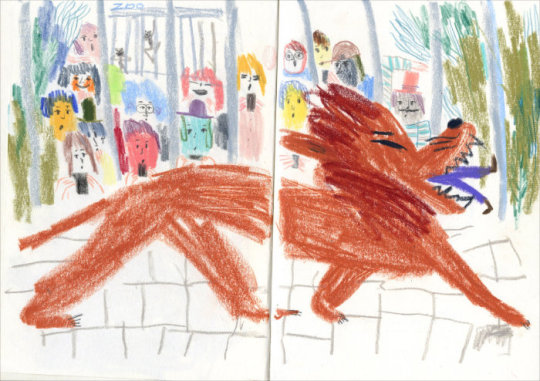
More drawings of Rosie started to appear in my notebook. I dared to show them to my publishers Jenni Erkintalo and Réka Király at Etana Editions. They were also encouraging and said that there was a story building up. I think it has always been difficult for me to see value in my work and ideas; this is why having friends and colleagues whom I can trust has been so important. When I doubt, they say just go ahead. I try to do the same for them. Through this whole process I was not alone, and so many decisions concerning the images and the story we made together with Jenni, Réka as well as the editor Kirsikka Myllyrinne, who encouraged me to keep the story very simple.
Here we get to the point where I always struggle: the story. When I was forced, I was able to produce this synopsis for the book:

The story goes: First, Rosie runs at the stadium, then she runs to escape the stadium, and in the end, she runs with friends because she wants to. And at the turning point, she stops. How did this scribble grow into a picturebook with 25 spreads (normally the picturebooks I illustrate have about 12 spreads)?
I think this book grew out of drawing – the joy of drawing. In a way, this is the content of the story as well, to find your own way of being, your own expression. For Rosie it is running, maybe for me it is drawing. And when I found the enjoyment in drawing, I got enough courage to finally write the words too, which so often escape me.
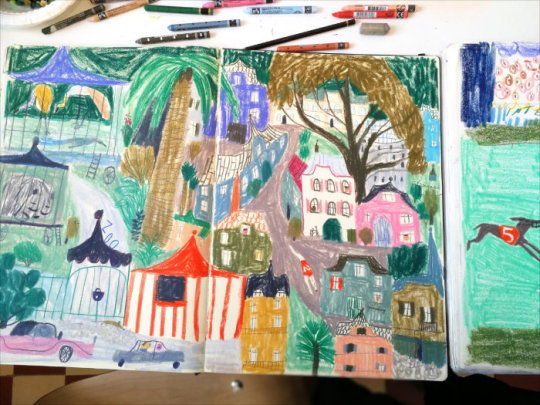


And maybe, in the end, it was just about finding the right tools for drawing. I remember an exercise from Kitty’s course, in which we were drawing, eyes closed, only feeling the paper, and the pen touching the paper. I really love how the crayon feels
on this particular type of paper. And funnily enough, to approach a visual task through some other sense than vision, helped me to create an image I felt was also interesting to look at.
Drawing in these notebooks was a very physical act: I filled five of them, drawing dozens and dozens of pictures. Also, scanning the images from these books required some patience as they are large, heavy and annoying to handle.

One of my crayon boxes is an old Russian box of chocolates given to me by Finnish writer Hannu Mäkelä. We have made many books together. He is also the creator of my favourite books from childhood: the ‘Herra Huu’ (Mr. Boo) series.
It is quite an exhausting method to search for the story through drawing. I guess I sort of needed to live the story myself, to know how it goes. There are a large amount of drawings that did not end up in the final book. But I think I still needed to draw them.
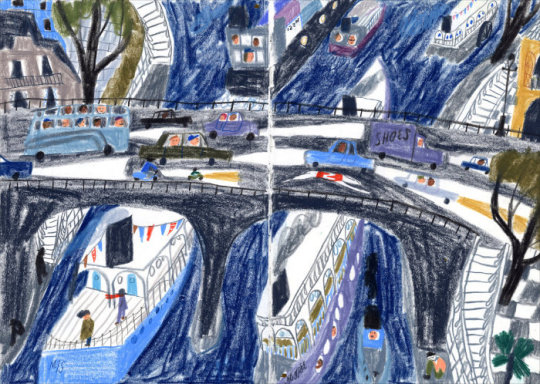
Life on and under the bridge in a sketch for ‘Rosie’s Journey’. Unpublished.

Rosie makes a leap. Unpublished.
I don’t like to put morals in my stories, because who am I to teach anyone. I would rather let people find their own meanings in the story. Maybe I am more trying to find out about things myself, I have questions in mind, not answers. And some questions get answers during the process, some don’t.
Maybe the questions in this story were: What is it to be happy? What is it to be free? What is keeping us from doing things we love? Why do we hurt, imprison and enslave each other: humans, animals? Can I do something? If I save myself, what happens to the others? What can be discussed in a children’s book?
In the story, I combined my own history and happenings during the past few years with the story of a real rescue dog, Rosie. My friend saved her from a bad place and took her to her home, where she lived peacefully with three other dogs. She was a hound dog, just like Rosie in the book, the most elegant creature I have ever seen. I thought that maybe through my experiences I was able to understand her, that there are feelings, desires, experiences, all living creatures share.
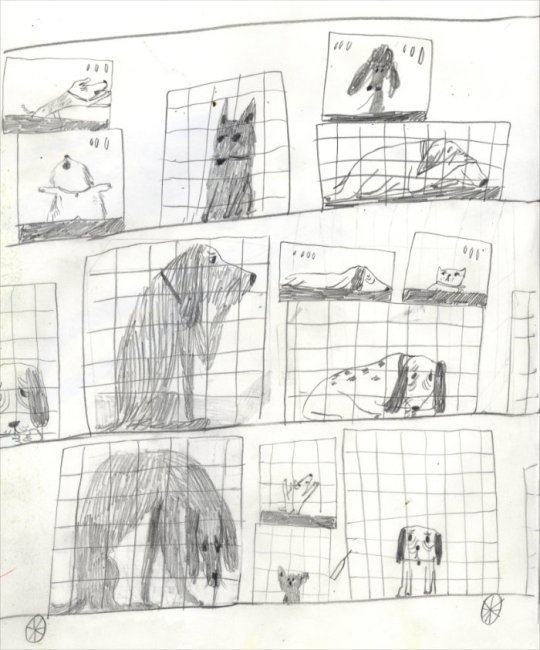
An early sketch for ‘Rosie’s Journey’.
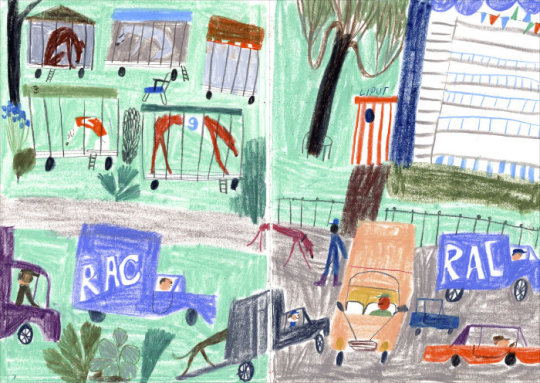
Race depot in ‘Rosie’s Journey’.
This I try to keep in mind when I draw and write children’s books: we share so many things, even with those we think we don’t share anything with at all. In a way I want to stress that, as much as we are and will always be focused on our own little lives, and the ups and downs in them, there are millions of others doing the same thing. And these ups and downs are very precious for those experiencing them. Kindness I also like a lot.
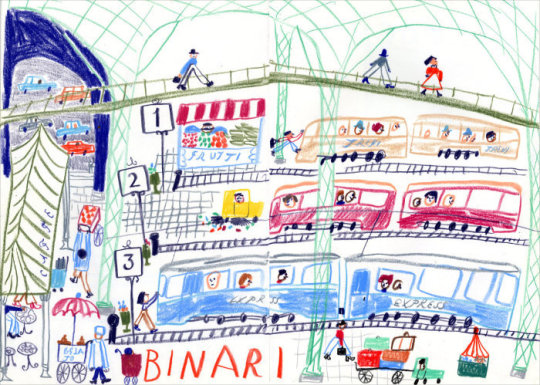
A sketch from my Italy notebook.
I love to watch people and animals doing their things. At the stations, in malls and supermarkets. On the streets and in the parks.

The train station in ‘Rosie’s Journey’.
I love to draw so many details in my illustrations that they often almost steal the story. Or they become the story, which actually I don’t mind. Something I really was fighting against in Rosie’s story as well was its linearity, the basic narrative structure it follows. Maybe I was trying to show options of where the story could go. Or that in a way our stories depend on other stories.

Spring in the city from my second authored picturebook ‘Suden hetki’ (Etana Editions, 2020).
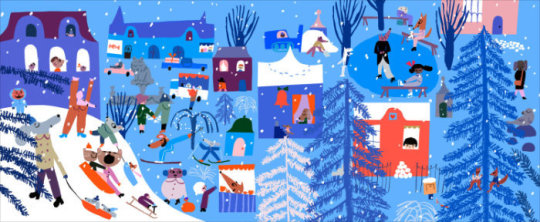
People and animals living their lives in ‘Joulu juksaa’ (Etana Editions, 2019), a Christmas story written by Juha Virta and illustrated by me.
For many of the ‘best’ pictures (in my opinion) in ‘Rosie’s Journey’ I don’t have different/alternate versions. The pictures came out in one moment, with no effort, no planning, no pain. I didn’t want to redraw them; they had everything I wanted in them. In a way, I had made it easy for myself, as the concept of the book is so clear: Rosie is just running through different sceneries and settings; all I needed to do was to draw them. The themes – freedom vs imprisonment – I had in my mind and they can be found in the pictures when you study them.
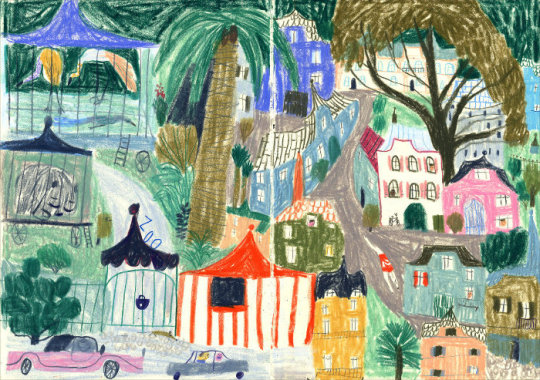

I said that creating the story was a challenge for me. Still, I guess I know what I like in a story. I wanted it to be a simple story. And I didn’t want there to be any big climax in the end. Rosie just finds two friends and they run together. As simply as it sometimes goes in life. But we made a little change in the way of telling things, when the dogs start to run together. Until this point, Rosie has been running alone through large panoramic scenes, in an undefined time. In this important moment, when the dogs find each other, the story time is slowed down, and cut into a sequence of images, like in a film.
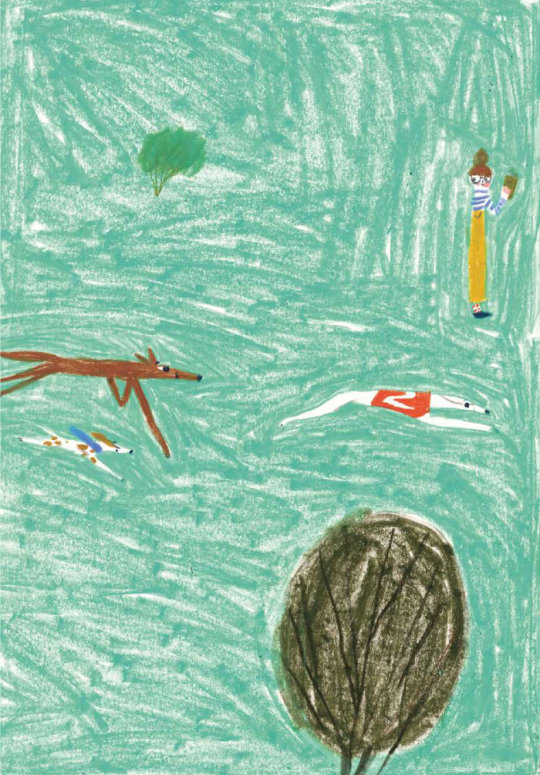
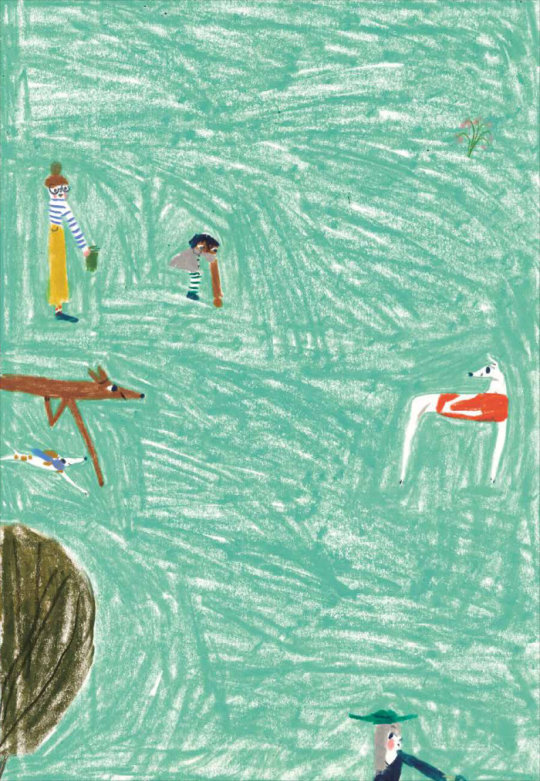
Rosie, Siiri and Iida in ‘Rosie’s Journey’.
In a way ‘Rosie’s Journey’ is a classical coming-of-age story, which pictures the growth of a protagonist to selfhood. I think the story became clear to me only when I made the last image. And it really is the last one in the book (although of this portrait there are at least five different versions). Also, the text on the last page was the last thing I wrote in the book. It came after long discussions with many friends, having gone through some small hardships in life, having tried terribly hard to find the right words, and then they came, immediately when I stopped trying:‘I am Rosie’, says Rosie. — ‘Shall we run again?’

There are so many ways we can express ourselves, and no way is above or below. I guess it depends on each of us which we find most important, or dear, easy or hard. I noticed that for me, when making this book, it was important to utter words as well. At first, we had thought with the publishers that it would be a book without words. But to dare to use words, and to use my own words, felt very important to me. Maybe for me, an essential way to express my thoughts and feelings about this life is to combine words and images. A long time after finishing the book, I found this drawing in my childhood home.
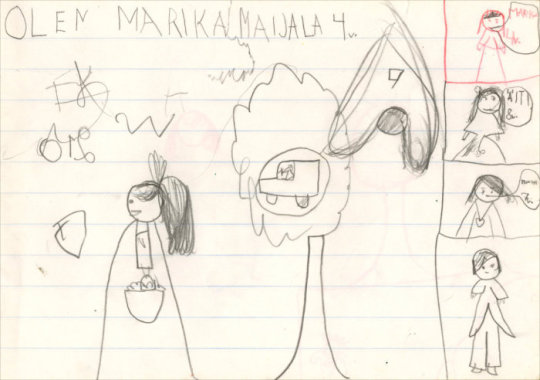
“I am Marika Maijala. I am 4 years old, my sister is 7 years, and my mum 8 years.”
I tried to draw a picture of my writer’s block. I am the tall creature piling heavy stones into the hot air balloon. A little girl asks, “What are you doing?”. I am making an easy thing difficult. Instead of just letting the balloon fly, I fill it with stones. Or, maybe I am making the impossible: I’m going to fly with a balloon that really cannot fly. I guess I can choose.

Illustrations © Marika Maijala. Post edited by dPICTUS.
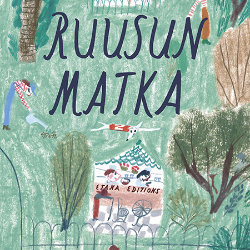
Buy this picturebook
Ruusun matka /
Rosie’s Journey
Marika Maijala
Etana Editions, Finland, 2018
Rosie is a race dog. By day she runs at the track. By night she sits in her little room. One day she doesn’t stop at the end of the track. She jumps over the fence and runs away. Rosie keeps running. Where does she go? A sensitive portrayal of a special journey by award-winning illustrator Marika Maijala. This large-format book is Marika Maijala’s debut picturebook as both author and illustrator.
Finnish: Etana Editions
Swedish: Förlaget
French: Hélium
Spanish: SM
Italian: Clichy
Korean: Munhakdongne
Chinese (Simplified): Gingko/Post Wave
Chinese (Traditional): Pace Books

4 notes
·
View notes
Text
Ingrid Godon
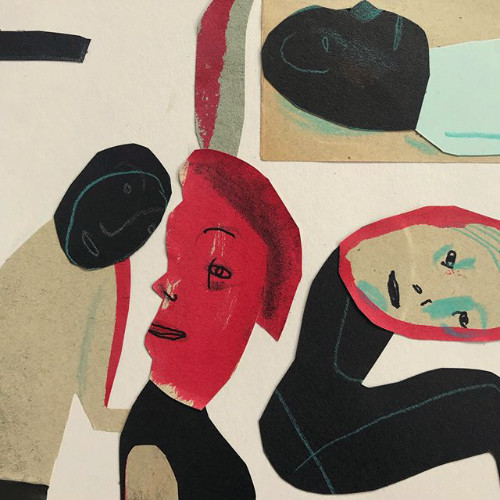
In this post, Ingrid talks about her working process, and she shares stunning illustrations from some of her books, including the ‘Ik Wou’ trilogy with words by Toon Tellegen, and ‘Dantesken’ which features over 600 pages of autonomous drawings. She also shares wonderful fabric sculptures, ceramics and textile art.
Visit Ingrid Godon’s website
Ingrid: When I was a child, I was always watching. From a distance. Who did what, and how they did it. I drew. Not what I saw, although I did store the images in my mind. One day, they would come out. Drawn. School didn’t work out, but I kept drawing. I met Rik Van den Brande, an illustrator and teacher, at the academy. He took me under his wing and I kept drawing. I soon got assignments as an illustrator. I was working! Drawing became my work.
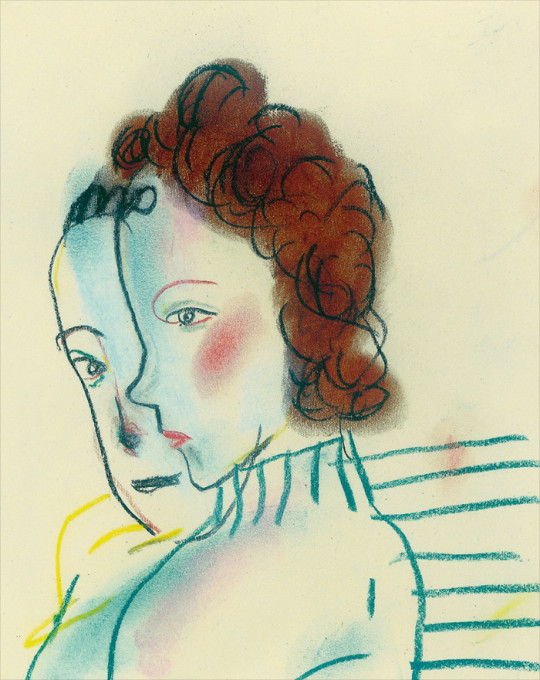

Educational publishers gave me assignments. This led to the creation of ‘Nellie & Cezar’ in 1995, which, via an educational detour, turned into a short book which remains popular with toddlers and teachers to this day. It became a success in many versions, animated movies were made from it, and Nellie & Cezar became great puppets. And I kept drawing, especially for children.
I made ‘Waiting for Sailor’ in 2000, and took the initiative for a story of my own for the first time. My dear colleague André Sollie wrote my story and I drew. That was the start of an international story. The book won many awards, and was published in English, French, German and Korean.
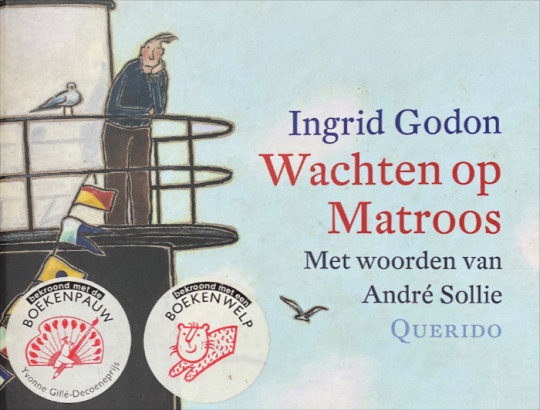
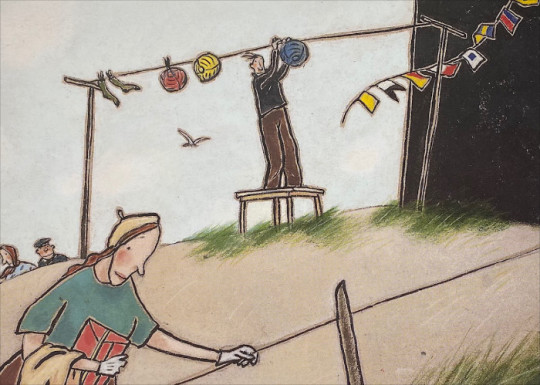

Foreign publishers were now asking me to make books for them as well. Often the German, French, Swedish or English books were never even published in Dutch. I received more awards, and in 2020 I was longlisted for the ALMA for the fourth time.
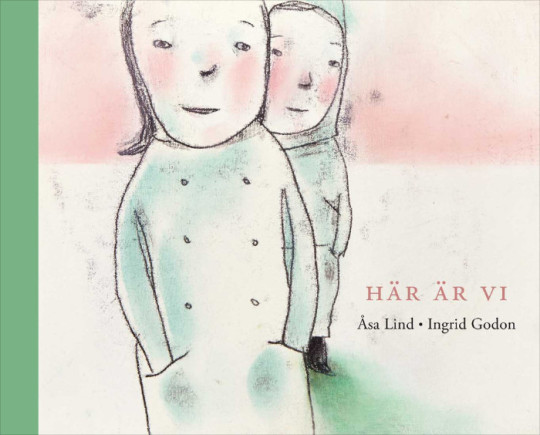


Photography has played an important role in my life for a long time now. A series of photographs could grab me, and I could go to work with it. For instance, I became enthralled by the work of Belgian photographer Norbert Ghisoland. He made portraits of ordinary people in his studio in the Borinage, an industrial region, each of them dressed to the nines, but there is a great deal of misery behind the well-groomed facade. This became the foundation for my work which was mainly aimed at adults: IK WOU (I Wish). Toon Tellegen wrote the text for the first series of portraits for this book; 33 portraits of serious people. Dressed to the nines. I drew them.
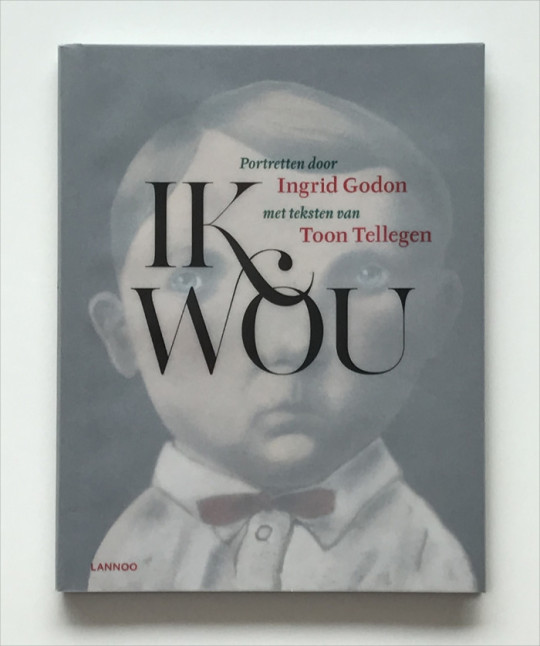

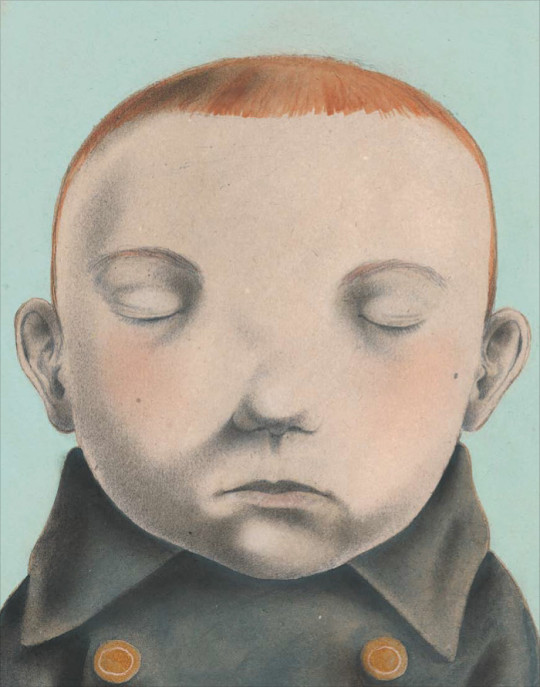

IK WOU became a trilogy, with IK DENK (I Think) and IK MOET (I Must) as parts two and three.

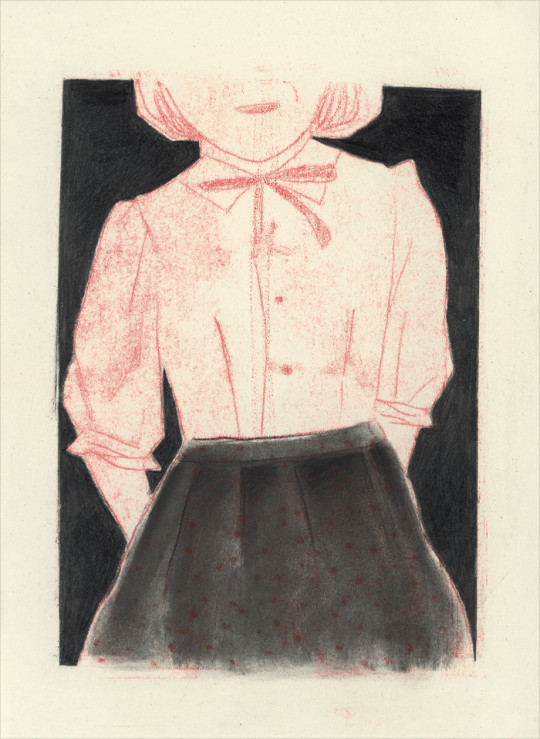



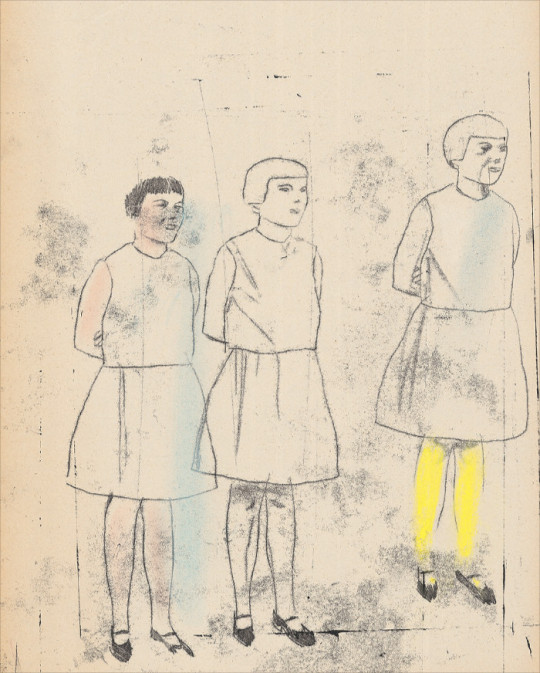


The trilogy has been successful, not just in Belgium and The Netherlands, but also in the French and German-language regions. It also led to beautiful exhibitions, with a large exhibit in Frankfurt being the tentative highlight. In Cologne, I displayed the works from IK WOU in combination with the children’s portraits of August Sander in 2016. I WISH, the American edition of IK WOU, was published in the spring of 2020. At the end of 2020, its portraits were supposed to be in an exhibition at C.G. Boerner in New York City, but this was cancelled due to Covid-19.
2018 was an important year for me. For the first time, I made a book without a story. Unless the viewer finds a story in there, of course. DANTESKEN: over 600 pages of drawings, an explosion of what goes on in my head. For me as an artist – because that is how I finally started seeing myself as well – this was an important step. More than ever before, I realised the importance of entrusting the paper (or canvas or wood or printing press or clay or fabric) with lines and shapes. I can do no different. I keep drawing.
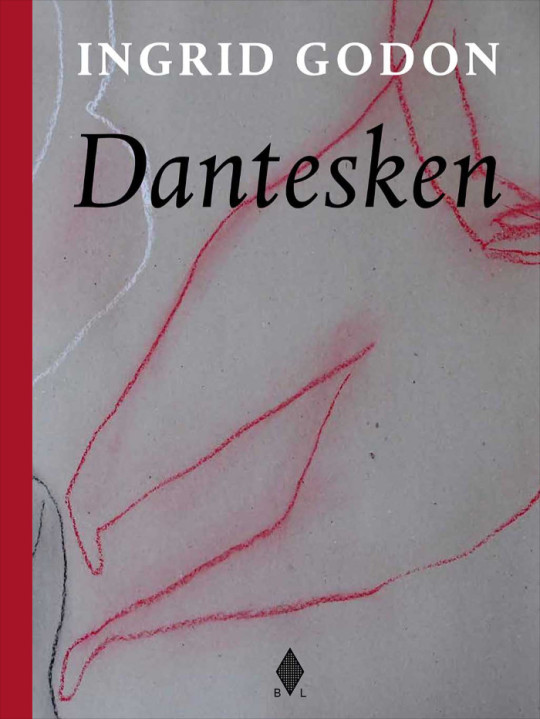
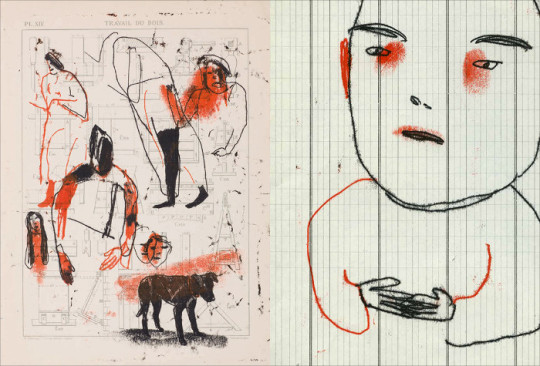

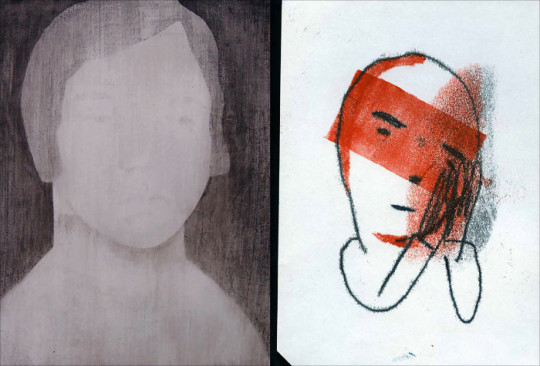

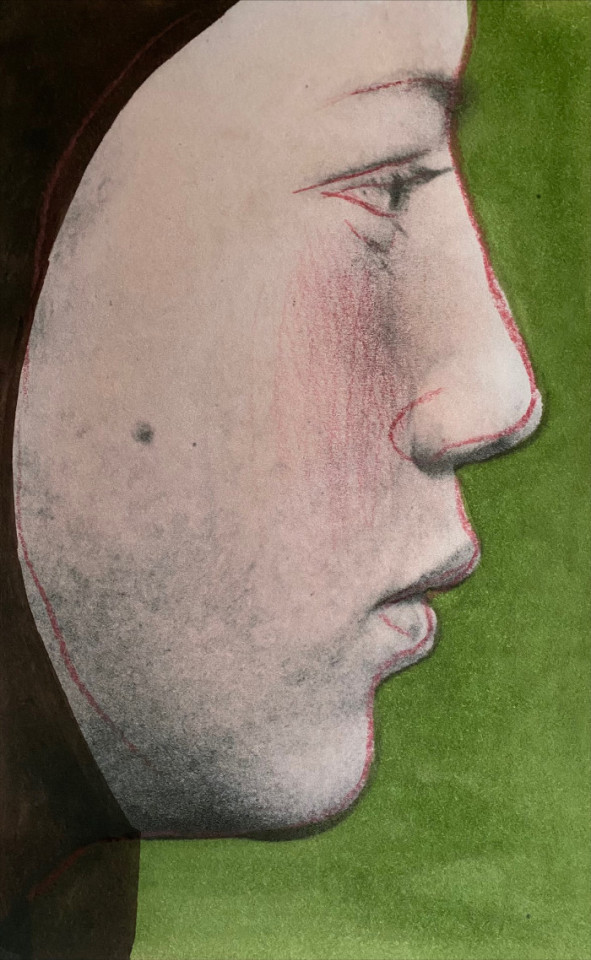
Recently, I started making little sculptures out of fabric: three-dimensional drawings, like puppets stepping out of my drawings.
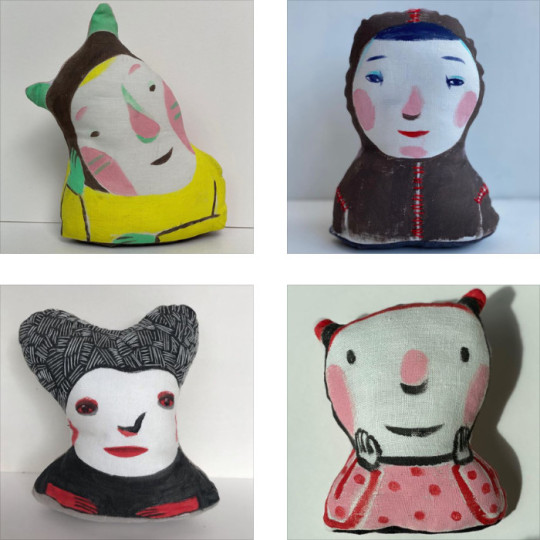
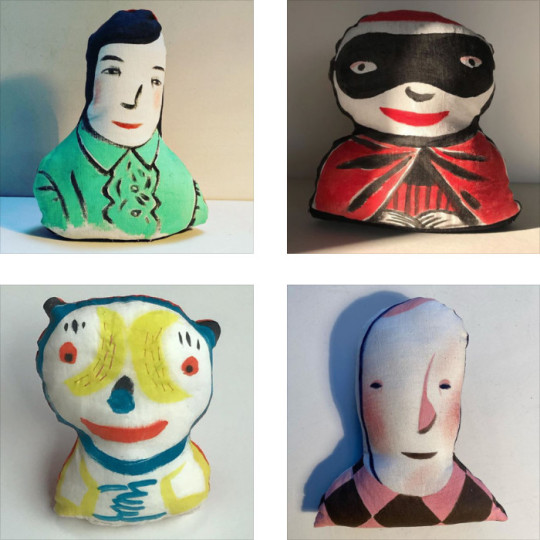
I’ve also been working more and more with ceramics and textile art.
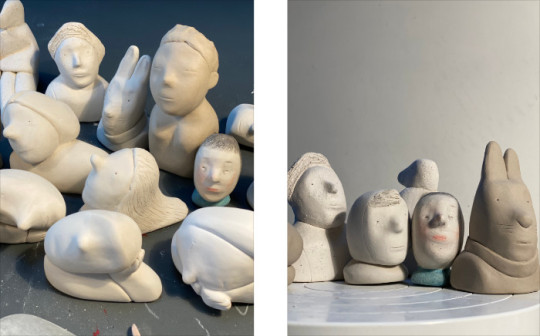
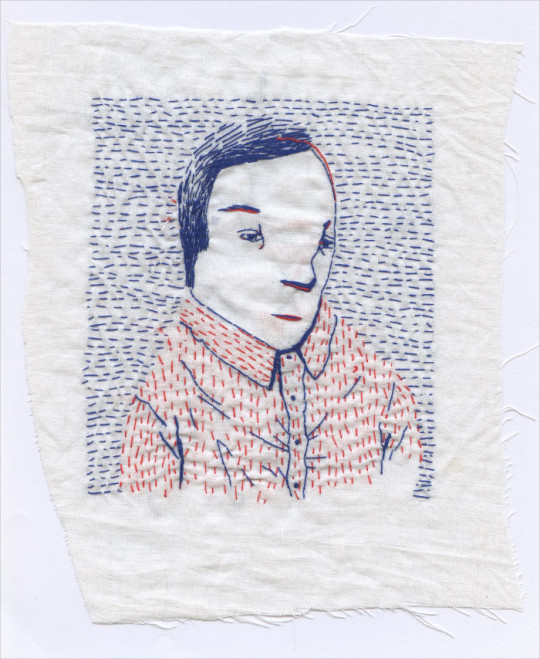
My work is becoming increasingly autonomous, and diverges more and more from merely illustrating. Drawings live lives of their own, become works in their own right, sometimes with a story, sometimes starting from a story, sometimes from nothing.
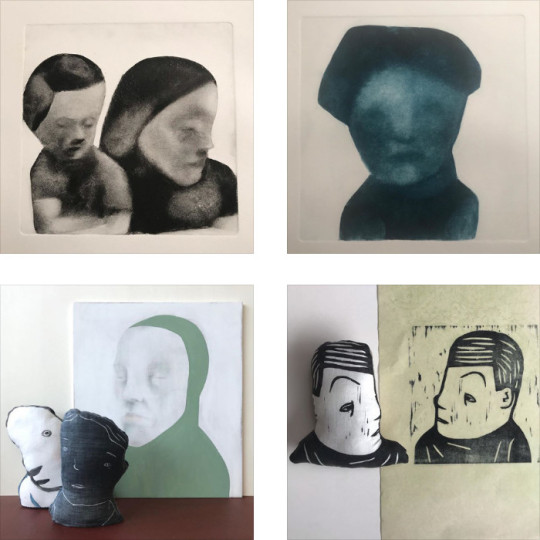

I have no style; I have the Ingrid Godon style. I’m continuously looking for the right way to tell my story, rustling around in my box of materials, alternating between pencil and paint, covering it with a paint roller, cutting into wood and printing it, scribbling on photographs. I keep searching.
I mainly draw people who – like me – look in all directions and are curious about what goes on in front of them. They sometimes look away, but they are always very present. I have at times – on request – drawn landscapes. But even then, I could not resist placing a person in the landscape here and there. Looking, like I do. I search continuously, take different paths, and keep looking. Full of wonder.
In the meantime, I keep working on commissions, I take the initiative to make books, I keep searching for the right pen line or brush stroke, the images keep flowing from my head, and I keep drawing. I draw and I draw.
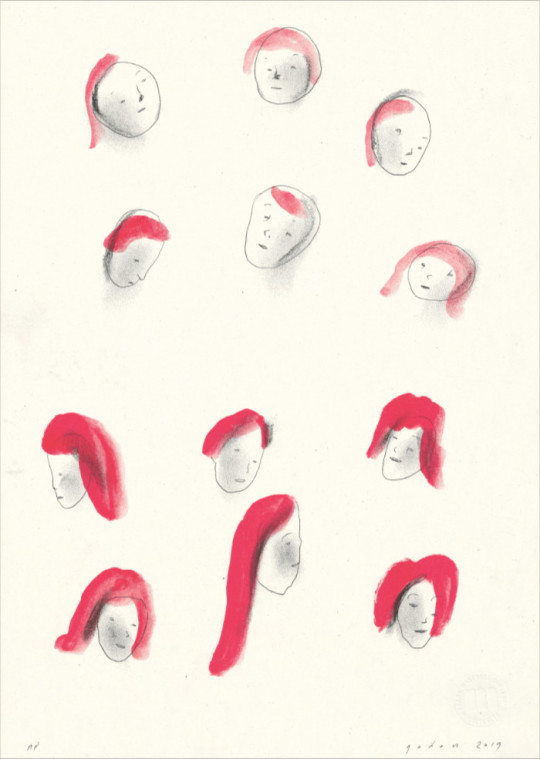

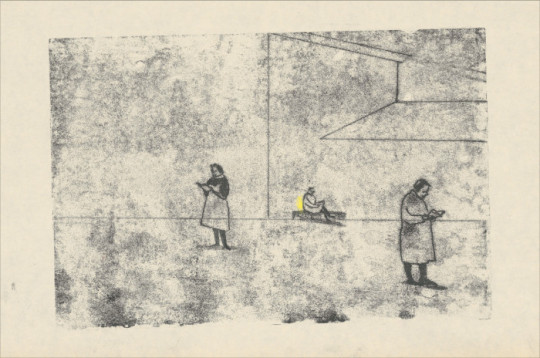
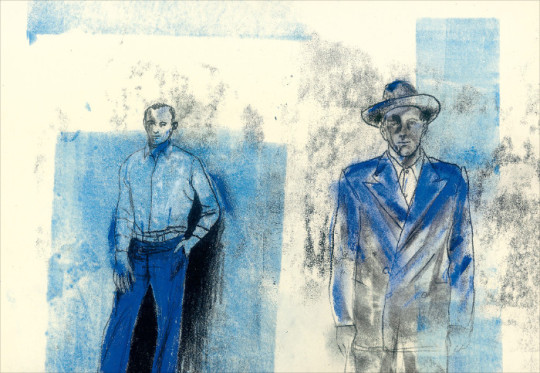
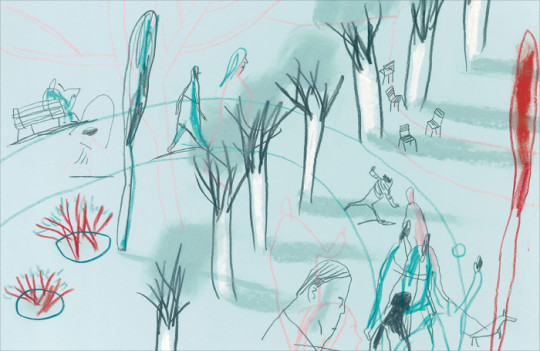


Illustrations © Ingrid Godon. Post translated by Gengo and edited by dPICTUS.
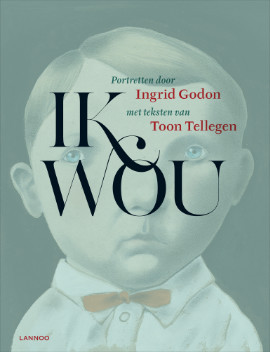
Buy the English edition
Ik Wou / I Wish
Ingrid Godon & Toon Tellegen
Lannoo, Belgium, 2011
‘Pairs portraits with poetry to articulate wrenching individualism, yearning, humour, desires, and pathos. This probing psychological journey makes for an exciting exploration in empathy.’ —Kirkus Reviews
‘Each face is round as the moon, with small shining eyes that sit curiously far apart... One boy wears a bellhop’s uniform; another, a red jersey and cap... By voicing the fears, angers, and secret desires of the figures, Tellegen spurs readers to embrace those of others, and their own.’ —Publishers Weekly
Dutch: Lannoo
English: Elsewhere Editions
German: Mixtvision
French: La joie de lire

Buy this book
Här är vi / Here we are
Åsa Lind & Ingrid Godon
Lilla Piratförlaget, Sweden, 2017
What happens when we become us? And how do we look at them? Belonging and not belonging is the theme of this poetic picturebook. Åsa Lind is one of Sweden’s most loved authors, and Ingrid Godon is an award-winning Belgian illustrator. Together they have created an unforgettable story about us and them.

Buy this book
Dantesken
Ingrid Godon
MER / Borgerhoff & Lambrechts, Belgium, 2018
Who are the creatures that populate Ingrid Godon’s drawings? They are people, sure. But what is there of a person who only exists as an image? In this book we travel through the works of a gifted artist, illustrator and image maker.
Who will we meet? Who, or what, will we recognise? A book with 800 images which speak for themselves.
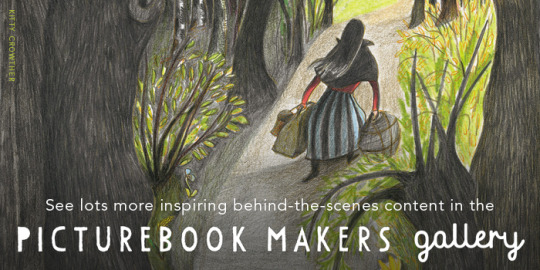
0 notes
Text
Axel Scheffler
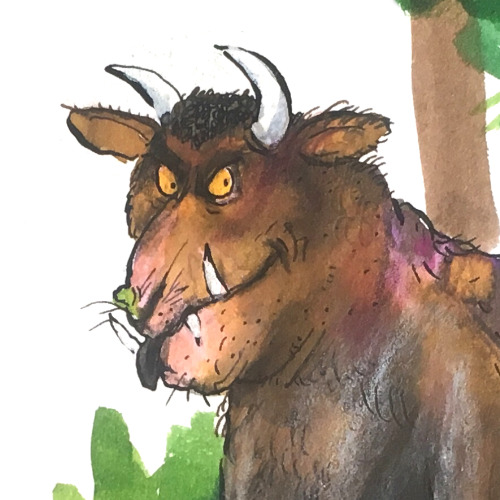
In this post, Axel takes us on a journey through his art studio and career. As well as sharing wonderful development work from some of his much-loved picturebooks, he shows us unseen sketchbook pages, early illustration commissions, etchings he made as a student, and his recent work to educate children about the coronavirus.
Visit Axel Scheffler’s website
Axel: I’m not really sure how many books I’ve illustrated in the 30+ years that I’ve been working. Over 150. I mostly work for the UK market, but occasionally I do books with German publishers. Not picturebooks though, so nothing that collides with the co-edition market.
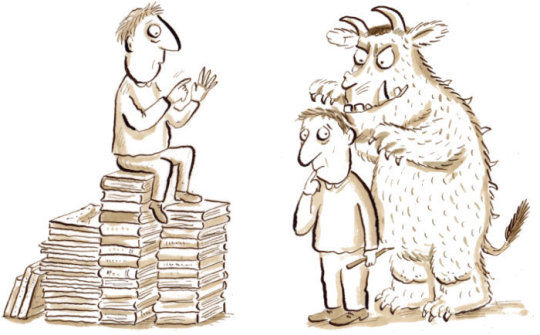
Each of the boxes you see here contains one of my books: the sketches, illustrations, dummies, alternate versions of covers, everything.

I organised these boxes with Liz, my assistant, to have all the main books there so we can find things for exhibitions. There’s still lots of drawings in these boxes which aren’t sorted yet. Liz is such a great help, but it’s very difficult for me to keep on top of everything. I think I would probably need two Lizes, or perhaps three.
So yes, I don’t really know where to begin... I’ve got endless sketchbooks and little drawings on paper. I’ve got some really old sketchbooks I could show you.
Shall we start with The Gruffalo?
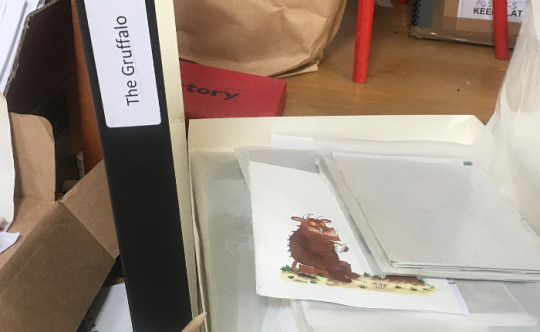

My early sketches of the Gruffalo were thought by my editor to be too scary for small children. So I had to make him a bit rounder and more ‘cuddly’. Initially, I‘d also thought that all the animals would be wearing clothes, as they often do in picturebooks. But Julia had different ideas, and to be honest I was relieved. How would I have dressed the snake?

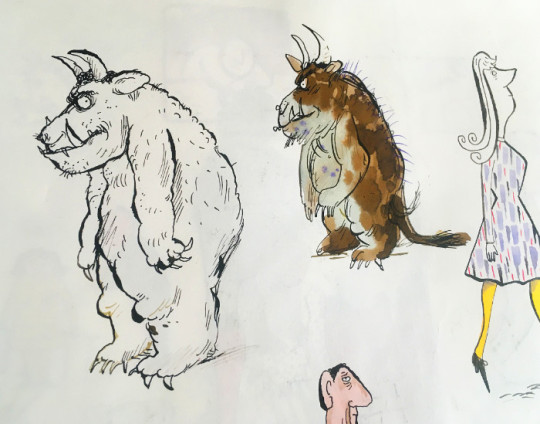
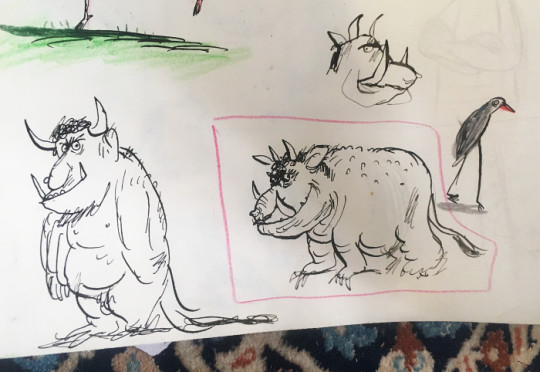
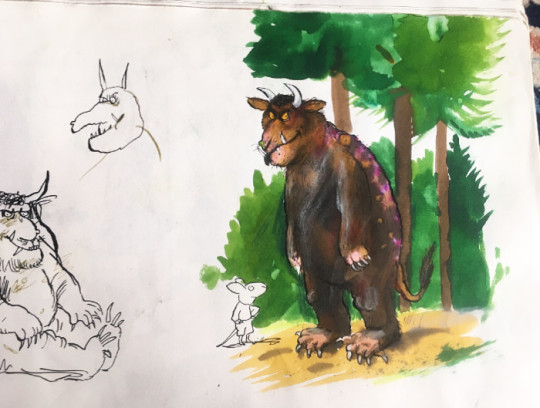
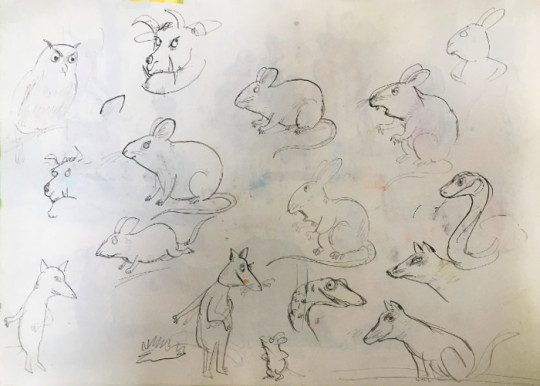
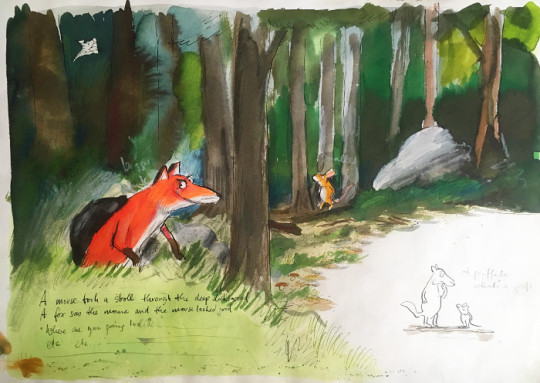



Here’s some spreads from the dummy...
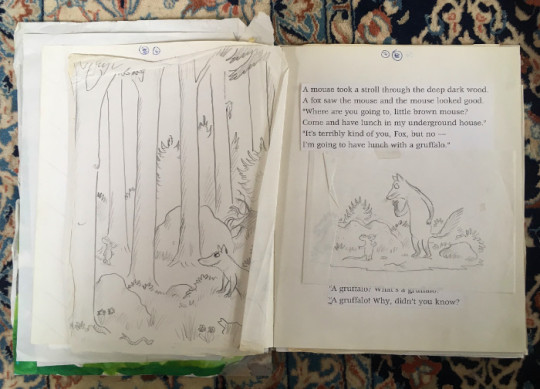

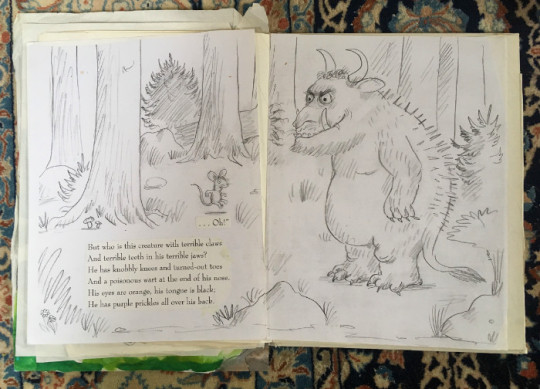
I tried a lot of alternate covers for this book; I think there were twelve in total. There’s some where the Gruffalo doesn’t even feature on the cover.
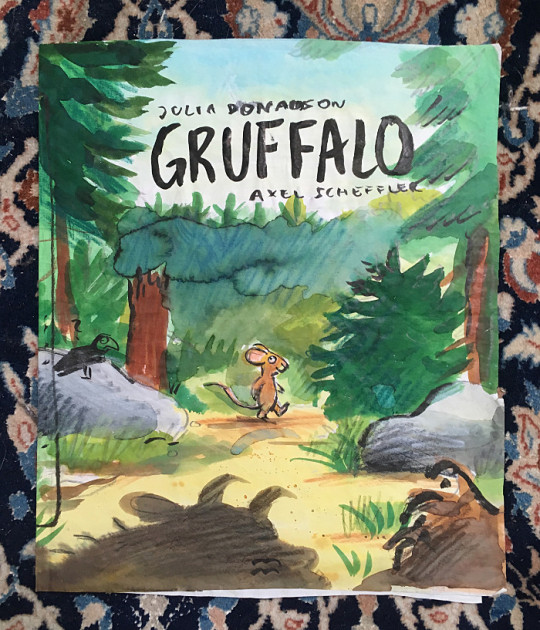
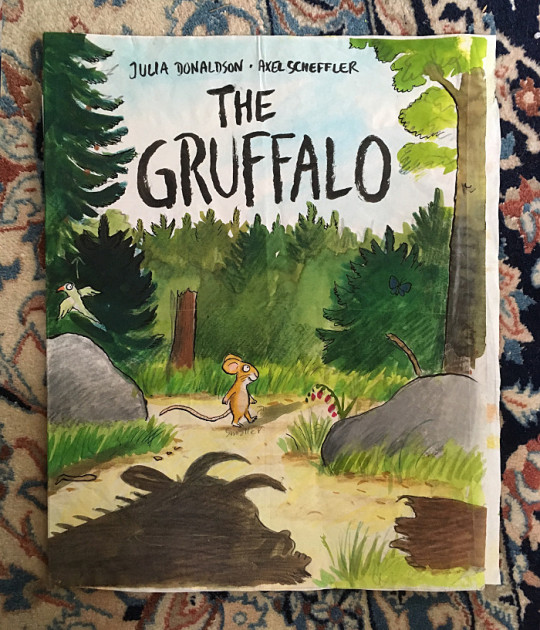
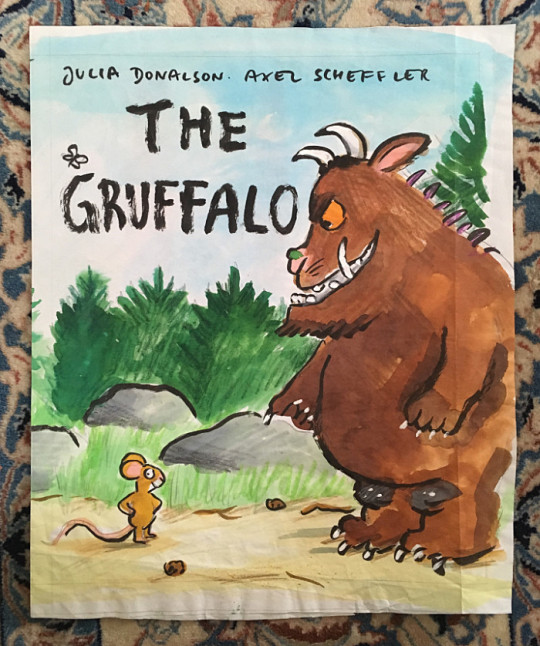
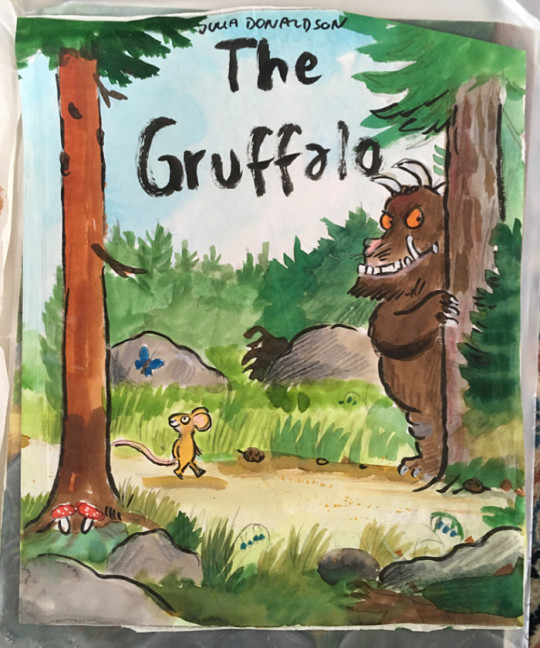
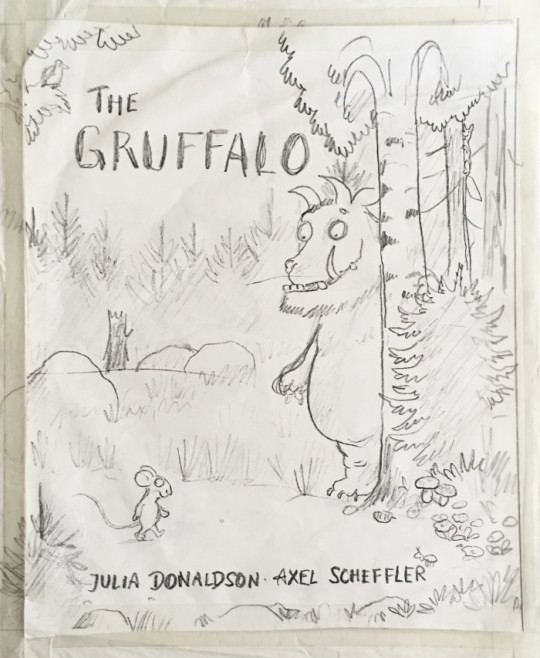
My latest book with Julia is called ‘The Smeds and The Smoos’. It was quite nice to work on because it’s so different from the other books we’ve done together. The text is a bit like a mixture between Dr Seuss and Lewis Carol; it has this nonsense element. But it’s basically Romeo and Juliet in outer space.

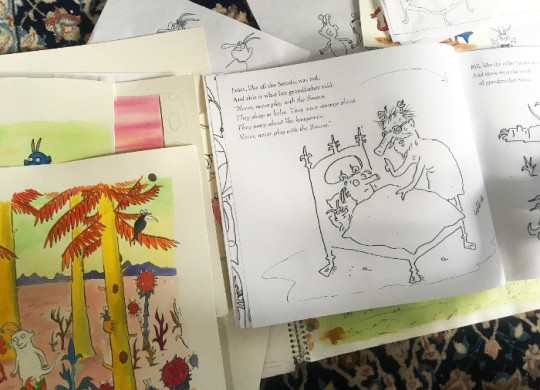
It’s an alien story, so I didn’t have to draw any rabbits or squirrels for a change, and I could invent more. I had more freedom. But like always, I got bored with drawing the same characters over and over again. But that’s picturebooks.
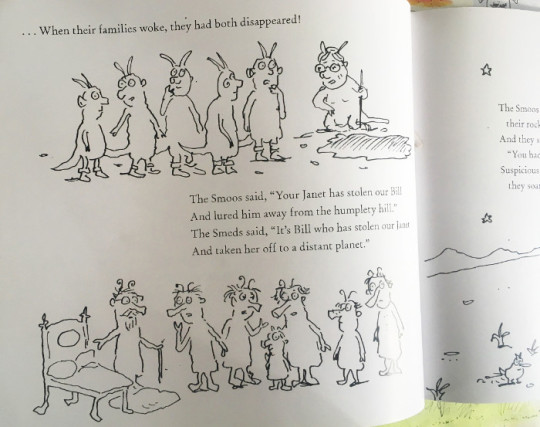
There was quite a lot of development work in the case of this book. But when it’s a story about a fox or a squirrel, I don’t do this kind of stuff. Over the years, it’s become much quicker and easier working on my books. I do far less research than I used to. Now I generally just do a quick pencil sketch then go straight to artwork.
Sometimes I have to start again because things go wrong though. This was a finished piece that was abandoned. I think I suddenly thought that the rocket was far too big or something. I do that; I work on something for ages, and then I suddenly look at it from a distance and realise that something needs redoing.
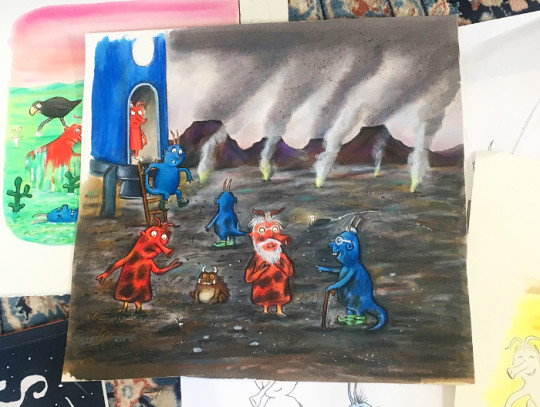
Did you spot the little Gruffalo in this picture? Since ‘The Snail and the Whale’, I’ve hidden a Gruffalo in each of my books with Julia (not ‘The Ugly Five’ though).
For almost all of the books Julia and I have done together, our editor has been Alison Green. We’re an old established team. And I’ve always worked with the publisher Kate Wilson; I followed her from Macmillan to Scholastic, and then to Nosy Crow. Julia moved from Macmillan to Scholastic, and decided to stay there. So Julia and I have some of our joint titles with Macmillan and some with Scholastic. Julia does books with other illustrators for Macmillan, and I illustrate other books for Nosy Crow.
People often ask me which of the books I’ve done with Julia is my favourite. It’s quite hard to choose, but I enjoyed working on ‘The Smartest Giant in Town’. I liked the way I could do a crazy world with animals, giants, fairytale characters, everything mixed together without anyone caring or questioning it. I’ll show you a few things from the box...
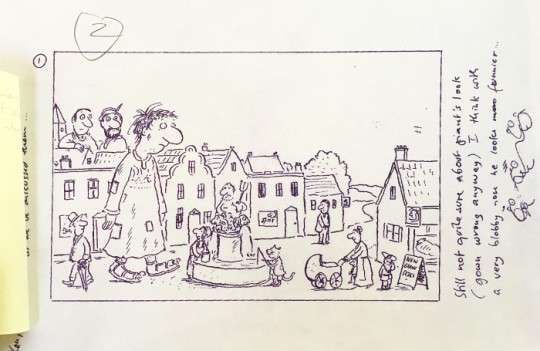


For this book, the cover was changed at the last minute. The original design had the title written on a poster stuck on a brick wall, but the sales people said they wanted a landscape, so I did another one. Years later, they used the original design for a new paperback edition, so it wasn’t completely wasted in the end.
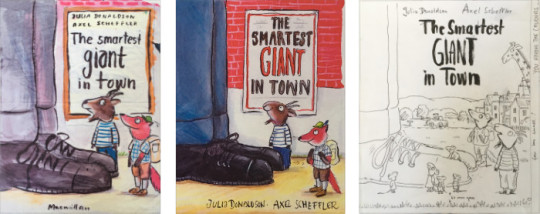
I mentioned my endless sketchbooks earlier. I’ll show you a few of them. This was mainly me playing around without thinking about what I was doing; it wasn’t a conscious thing.


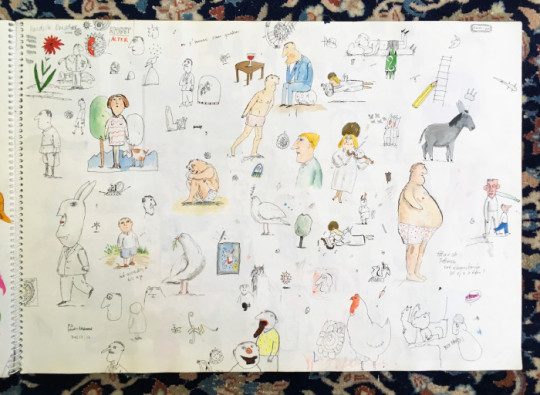
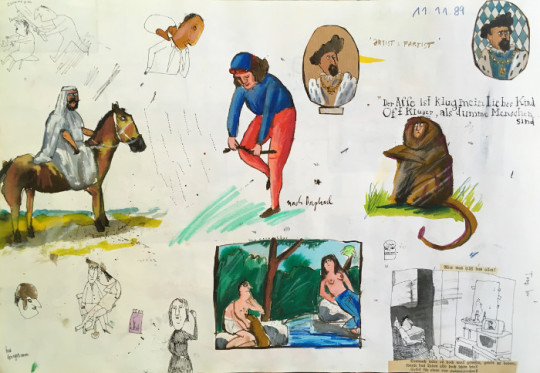
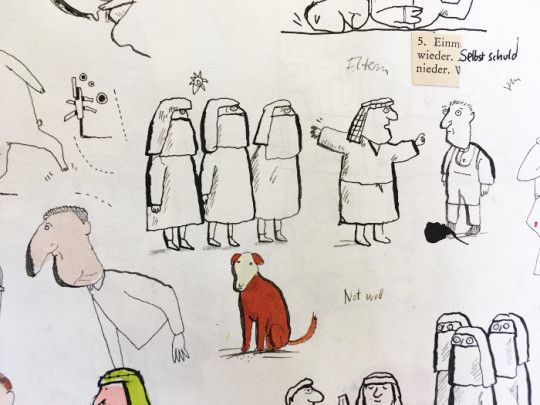
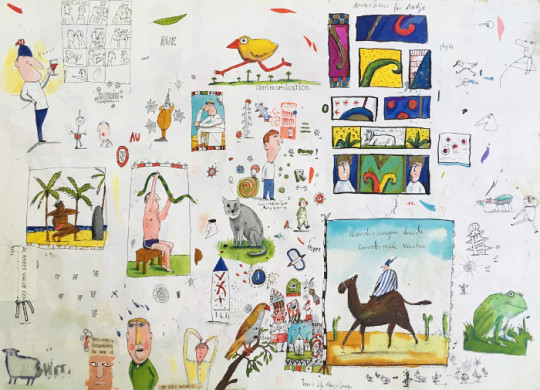
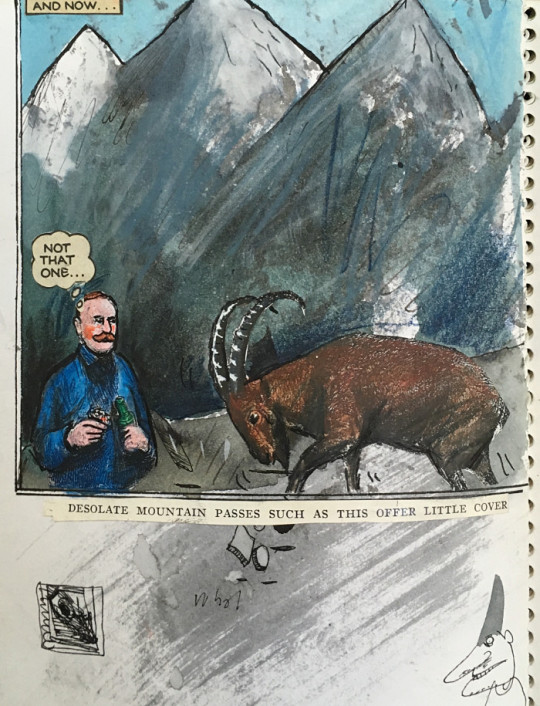
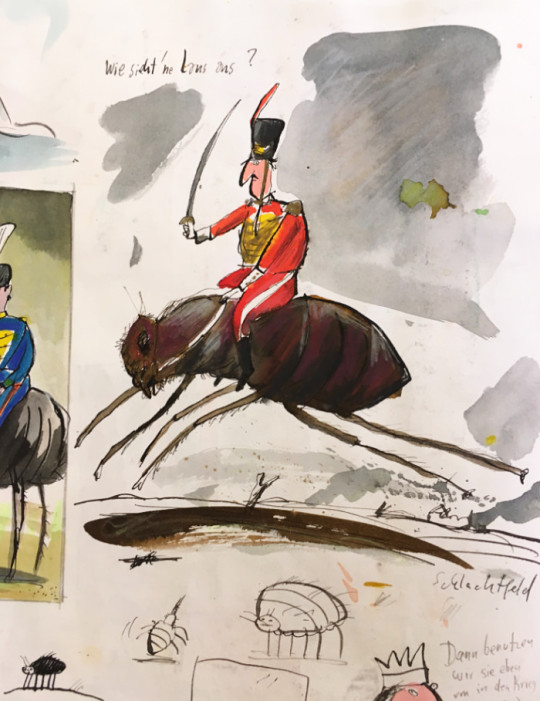
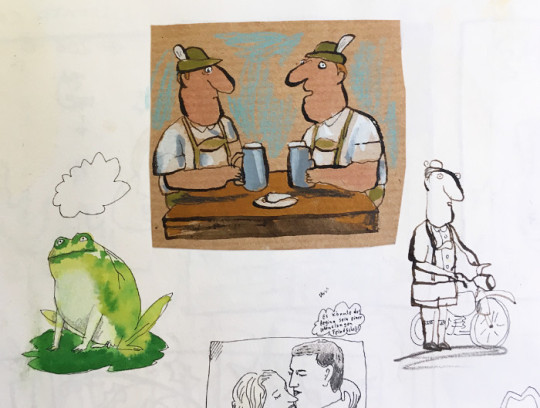
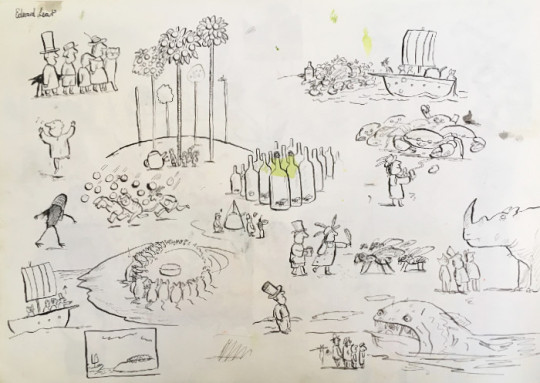

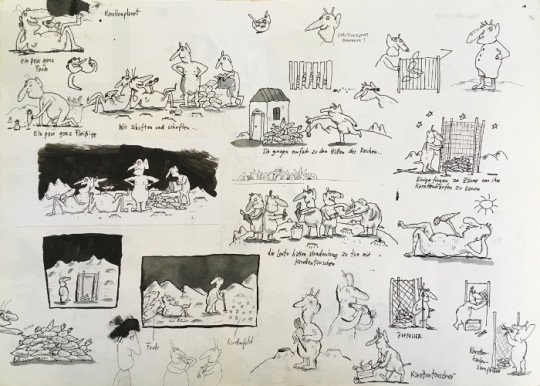
I haven’t looked at these sketchbooks for ages. It was such a long time ago. I don’t work in sketchbooks like this anymore, and I no longer doodle. But for fun, I make illustrated envelopes for friends.
I often think about doing a book with just pictures, but I’m always too busy doing other things. Posthumously, perhaps there will be time to do this. I’d also love to experiment and be more spontaneous; it’s been my dream for decades to do something completely different. But when I receive a book project, I always feel under pressure to finish it, and I’m always late with everything, so I end up doing it the way I’ve always done it.
This is my drawing table, which is and always has been too small and too messy. I think I have to accept it will always be this way.
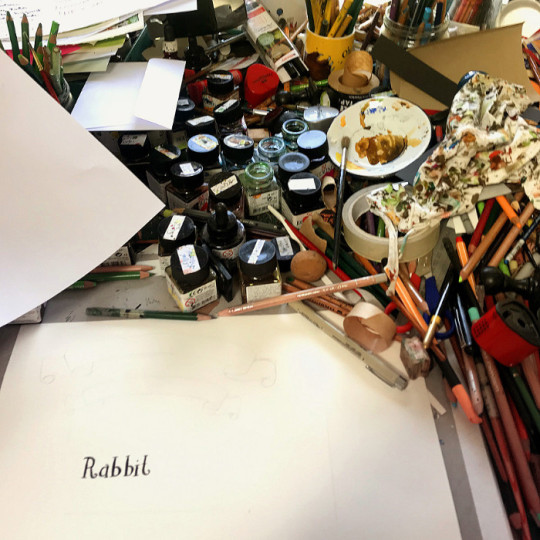
I use Saunders Waterford paper for my illustrations. It’s funny how we all have our special paper. My rough sketches are often quite small, so I have them blown up to the correct size. Then I trace the sketches on a lightbox onto my watercolour paper. After that, I draw the outlines in black ink with a dip pen. I colour everything with Ecoline inks using brushes, and then coloured pencils on top of it (I use Faber Polychromos and Prismacolour crayons). I might then need to redraw some of the black lines, or use some white gouache for highlights.

I studied History of Art in Hamburg, but left before graduating. I realised this wasn’t what I was good at; I’m not an academic.
Then I had to do my alternative service as conscientious objector. Sixteen months. There was still conscription then; that’s how old I am. I worked with mentally ill people in their homes. It was during this time that I had a friend studying ceramics at Bath Academy of Art in England. I went to visit her. I really didn’t know what else to do, so I thought maybe I could move to Bath and go to the art school. So this is what I did. The course was Visual Communications, so it was design, printmaking, photography, all that stuff. But I realised I only wanted to do illustration.
I’d gone to art college hoping to learn something. I don’t think that necessarily happened, but drawing intensively for three years was, I think, what I had needed to do. I don’t remember actually finishing any projects though.
Here’s some drawings from my student sketchbooks. I did lots of observational drawing back then, which I don’t anymore. I did it then because they told us to. I’m an obedient person!
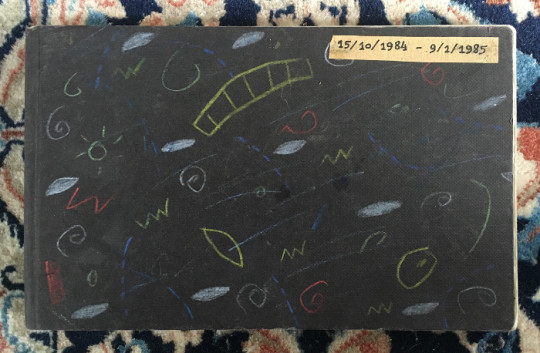
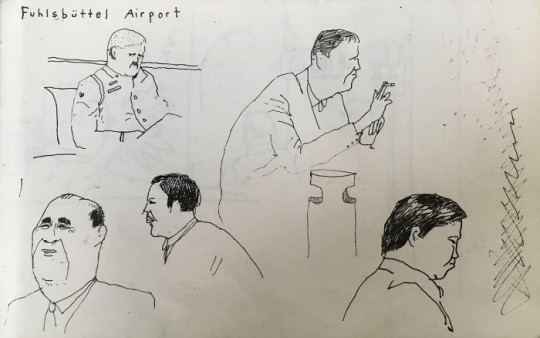
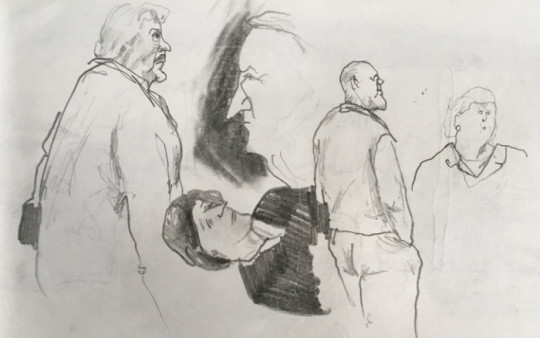
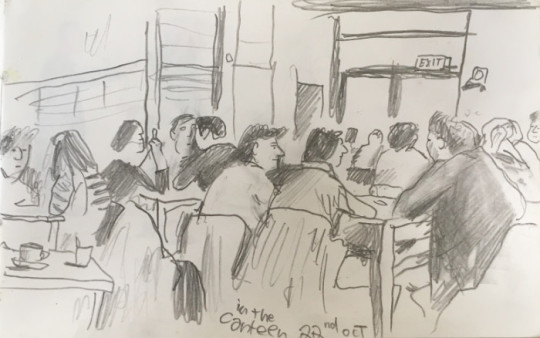
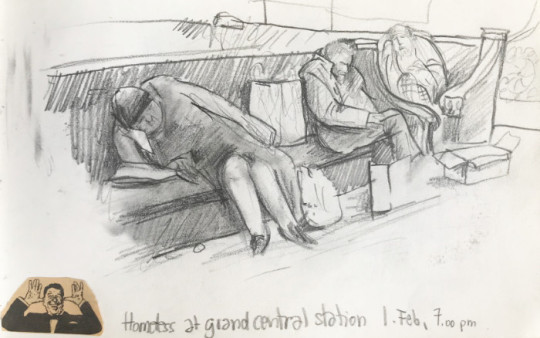
While I was a student, I did an exchange in New York: Cooper Union Art College for three months. These drawings are of Jewish immigrants, meeting for coffee. It was 1984, so many of them were still alive; refugees from Germany or Austria. I heard them speaking German, so that’s how I knew.
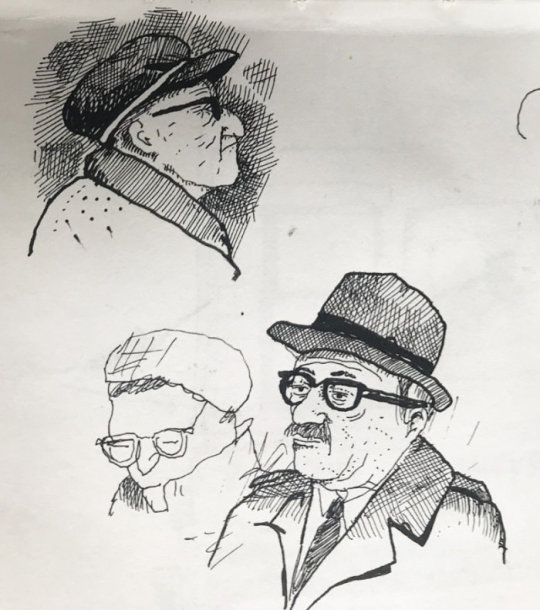
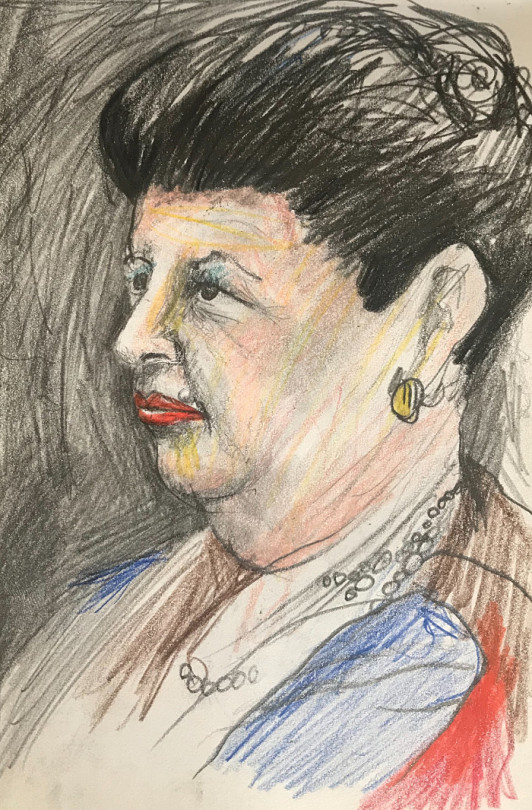
Sketchbooks are such a good way of memorising things. Nobody really knows about these sketchbooks; I used to take them to interviews, but they’ve been hidden away for years.
After I graduated, I moved to London and took my portfolio around. My art teacher had suggested I should do this to get work, so that’s what I did. In those days, you had to ring them and ask to come around. I got two commissions straight away, and it’s been busy ever since, really. I’ve always had something to do.
Here’s some of my early commissions. Starting from 1985, I guess. Very pointy noses...
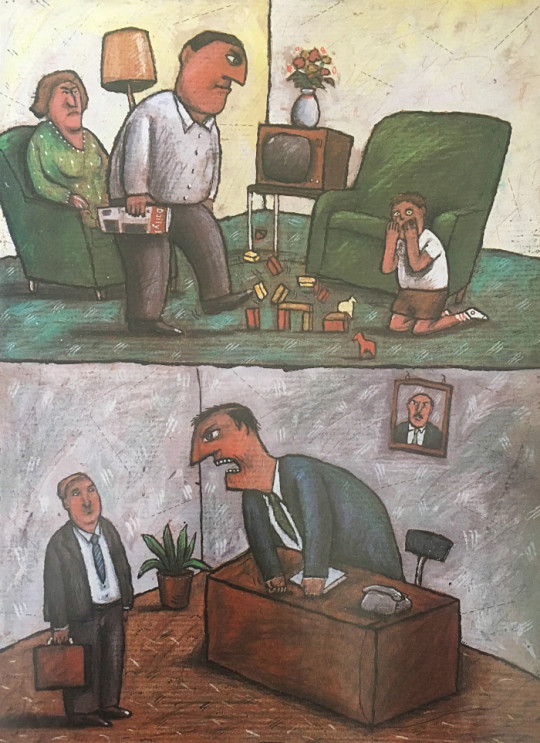
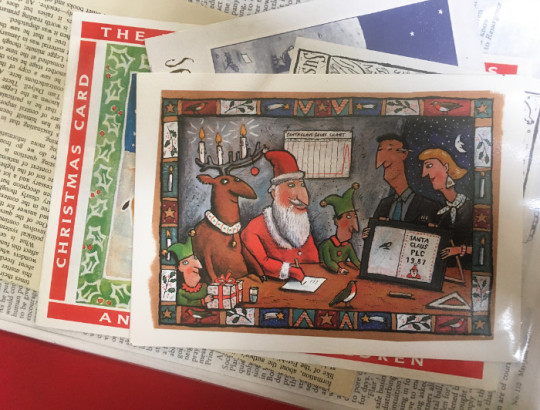
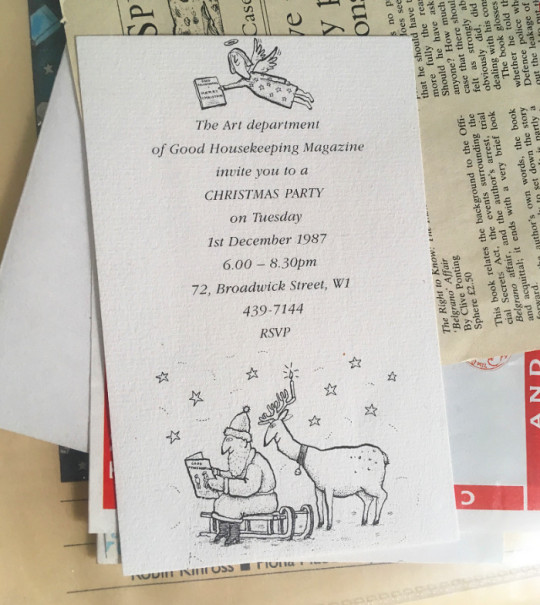
I did so much of this kind of work. It was a good way of earning money quickly. Occasionally, I still do editorial. I did some Brexit drawings for the remain campaign. Sadly, it didn’t help. Maybe I wrecked everything!

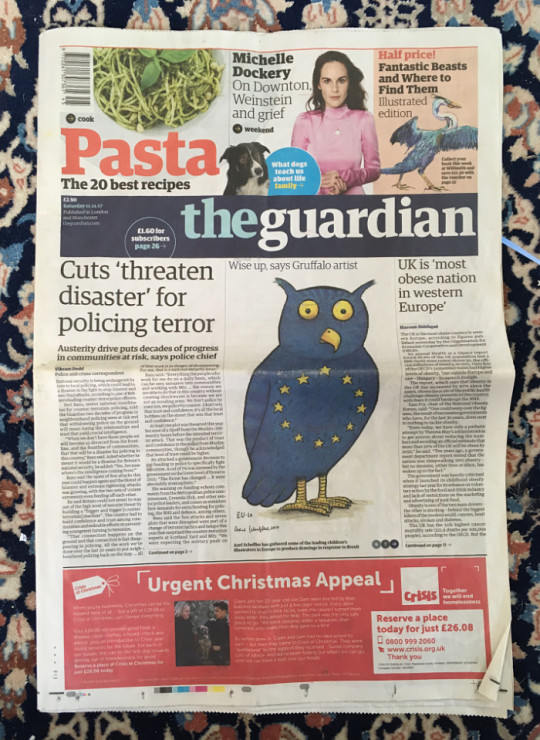
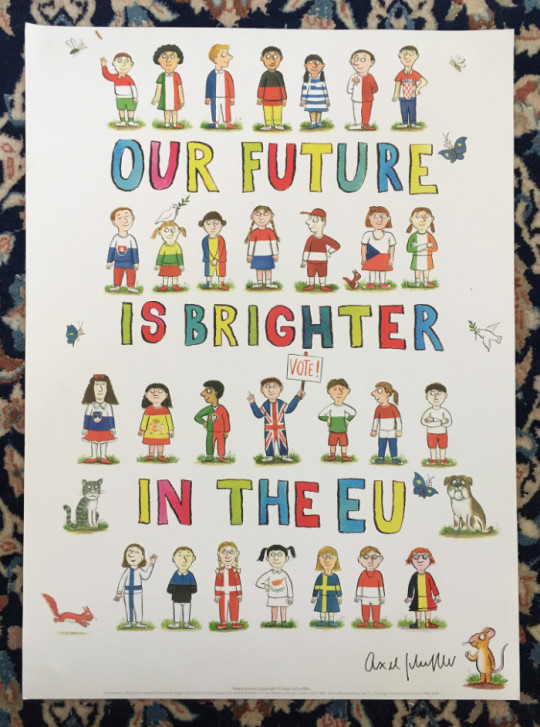
I’ll say a few words about the KIND book... 38 wonderful artists donated a picture to illustrate some of the many ways children can be kind. Such as sharing their toys or helping people from other countries to feel welcome.
One pound from each book sold goes to the Three Peas charity, which supports refugees from war-torn countries. It’s been a big success so far, and Three Peas has received a lot of money from sales in the UK and co-editions.
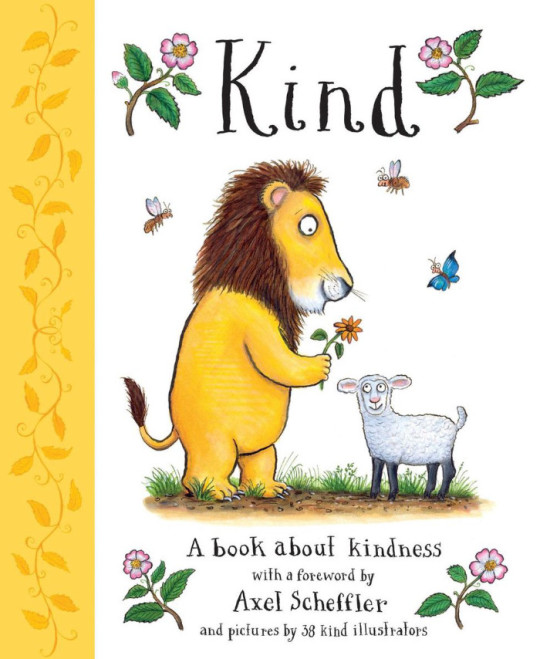

I’d quite like to do the UNKIND book next! I think illustrators would probably enjoy that, but I don’t imagine it would sell very well.
And now for something completely different! Some etchings I made when I was a student.
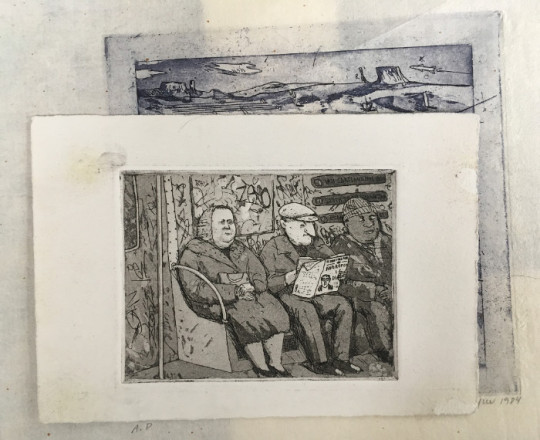


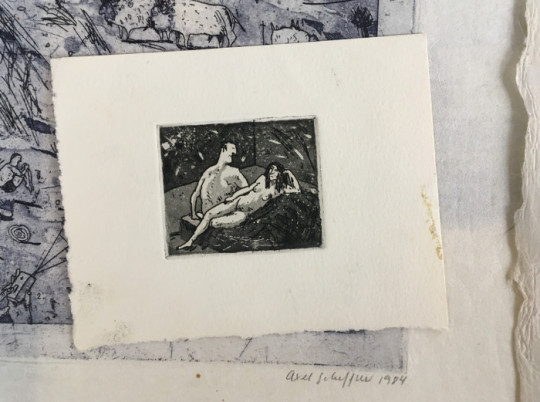
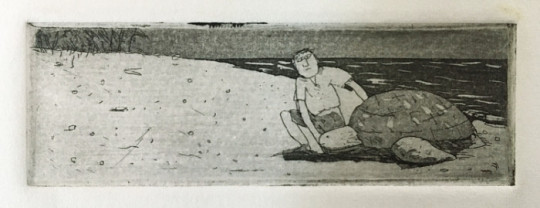

People often ask me which illustrators I’m inspired by. I don’t seek any direct influence on my work, but I’ve always said that Tomi Ungerer had the greatest influence on my approach to illustration. Although his style is quite different to mine, this humour and wackiness is something that has always appealed to me. And the details.
William Steig is someone I got into later, when I was already illustrating. And Edward Gorey of course. And Saul Steinberg. I think the Czech artist Jiří Šalamoun is wonderful. And I like Eva Lindström from Sweden a lot. She’s so great.
Okay, to finish with I’ll talk about the coronavirus work I’ve been doing...
I asked myself what I could do as a children’s illustrator to inform, as well as entertain, my readers here and abroad about the coronavirus. So I was glad when Nosy Crow asked me to illustrate a book on the subject. I think it’s extremely important for children and families to have access to reliable information in this unprecedented crisis.
You can download the free digital book in English here, and in over 60 other languages here.
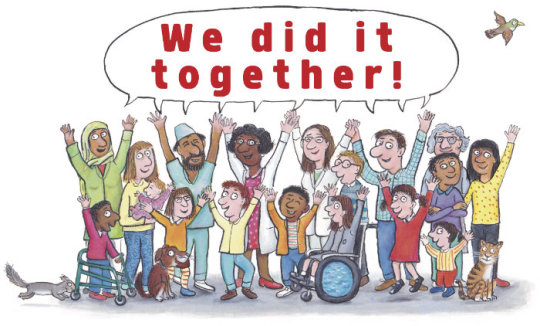
I also wanted to do something light-hearted to cheer people up, and I thought, “What if I imagine some of our characters in corona situations?” Julia liked the idea and wrote rhymes for the new scenes. This was really more about entertainment than serious information.

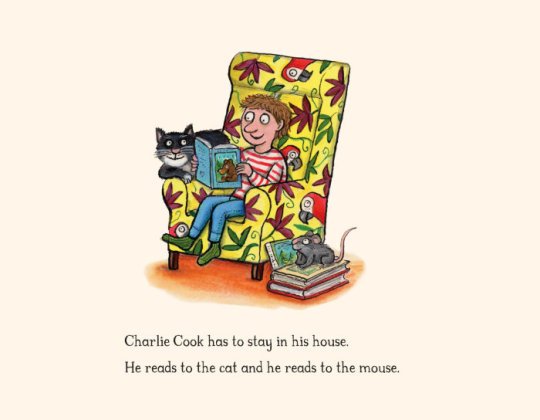


Artwork and verse © Axel Scheffler and Julia Donaldson 2020. Based on characters from ‘The Gruffalo’s Child’ (2004), ‘Charlie Cook’s Favourite Book’ (2005), ‘The Smartest Giant in Town’ (2002), and ‘The Gruffalo’ (1999) — © Macmillan Children’s Books.
And here’s one more thing: my ‘letter from lockdown’. On The Children’s Bookshow website, you’ll find lockdown letters from lots of other wonderful authors and illustrators.
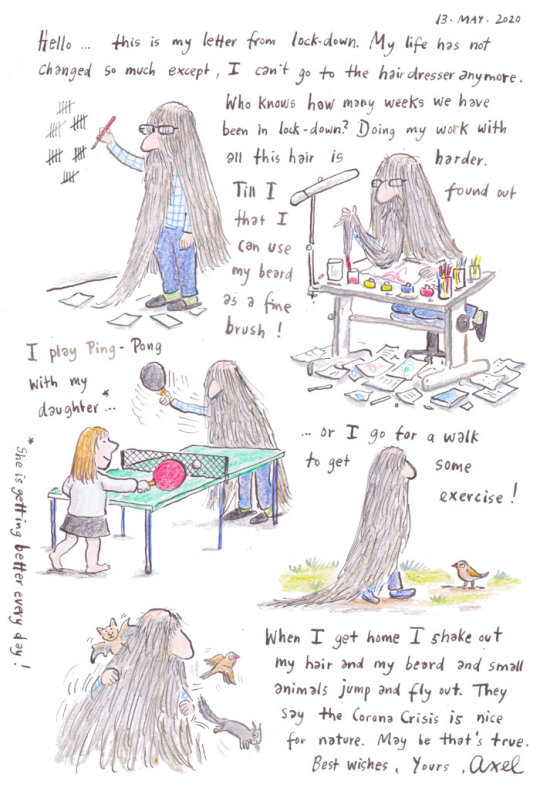
Illustrations © Axel Scheffler. Post edited by dPICTUS.
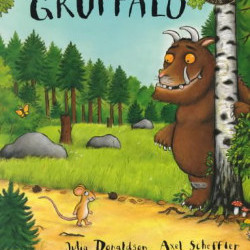
Buy this picturebook
The Gruffalo
Julia Donaldson & Axel Scheffler
Macmillan Children’s Books, UK, 1999
‘A mouse took a stroll through the deep dark wood. A fox saw the mouse and the mouse looked good.’
Walk further into the deep dark wood, and discover what happens when a quick-witted mouse comes face to face with an owl, a snake... and a hungry Gruffalo!
‘The Gruffalo’ has become a bestselling phenomenon across the world. This award-winning rhyming story of a mouse and a monster is now a modern classic, and will enchant children for years to come.
PUBLISHED IN THE FOLLOWING LANGUAGES & DIALECTS
Afrikaans
Albanian
Arabic
Australian
Azerbaijani
Basque
Belarusian
Bengali
Breton
Bulgaria
Catalan
Chinese (Simplified)
Chinese (Traditional)
Corsu
Croatian
Czech
Danish
Doric
Dundonian
Dutch
English
Esperanto
Estonian
Faroese
Farsi
Finnish
French
Frisian
Gaelic
Galician
Georgian
German
Glasgow Scots
Greek
Guernésiais
Hebrew
Hindi
Hungarian
Iceland
Indonesian
Irish
Italian
Jèrriais
Kazakh
Kölsch
Korean
Latin
Latvian
Lithuanian
Low German
Lowland Scots
Luxembourgish
Macedonian
Maltese
Manx Gaelic
Maori
Marathi
Mexican Spanish
Mongolian
Norwegian
Orcadian Scots
Polish
Portuguese
Portuguese (Brazil)
Romanian
Russian
Sami
Schwabisch
Serbian
Sesotho
Setswana
Shetland Scots
Slovakian
Slovenian
Spanish
Swedish
Swiss German
Tamil
Thai
Turkish
Ukrainian
US English
Vietnamese
Welsh
Xhosa
Zulu
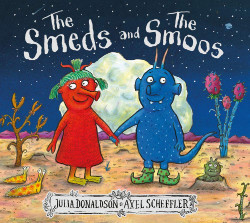
Buy this picturebook
The Smeds and The Smoos
Julia Donaldson & Axel Scheffler
Alison Green Books, UK, 2019
The Smeds (who are red) never mix with the Smoos (who are blue). So when a young Smed and Smoo fall in love, their families disapprove.
But peace is restored and love conquers all in this happiest of love stories. There’s even a gorgeous purple baby to celebrate!
PUBLISHED IN THE FOLLOWING LANGUAGES
Afrikaans
Catalan
Croatian
Dutch
English
Finnish
French
German
Hebrew
Hungarian
Italian
Korean
Luxenbourghish
Polish
Russian
Slovenian
Spanish
Swedish
Turkish
Ukrainian

Buy this picturebook
Kind
Alison Green, Axel Scheffler & 38 illustrators
Alison Green Books, UK, 2019
Imagine a world where everyone is kind; how can we make that come true? With gorgeous pictures by a host of top illustrators, KIND is a timely, inspiring picturebook about the many ways children can be kind, from sharing their toys and games, to helping those from other countries feel welcome.
One pound from the sale of each printed copy will go to the Three Peas charity, which gives vital help to refugees from war-torn countries.
PUBLISHED IN THE FOLLOWING LANGUAGES
Bulgarian
Catalan
Chinese (Simplified)
Chinese (Traditional)
English
French
German
Greek
Hebrew
Italian
Korean
Netherlands
Portuguese (Brazil)
Romanian
Spanish
Swedish
Turkish
Vietnamese

2 notes
·
View notes
Text
ATAK
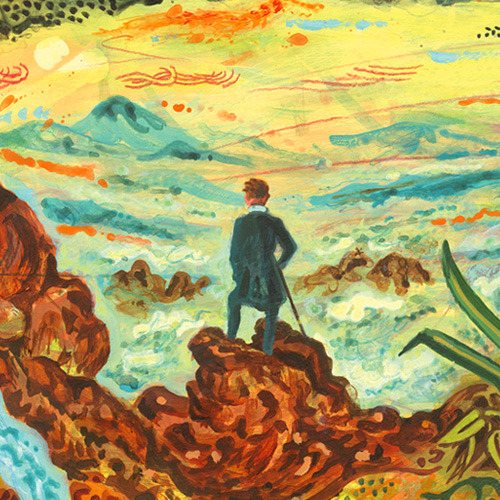
In this post, ATAK talks about his fascinating creation process and he shares illustrations and development work from some of his wonderful books – including sketchbook pages for his forthcoming picturebook ‘Piraten im Garten’, which is due to be published in 2020.
Visit ATAK’s website
ATAK: My process is like hip-hop. Mixing and sampling.
I have a big box where I put material that I’ve found on the street or in magazines. Then in the summer, when I’m sitting in the summer house, I stick everything into sketchbooks.
These are important books for me. I often use them when I’m looking for an idea. I like to make connections between this and that.
Sometimes I steal things. Here’s an example of where I used a painting by Caspar David Friedrich in one of my images. This is a very important painting for the German culture; it’s romantic. It’s the first painting that’s like a window. You see with him and you’re led into the picture.
‘Wanderer above the Sea of Fog’, Caspar David Friedrich, 1818.
When I take something to use in my own work, it’s more about the idea of composition and atmosphere. It’s not just a reference that people will know.
This is the sketchbook for my picturebook ‘Topsy Turvy World’. The publisher asked me for a book for children, and as I was tired of working with long texts, I thought this one should be a wordless book, where the images tell the whole story.
We have a German tradition from the 18th century of ‘bilderbogen’. This is like the origin of comics. They’re one-page stories. I was looking at some of these and I found some interesting ideas for ‘Topsy Turvy World’.
Here are some pages from the sketchbook.
Not everything made it into the final book; some of it was too heavy for my publisher, so he kicked it out. The smoking people had to go, otherwise we couldn’t have sold the rights in America.
Then there was a problem... My sketches had a lot of life and were fully-worked, so to transform them into the final artwork was very hard. After the rough version, I had this feeling that I was already finished with the book. Making the final ‘clean’ artwork felt like a kind of discipline.
My original paintings are always much bigger than they appear in the books. I never work to the correct size or format.
I often sell my paintings, but here is one I’ll never sell. It was done for the first children’s book I made, called ‘Comment la mort est revenue à la vie’ (How death came back to life), written by Muriel Bloch and published by Thierry Magnier.
It’s an important painting for me. I came from the comic world – black and white graphics – where I would draw out the whole scenes with all the details. In the middle of working on this painting, I had to go out to buy some food, and then I came back and thought, “Oh, it’s enough.” There’s a big difference when you work with colour. It’s like a sound, like a kind of music. This painting was very important for me in understanding colour.
Before I start working on an image, I often have a rough idea of what’s going to happen in the scene, but I leave a lot of space for other things to come in... And when I’ve started to work, I might see something in my studio or in a book, and it goes into the image.
I like this open process. And I like to be surprised. It’s very important for me that I don’t know in the beginning exactly what’s going to happen.
My way of painting is very old school. Traditional. Sometimes I paint over the top of something and you can see the trace of it behind. You can’t really fake things like this on the computer. For me, my original artwork is more important than the finished book. I once had an interesting discussion about this with Blexbolex. It’s completely the opposite for him: he sees his books as being the original artwork.
After ‘Topsy Turvy World’, I made a book called ‘The Garden’.
The original German edition was almost like a book for bourgeoise women... But for the French edition, they reimagined it for kids. It’s much bigger; you can really go inside. And the French publisher asked me to make some flaps to open up on the pages, which were not there in the original edition.
The sketches for ‘The Garden’ are almost nothing. It was very important that I didn’t repeat the process of ‘Topsy Turvy World’, where the sketches were very close to the finished artwork. I couldn’t work like this again. So the sketches here are very loose, but I knew exactly what was supposed to be in the pictures.
Working like this, you must have a very strong relationship with the publisher – one of absolute trust. I also have big problems with deadlines; I’m always late. With this book, my publisher Antje Kunstmann was so good. She phoned me every morning: “Hallo, here is Antje!” It was so important to know she was there, almost like a mother. It was a similar story with Wolf Erlbruch and his book ‘Duck, Death and the Tulip’. He was working for four years on this book. In the end, Antje came to his home and was waiting on his sofa for two days to take the last drawing!
The latest children’s book I made is called ‘Martha’.
I started working on it after reading an article in National Geographic about the passenger pigeon. I was fascinated. Because it’s a real story, it was not easy for me to make this book. It’s easier when I’m given a text because I have more distance.
Again, I worked very loosely in my sketchbook. These sketches are just indications – so I know something is here or somebody is there. It does help me that things are more open.
I don’t have sketchbooks where I draw from reality. I’m not good at this. You’ll never find me sitting in a crowd, making sketches. I watch and I observe instead. And I have books where I write ideas or note down interesting forms and shapes that I see.
Here are some pictures from ‘Martha’.
And here’s an idea for the dust jacket, where the kids could cut and draw on the paper, and make origami out of it to give a kind of rebirth. Martha is gone, but maybe she’s not gone if the kids could bring her back. The publisher didn’t go for this idea.
I went to art school but never finished. Just after the Berlin Wall came down, I was studying visual communication. There wasn’t a good atmosphere at my art school. I wanted to find like-minded people and work as a team, but it felt like most of the students were only interested in being artists, but not in working together. Then my daughter was born, and I never finished art school.
I’m now teaching art as a professor. The other teachers have diplomas, and I feel like I’ve come from the working class. I do like intellectual work, but when I work with students, I want to see something. I can only talk about what I see. I need it very visual. It has to catch me.
From when I was nine years old, I wanted to be an illustrator. In east Germany, illustration was a part of publishing. All the novels had illustration. It’s still unique now to see this, but in east Germany it was normal... So my plan was always to be an illustrator. This way I could wake up when I wanted, have no boss, listen to my music all day, and make my own work.
Speaking of music... The type of music I listen to when I work depends on the specifics of the book. For example, I made a book for Nobrow called ‘Ada’ (from a word portrait by Gertrude Stein). The idea for the artwork was to make handmade pixels, so I listened to a lot of electronic music; ping–ping–ping! It’s about energies. And for me, the music is also very important because I travel a lot and it can be hard to come back to your work – but when I listen to the music, immediately I’m back in the project, in the zone. It’s all connected – the music with the book.
Here’s my playlist for ‘Martha’.
Distortions – Clinic
Go – Sparklehorse & The Flaming Lips
VCR – The XX
Song For A Warrior – Swans
Avril 14th – Aphex Twin
Quiet Music – Nico Muhly
First Song For B – Devendra Banhart
Last Song For B – Devendra Banhart
How Can You Mend A Broken Heart? – Al Green
Ash Black Veil – Apparat
I Know They Say – Spectrum
Opus 55 – Dustin O’Halloran
Lost Fur – Karen O & The Kids
Unfinished Business – The Go-Betweens
Sometimes – My Bloody Valentine
Lies – Sin Fang Bous
Debussy: Suite Bergamasque, L 75 - Clair De Lune – Alexis Weissenberg
Nimrod (Adagio) – David Hirschfelder
Atmosphere – Joy Division
Still Life – Elliot Goldenthal
The Lake – Antony & The Jonhsons
Flying Birds – RZA
I used to make hardcore comics with friends. This was our first, which we made before the wall came down. My work has changed completely. I can’t understand this now; it’s like another man made it! And they are not funny. It’s a very small humour; you really have to look for it.
Then, after my daughter was born, I did my own comic series called ‘Wondertüte’. In the comic scene, everybody told me that this wasn’t a comic. But for me, it was totally a comic. I liked the comic medium, but I didn’t see why there had to be only one way. From all my old comics, this is the one I like the most.
The idea comes from the ‘learn English’ books we had in school. It’s a bit like a poem, but with a more open structure. I think my older work was very closed, and this comic is where it really started to open up. I made it for me, not for the mainstream. I got no money for it. But you could find it in kiosks. Somebody told me he saw it in a kiosk in a very small village. He said it was very important to see this comic displayed in-between all the nice, fancy stuff... My audience is not many people, but they are passionate.
I don’t really consider myself as a children’s book illustrator; it’s not like this. But it gives me a lot more freedom. Some of my friends find themselves working on one comic for years! I respect this, but for me that’s like a jail. With comics, you have to take such care with narration. You go from one panel to the next panel to the next... The comic medium is a question of time. In a children’s book, the reader looks at one page for perhaps two minutes or ten minutes. They go deep inside. It’s a completely different work. Also in a children’s book you have a stage; it’s really like theatre.
I also think it’s very important in children’s books that you read the book again and again. You read a comic maybe once and then you kick it out or you give it to somebody. But a children’s book is like a ritual between parents and kids.
This is a cover version of the German classic book ‘Der Struwwelpeter’.
The stories here are new and full of humour. I made this book with Fil (Philip Tägert). It was after ‘Topsy Turvy World’, and for me it was so important that I could be free with the pictures. The publisher said make what you want. And it felt so good.
There are hundreds of different versions of ‘Der Struwwelpeter’. As with the ‘bilderbogen’, this was like the beginning of comic stories.
I once found an old version of the book from Denmark with an extra chapter. They didn’t trust all that dark stuff and they made up new stories. So in our cover version, we had this idea to make one chapter where literally nothing happens! We tried to make it as boring as possible, with the pictures saying exactly the same thing as the words. It was so hard to make a boring illustration! It’s really not easy!
My new book will be published next year. It’s for my little son; he’s three years old. You could see it as a connection between ‘Topsy Turvy World’ and ‘The Garden’. It’s called ‘Pirates in the Garden’. The German title is ‘Piraten im Garten’, so the title is like a poem; you hear it and you don’t forget it. I like this title very much.
This book will will be very simple, a bit like Sesame Street. One word on each page, so you make associations between the word and the image, and the parents can talk about it with their kids.
I’m working in the sketchbook at the moment, and I want to make the sketches really good. For ‘The Garden’ and ‘Martha’, I kept the sketches really open. But for this one, no. I know this is going to be my last book for children. And it’s for my son, so I’m going to make it special. In the future, perhaps I’ll make art books in small editions, more paintings, stuff like this, but not books in a commercial way again.
When I made ‘Martha’, I was thinking, “who needs this?” It wasn’t mainstream and I was so confused. It’s different from when someone asks me to make a cover or a painting; I’m never thinking about who needs this. But this was different. Sometimes you just don’t know if what you’re doing is important or not. So I was kind of depressed working on that book. This is the main reason it took me such a long time.
I sometimes feel very alone working as a children’s book illustrator in Germany. My style is not at all mainstream and I always just made my books for fun. It was never a big passion of mine to make children’s books for my whole life. But I always liked the roots.
So for my final children’s book, ‘Piraten im Garten’, I will make it for myself and for my son.
Illustrations © ATAK. Post edited by dPICTUS.
Buy this picturebook
Verrueckte Welt / Topsy Turvy World
ATAK
Jacoby & Stuart, Germany, 2009
A fantastical picturebook where mice chase cats, penguins live in the jungle, and cars fly! There’s few things that children enjoy more than catching grown-ups telling fibs. Discarding what’s obviously wrong is how they find out what’s right.
It’s a time-honoured children’s game; ATAK’s just given it a new twist, using lots of classic tall stories, and adding a few new ones as well.
German: Jacoby & Stuart
English: Flying Eye Books
French: Editions Thierry Magnier
Spanish: Fulgencio Pimentel
Italian: Orecchio Acerbo
Norwegian: Magikon
Slovak & Czech: Baobab
Portuguese: Planeta Tangerina (Portugal)
Portuguese: Companhia das Letras (Brazil)
Dutch: Boycott Books
Chinese (Simplified): TB Publishing Ltd (Everafter Books)
Buy this picturebook
Der Struwwelpeter
FIL & ATAK
Kein & Aber, Switzerland, 2009
Like a rock band covering their favourite songs, ATAK and FIL tackle the classic stories of Zappelphilipp, Hans-guck-in-die-Luft & Co.
And just as a Heavy Metal cover might sound harder than the original, you’ll also find tighter morals, harsher imagery, politically incorrect humour, and that ever-so-subtle touch of evil that has been pervading this book for more than 160 years.
German: Kein & Aber
French: Fremok Editions
Buy this picturebook
Der Garten / The Garden
ATAK
Verlag Antje Kunstmann, Germany, 2013
In silence, the garden wakes up. Thus opens this picturebook by ATAK, as an invitation to walk in a garden with a thousand surprises – a haven of peace, populated with animals and strange characters.
You’ll discover with wonder, the treasures and the tranquility of the garden, and you’ll observe the seasons and the passing of time.
German: Verlag Antje Kunstmann
French: Editions Thierry Magnier
Spanish: Niño Editor
Portuguese: Companhia das Letras (Brazil)
Korean: Bear & Cat
Buy this picturebook
Martha
ATAK
Aladin Verlag, Germany, 2016
Martha tells the tale of the extinction of North America’s native Passenger Pigeon – its shockingly rapid decline caused directly by humans – and is told from the perspective of ‘Martha’, the last of the species who died at the Cincinnati Zoo in 1914. The story begins with a feeling of greatness and awe, describing flocks of birds that were once so numerous that they would darken the skies for days, their beating wings as loud as motors.
German: Aladin Verlag
French: Les Fourmis Rouges
Korean: Sanha
3 notes
·
View notes
Text
Anete Melece
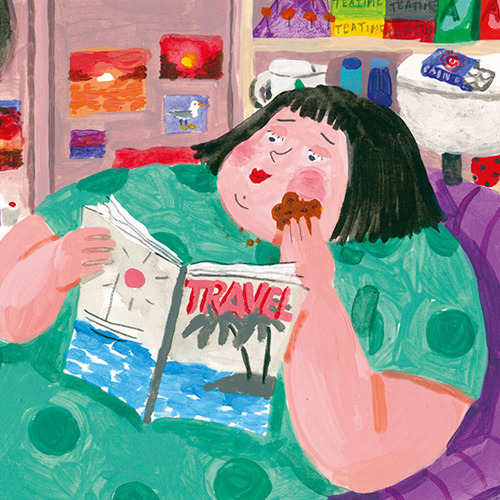
In this post, Anete talks about the creation of ‘The Kiosk’, a wonderful picturebook based on her award-winning animated short. Originally published in Latvian by Liels un mazs, the book is set to be published in many more languages, including Swedish, German and Korean.
Visit Anete Melece’s website
Anete: Usually films are made out of books, but in this case it was the other way around. Six years ago, I created an animated short called ‘The Kiosk’ (Virage Film, 2013), and this year a picture book version of the same story was released by Latvian publisher Liels un Mazs.
vimeo
The idea of a lady who is literally stuck at her workplace came to me an even longer time ago. It was a time in my life when I felt like a potato. I had a decent job in an office, earned more money than I ever had before, and everything was kind of okay, except that I had a feeling that I was in the wrong place and that I had stopped growing. This idea didn’t leave me alone and I had to figure out a way – how to make it. I finally left the job and applied for a Masters at the Lucerne University of Applied Sciences and Arts – a program called Animage (Animation and Illustration).
Actually, I drew a comic about all this. You can read it in full on my website, but here’s a few pages. It’s called ‘Busy Freelancer at Work’.
During my studies in Lucerne, I worked on the development of the story for ‘The Kiosk’. First, I thought a lot about the character: Why is she stuck there and what does she actually want? To find a romantic love or maybe to change profession and become an opera singer? Finally, I came to a simple conclusion: As she is literary stuck, then all she dreams about is freedom.
Sometimes people ask me why she didn’t lose weight to get out? Because it would be very boring and the story is not about being fat; it’s about being stuck. You can move on and start a journey to your happy place exactly as you are. Right now.
To collect some ideas for the side characters and Olga’s life in the kiosk, I also did some research. I did interviews with a few kiosk sellers and even spent a day in one. Well, that kiosk was not as small as Olga’s kiosk; it was more like a little shop, where I was sitting in a corner and observing situations and sketching the people that came there.
I worked on the animation in Switzerland, where I am still living. However, the action in the film and even more in the book happens in Riga, Latvia, where I am from.
The shape of the kiosk was inspired by a real art deco style kiosk in Riga, which lately has been mostly standing unused.
After three years, the seven minute animation was finally finished. I was travelling with it to film festivals all around the world, and I realised that not only the beginning of the story was about me, but the end of it too. Just like Olga, I was travelling around with ‘The Kiosk’ and I was totally happy. But most importantly, I had found the freedom to do the things that I love.
I had never really thought about making a book of ‘The Kiosk’. Not before Roger Thorp from Thames & Hudson and Alīse Nigale from Liels un Mazs told me that it would be an idea worth considering. The considering took another three years; I was always busy doing other projects – like making a baby and becoming a mother. Meanwhile, I think I just needed some more time to find the motivation to work on a story that ‘I had already told’ again.
How to transform a film into a book? The easiest way would be to make the key screenshots and explain the missing parts with some text. Yes, if you want it to look like a lazy copy of the film, only without sound and movement.
For a while, I forgot about the animation and focused on the story itself...
I didn’t even use the existing material, like the characters and backgrounds that had already been painted for the digital cut-out technique used for the animation. I knew that if I needed a new background, it would be very hard to paint exactly like I had done six years ago, and I didn’t want it to have that cut-out look.
In the end I painted everything new, using the film as reference for the character and background design. And to slightly compensate for the lack of voices, music and movement, I tried to use the advantages of the book format – readers have more time to look at each ‘frame’ – so there are more side characters and details. A kiosk is a perfect subject (or object) for that. I also added a couple of side stories for the background characters.
Perhaps some hardcore fans of the animated version (I don’t know if they exist though) could be disappointed to see that the picture book is so different. I would like to invite people not to compare, but to simply enjoy them each in their own way.
During this whole journey, I was never alone. At the beginning, while working on the story, I got a lot of support from my university mentors, especially Ted Sieger, Jochen Ehmann and Paolo Friz. It would be impossible to finish the animation without my producer Saskia von Virág and animator Stefan Holaus. I thank the whole team of Liels un Mazs for being so supportive. And also thanks to Hans ten Doornkaat for his advice while working on the book. And last but not least, thanks to my family for their love and inspiration.
Illustrations © Anete Melece. Post edited by dPICTUS.
Buy this picturebook
Kiosks / The Kiosk
Anete Melece
Liels un mazs, Latvia, 2019
For years now, the kiosk has been Olga’s home simply because her sweet tooth and monotonous life have made her larger than the exit. To distract herself, she reads travel magazines and dreams of being far away. An absurd occurrence sets her off on her journey.
Based on Melece’s animated short which has received many awards worldwide.
Latvian: Liels un mazs
German: Atlantis Verlag (2020)
Swedish: Lilla Piratförlaget (2020)
Korean: Mirae M&B (2020)
Other languages are in negotiation
5 notes
·
View notes
Text
Sara Lundberg

In this post, Sara talks about the creation process for ‘Fågeln i mig flyger vart den vill’ (The Bird Within Me Flies Wherever it Wants), and she shares some beautiful development work and final artwork. The book was originally published in Sweden by Mirando Bok, with the English edition due to be published by Book Island in Spring 2020.
Visit Sara Lundberg’s website
Sara: ‘The Bird Within Me Flies Wherever it Wants’ is a story about being true to yourself, to follow your heart. It’s inspired by the life and childhood of Swedish artist Berta Hansson.
The story takes place in the north of rural Sweden, in the 1920s. Berta grows up on a farm and she wants to be an artist, but her father wants her to follow the tradition and marry someone in the village, to take care of the home and the family. Just how things have always been.
Berta is different and she doesn’t fit in. Her mother is the only one who sees and understands her. But her mother has tuberculosis and eventually dies from it, leaving Berta alone and in despair.
This is a story about a young girl with the bravery and willingness to take the consequences of living her own truth and following her own path, despite the protests of her father and the society at the time.
That kind of courage fascinates me.
I am eternally thankful to the many forgotten female artists who have trodden the path before me. Those who had the guts to live an unconventional life and sacrifice so much. If they hadn’t, I wouldn’t be where I am today in my profession. Berta Hansson, not known to many, is one of these women.
First I wrote the text, then I did a lot of sketching, storyboarding and research. I decided not to be a slave to history or reality, but to have a free and open mind to my fantasy and inner-imagery.
I worked in close communication with my publisher Jenny Franke (Mirando Bok). We would go through the story and the sketches, discuss symbolism, the images, the text. Then I would go back to my studio to rewrite, redraw, change scenery, etc. It was very challenging, but creative and fruitful work. And it was quite scary too, because I had never done this kind of project before. The book is about 130 pages, with an illustration on every spread. It took two years to finish it.
The story of Berta revolves around the myth of creation. The image of Adam’s creation by Michelangelo is central. It’s a postcard that’s given to her by her uncle. The image makes her reflect on God, on the biblical story, Adam and Eve’s roles, on herself and her role in society.
Who is the creator? Is she in fact the actual creator of her own life?
Berta reflects on the magic of her own hands and how they are able to carry out her thoughts. Her hands that can create drawings and sculptures out of clay. Things that she gives to her mother.
Berta believes that what she creates has the power to cure her mother, because of the joy it gives.
Through the story we come back to her hands. The action of her hands, the expression of her hands when she gives up after her mother dies.
And then, through her hands, she rediscovers herself.
The style and techniques of the illustrations vary from spread to spread. Sometimes I use realism. For the character of Berta I used a live model. I wanted to create the feeling of vulnerability, pulsating life, the blood underneath the skin. How it varies in colour, shadows, temperature. How the skin is sometimes glowing.
In other illustrations I simplify, using collage and thick paint. Characters go towards the abstract. Broad strokes with the brush. Only expression. Here, the goal is imperfection, almost towards the ugly and unfinished.
It was important for me to allow myself to be inconsequent. The characters didn’t have to look the same on each spread, I didn’t have to stick to a specific style or technique. So I just did each scene intuitively, and with the intention of bringing out the most interesting – the essence in each.
I felt confident that everything would tie up in the end anyway, so I might as well have fun on the way there, and avoid trying to do something perfect.
Illustrations © Sara Lundberg. Post edited by dPICTUS.
Buy this picturebook
Fågeln i mig flyger vart den vill /
The Bird Within Me Flies Wherever it Wants
Sara Lundberg
Mirando Bok, Sweden, 2017
What do you do when it feels impossible to live up to everything that is expected of you? What do you do when the only person who really understands you suddenly disappears?
‘The Bird Within Me Flies Wherever it Wants’ is based on the life of Swedish artist Berta Hansson, but it’s also a universal story of grief, longing, intransigence and the power of the imagination to change things.
Swedish: Mirando Bok
English (UK, NZ, AUS): Book Island (published in 2020)
English (North America): Groundwood Books (published in 2020)
Danish: Straarup & Co.
Croatian: Planet Zoe
Belarusian: Koska
Korean: Sanha
Arabic: Dar al Muna
Hindi: A & A Book Trust
0 notes
Text
Daniel Fehr
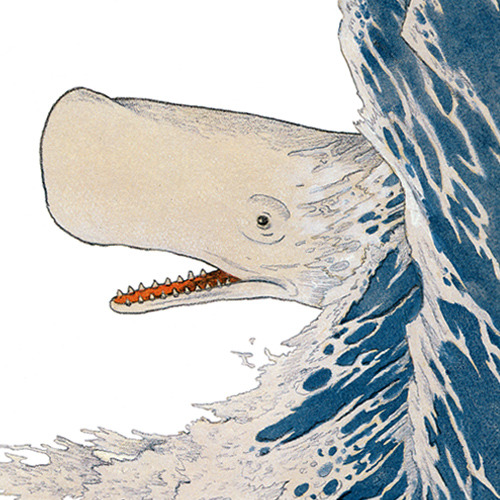
In this post, Daniel talks about ‘Come si legge un libro?’ (How to Read a Book?) – a story of stories and a book with multiple directions of reading. This unique picturebook is illustrated by Maurizio Quarello and published in Italy by Orecchio Acerbo.
Visit Daniel Fehr’s website
Daniel: With ‘Come si legge un libro?’ (How to Read a Book?) I wanted to create a book that plays with our expectations of reading. At first sight, it might look like an instructional book to teach reading, much like Mortimer Adler’s book from 1940, from which I stole the title. But contrary to his book, which was written to teach critical reading to a popular audience, ‘How to Read a Book?’ quickly runs amok.
The characters in the book speak with you, the reader – no, they command you: Turn the book, shake it, spin it. Is this still reading? Is it playing? Has the reader been set up by the book? In the end, you know something you’ve most likely known all along – that you are supposed to read a book from the front to the back, and holding it the right way.
At the same time, you’ve experienced much more: You’ve experienced that reading can be playful; a game where both you and the book take part. You played with the book, but the book also played with you.
‘How to Read a Book?’, my sixth published picture book, belongs to my series of experimental and rather conceptual picture books, which include ‘Mr Left and Mr Right’, illustrated by Celeste Aires, and ‘A Bola Amarela’ (A Yellow Ball), illustrated by Bernardo P. Carvalho.
In ‘Mr Left and Mr Right’, for example, the two protagonists are trapped on their own pages. One on the left page, one on the right. They try to do everything to get to the other page and, finally, find a solution involving the book itself.
Since these books attempt to play with the medium, I was not just writing a manuscript or a preliminary storyboard. I created very rough prototypes to test how readers reacted before I presented the ideas to my publisher.
The challenge with ‘How to Read a Book?’ was to invite readers to participate: to actually turn the book upside down, contrary to their knowledge of how to read a book. For this, you need to have the idea in your hands to understand how it works. This is still true for the final book; it is a very analogue product. You need to be able to turn it upside down, to shake it, to spin it.
When I write a picture book, I have a clear conception of its setting, what the pictures show and how the book flows. I know which part of the text is placed on which page. I know the rhythm, I know the turns, I know what the book should look like, but it doesn’t yet; it’s still just text and scribblings, very poor scribblings. Without the illustrator, my book is nothing. Good illustrators are not only able to grasp the core of my texts quickly and precisely, but they’re also able to enrich them with their own vision. They transform and rework it until it is one – until it is not my idea anymore, but ‘our’ work.
Maurizio included characters from famous tales, like Grimm’s ‘Hansel and Gretel’ and Ahab from Herman Melville’s ‘Moby-Dick; or, The Whale’. My prototype didn’t include any of these; my figures were simply placeholders – canvases for the illustrator’s imagination. I immediately fell in love with Maurizio’s idea, since these classic characters mirror Adler’s obsession with ‘Great Books’ and mocks it gently.
At the same time, they make you curious: What are they doing in this book? Where are they coming from? What are their own stories? A story is never closed in itself, but always contains further stories. Sometimes you have to invent them yourself, sometimes they already exist. I would be very happy if Maurizio’s and my book could be a starting point for our readers to discover more stories and books.
Illustrations © Maurizio Quarello, Celeste Aires and Bernardo P. Carvalho. Post edited by dPICTUS.
Buy this picturebook
Come si legge un libro? /
How to Read a Book?
Daniel Fehr & Maurizio Quarello
Orecchio Acerbo, Italy, 2018
A story of stories and a book with multiple directions of reading... ‘How to Read a Book?’ features characters from popular fairy tales and a captain from a very famous novel. They all have an appointment on the pages of this book – a bewildering book where up is down and down is up!
If these characters are to have a chance of getting through their story, they’ll need to teach the young reader how this book has to be read...
Italian: Orecchio Acerbo
German: Jacoby & Stuart
French: Editions Kaléidoscope
Spanish: Editorial Océano
Turkish: Cinar Yayinlari
Korean: Miseghy Children’s Press
Chinese (Simplified): TB Publishing
3 notes
·
View notes
Text
Gerda Dendooven

In this post, Gerda talks about her creative process and shares illustrations from four of her books: ‘Stella, ster van de Zee’ (Stella, Star of the Sea), ‘Takkenkind’ (Branch-child), ‘Wintervuur’ (Winter Fire), and ‘De Gans en zijn broer’ (The Goose and his Brother).
Gerda Dendooven’s Wikipedia page
Gerda: I don’t like the word illustration. I prefer picture-maker.
I make pictures, images, a new world. Mostly on paper.
Illustrations from ‘Stella, ster van de Zee / Stella, Star of the Sea’. Published by Querido, Netherlands, 2016.
When I make a picture, I jump into another existence, one that I created myself. The people in my pictures are sometimes people I met. I hear them talk, I hear what they say, how they speak, with what voice, what relationship they have with each other.
I am a kind of vampire: I steal with my eyes and with my ears.
What I hear inspires me more for pictures than what I see. What I see inspires me often for writing.
Illustrations from ‘Takkenkind / Branch-child’. Published by Querido, Netherlands, 2012.
I make books for children and adults, but in all my work there are three parameters:
1. I think of my audience: mostly children.
2. I think of the ones who buy and read the books to children: parents, teachers...
3. I think of myself: the artist. I have to be happy with what I make!
If I miss one of these, I fail. It has to be in balance.
Illustrations from ‘Wintervuur / Winter Fire’. Written by Carl Norac and published by Lannoo, Belgium, 2017.
I always start with an idea: what would I like to write about and draw? I have to feel the need to make the book. Just making a book is not enough; it has to be urgent for me.
So I talk about parents, the relationship between children and parents, between man and wife. In nearly all of my books, I question myself: what is a good mother? I am a mother, so I question myself about that issue.
Anxiety is also a prominent theme in my work. Anxiety is a motor and a brake. It brings you further and it stops you. It is a strong power.
Illustrations from ‘De Gans en zijn broer / The Goose and his Brother’. Written by Bart Moeyaert and published by Querido, Netherlands, 2014.
I believe in the strength of children. I believe in the flexibility of children to solve a problem. Everything is already in the child; we just have to wait for the right moment for it to come out. So don’t hurry.
Humour and fantasy are also important in my books and pictures. Fantasy is wonderful, but it can create anxiety as well.
In my pictures I exaggerate some specific characteristics – the morphology of the body – because it fascinates me and makes me laugh! So sometimes I work in an expressionistic style because that shows better what I want to say in a picture.
I work with ink, pencil and collage because collage gives me the freedom to change a picture till the end. I have less stress.
Illustrations © Gerda Dendooven. Post edited by dPICTUS.
Buy this book
Stella, ster van de Zee /
Stella, Star of the Sea
Gerda Dendooven
Querido, Netherlands, 2016
“Oh look, there’s a foot. And there’s a hand. With fingers. And another foot.”
“Man, this is not fish; this is a human being!”
A fisherman and his wife find a little girl in their net one day. Who is she and where did she come from? They decide that they will keep the little girl and call her Stella, Star of the Sea.
After a while, Stella’s new parents will discover that she is different from the other children.
Buy this book
Takkenkind /
Branch-child
Gerda Dendooven
Querido, Netherlands, 2012
In the middle of the night, a woman tells her husband that she wants a child. Now! So the man starts looking. But none of the children who cross his path will be able to meet the strict demands of his wife. So he puts a branch in the cradle instead.
At first, the woman doesn’t want to know. But slowly, the branch-child teaches the woman how to love. And her love helps the child to grow.
Buy this book
Wintervuur /
Winter Fire
Carl Norac & Gerda Dendooven
Lannoo, Belgium, 2017
Carl Norac and Gerda Dendooven give a voice and a face to the winter. They make it sound and look like never before.
A sparkling book of poems and short stories about the coldest season.
Buy this book
De Gans en zijn broer /
The Goose and his Brother
Bart Moeyaert & Gerda Dendooven
Querido, Netherlands, 2014
The goose and his brother are doing well on their farm, together with the turkeys, the sheep, a dog, and of course, the farmer’s wife. Life is rather carefree.
But sometimes, the goose and his brother are quite overwhelmed by their thoughts... like: Why is the world constantly changing? When exactly does night begin? And how can you hold on to happiness?
Dutch: Querido
French: La Joie de lire
1 note
·
View note
Text
Sonja Danowski
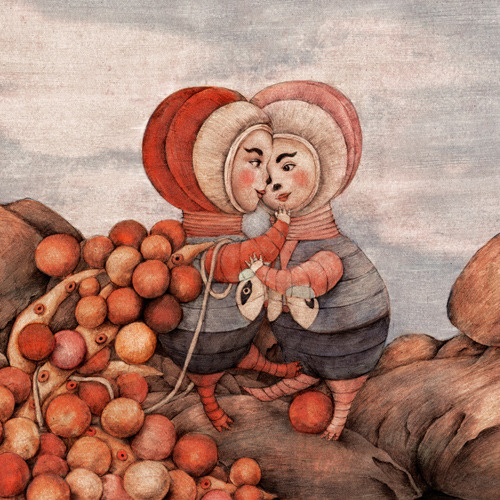
In this post, Sonja talks about the creation of her latest picturebook ‘Smon Smon’, and she shares lots of illustrations and work in progress. This stunning work is published by NordSüd Verlag in Switzerland and NorthSouth Books in the United States.
Visit Sonja Danowski’s website
Sonja: When I was little, my bed was close to the window and the curtains should not be closed so I could see the night sky with its sparkling stars. I still like that today. I always wondered what’s going on up there, and imagined fantastic beings. While I lay safely in my bed, it felt very cosy, imagining all those peaceful beings and worlds.
I had planned to set a picture book story in my fantasy world for a long while, but I wasn’t quite sure how to start. There is this strange boundary that makes it almost impossible to bring our fantasy into reality without losing all its magic. But reality also brightens our imagination – like when we read a story and mentally visit entire sceneries. It’s also exactly this brightness that makes it possible to illustrate texts. Among others, I’ve illustrated two moving novels by Chinese writer Cao Wenxuan. They take place in China in the 60s and 70s, and I loved the challenge!
Illustrations and films often succeed in capturing the atmosphere, but it is always somehow different from our imagination, or it’s incomplete. With my new book idea, I had the advantage that no one except me had ever visited my fantasy world, so no one could be disappointed by my attempt to depict it. One thing that I particularly love about making picture books is that once I have a book idea, it won’t let me go and everything around me gets a new meaning. In my sketchbook, I noted what might be of importance for the plot: fast-growing mushrooms, plant forms, rock formations...
I use sketches as a tool for development, but I really have to work out an entire scene to immerse myself emotionally in the emerging imagery. Instead of making a whole storyboard, I trust that the result will tell me what’s going to happen next. With my own stories, I always work intuitively, and I especially like inventing fictive places in my illustrations, such as the home of the main characters in my picture book ‘Little Night Cat’.
Inspired by reality, I combine all sorts of things that exist in our world in order to create completely new, fictive spaces out of them. I draw and draw until the scene seems somehow authentic to me and the details tell little stories while looking at them.
With ‘Smon Smon’ I could go a step further. I enjoyed creating a world where the impossible is possible and craziness takes the place of familiarity.
I like natural-white drawing paper with a matte, smooth surface, and so thick it doesn’t curl when wetted. My first pencil drawings are always quite detailed; while playing with shapes and stony structures, I can delve into my drawing for hours, a condition I like so much! I’m not good at simplifying things; I’m a master at losing myself in details and complexity. I’m always impressed with how other artists can create a meaningful drawing with just a few lines and shapes.
When all picture elements had found their place, I could concentrate completely on the colours that added depth, light, shadow and warmth. For colouring, I used ink and watercolours, and for the final touches, sepia and soft crayons. I like ink and watercolour, which always behave unpredictably on paper – much better than I could have planned it – and I’m fascinated by how we perceive colours differently each time in relation to the adjacent tones. The planet was supposed to be a mysterious, surreal, somewhat gloomy place, so I mostly reduced the palette to a few colours that I prefer to paint with: English-red, sepia, sienna, transparent blue, and the myriad of blends.
First, the creature was on four legs and had fur, and the eyes were far too small and kind of scary; it seemed as if it hadn’t made any effort to appeal to me. It took a small eternity for me to find my main character: weird enough to pass as an alien and sweet enough not to scare. I thought that the anatomy of the beings should be adapted to their habitat, and gave Smon Smon (I later called it) an accordion neck that allowed it to pick high-growing fruit and withstand some difficulties in its search for food. I also discovered two other species on the planet: the small and strong Klon Klons and the flying Flon Flons.
Also, the plot is based on the idea of foraging. Everything doesn’t go smoothly for Smon Smon, but of course there is a happy ending. As in my childhood memories, it is a peaceful world; the beings help each other out of serious situations, and they are generous.
Finding the right words for this world happened spontaneously. This sentence came to my mind: ‘The Smon Smon live on the planet Gon Gon.’ Words with double syllables like ‘Mama, Papa’ are of elemental nature, and I found that the form and sound of the vowel ‘O’ went perfectly with the organic environment. Working out the next scenes, I picked up the rhythm and I wrote: ‘In the morning, the Smon Smon hangs its last ron ron next to its won won on a lon lon and floats away in a ton ton.’
I firstly wrote the sentence in German, but then had to test whether it also worked in English and other languages. It worked fine; it can be translated almost literally, without losing the language’s rhythm. I also liked the idea of giving the few characteristic details in my pictures newly invented names, so readers have to puzzle out their meaning and make the connections themselves. With each page and repetition it becomes easier to remember them, and there are also some clues to find in connotations: lon lon are long, ron ons are round, Flon Flons fly...
The more seriously one reads the book’s text aloud, the more absurd and funny it sounds, and the best is that all the nonsense also makes sense.
Creating a comprehensive illustration project means absorbing the story’s atmosphere very intensively. Often I felt as if I lived in my depicted world. I was fortunate to be surrounded by friendly creatures that surprised me with their weirdness and brightened my mood. While drawing, these strange creatures developed a life of their own and encouraged me – despite all the difficulties and self-doubts – to stay the course until the book was completed.
Illustrations © Sonja Danowski. Post edited by dPICTUS.
Buy this picturebook
Smon Smon
Sonja Danowski
NordSüd Verlag, Switzerland, 2018
NorthSouth Books, United States, 2018
Sonja Danowski takes us on a journey into a beautiful, mysterious world where cooperation and generosity save the day.
‘Weird, wonderful, and proof that journeying to places of uncertainty and unfamiliarity can feel extraordinarily exciting.’
—Kirkus Reviews
German: NordSüd Verlag
English: NorthSouth Books
Italian: Orecchio Acerbo
Romanian: Propublic / Signatura
Korean: Booklight
3 notes
·
View notes
Text
Jérémie Fischer & Jean-Baptiste Labrune
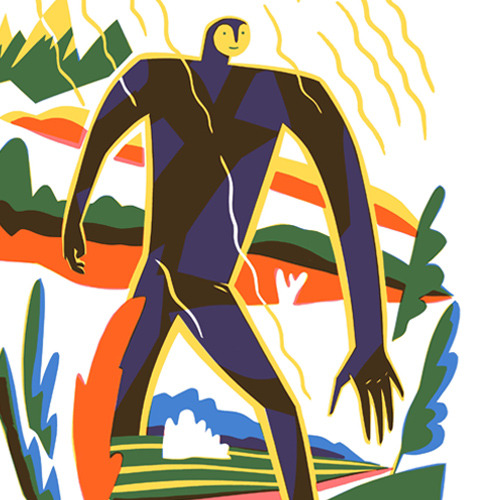
In this post, Jérémie and Jean-Baptiste talk about the creation of the excellent ‘Les contes de petit duc’ (Little Duke’s Tales), their latest book together with French publisher Éditions Magnani.
Visit Jérémie Fischer’s website
Visit Jean-Baptiste Labrune’s website
Jérémie: ‘Les contes de petit duc’ (Little Duke’s Tales) is the third book that Jean-Baptiste Labrune and I have published together with Éditions Magnani, after ‘L’éléphouris’ (The Elemouse) in 2012 and ‘Le veilleur de nuit’ (The Night Watchman) in 2014.
It’s an illustrated book like ‘The Night Watchman’ (similar formats and both about 200 pages). But this time, the book is structured around four origin stories and a prologue and epilogue. ‘The Night Watchman’, you might know, has 7 chapters: 6 nights and 1 morning of a single week.
JB, what made you want to use a fairy-tale structure for this new book? What is your relationship with tales (this is a narrative form you used in your first book,‘The Elemouse’)?
Jean-Baptiste: It’s hard for me to say exactly how the structure of a long-form piece of writing takes shape. I go by trial and error, blindly, no plan. Then a narrative appears, I work with it, I think it’s done. Then I come back to it, and it’s all wrong. I carry on, for better or worse and a new structure emerges, sharper, subtler. The coming and going between writing and structuring can happen five, six times. Maybe more. It’s as if the text already exists, but it needs to be drawn out of me, bit by bit, little by little.
Regarding Little Duke, I remember having written some tales in 2011 – or more like poems in a very neat Baroque style. The ancestor of Little Duke featured in these. He didn’t have a name (not that name, anyhow), it was a kind of monster with three pairs of eyes rolling all over the place, who lived in a very scary forest. Then the character of an old wanderer (who became Chèms, the other main character in ‘Little Duke’s Tales’) quickly took form. I gradually realised that what interested me wasn’t the fantasy or the lexical complexity (I was entering a phase where, after ‘The Night Watchman’, I was looking to refine my language and aim more for concision), but these two characters and their relationship.
So I set to work on the two accomplices. I worked out what they had in common, what they didn’t, the images and themes associated with them. That’s how Chèms and Little Duke got their own names. Their traits were honed to become complementary to one another. I wanted a lively style, punchy, with something prophetic to it. So I dived into sacred texts, those of Miguel Angel Asturias, Khalil Gibran’s poetry, Serge Pey... and I wrote ‘Little Duke’s Tales’. The framework was in place: Little Duke would have to tell stories to Chèms.
The idea for origin stories set in quickly. In fact, I seem to have written the first story more or less straight after the prologue. I returned to a long-term reading obsession of mine (already explored in ‘The Elemouse’): Egyptian, Greek and Scandinavian mythologies, which I’ve loved since I was little, and then the authors I read later: Cyrano de Bergerac, Swift, Kipling, Tolkien and Michaux. The origin story gives a very simple temporal narrative structure (one time, one day, since this day). From there, one has total freedom; geography, characters, images, languages, everything can be re-imagined. At the same time, the rigid time frame of the origin story also allows for a social or cultural critique. It’s about requestioning the world as we know it, just seeing it as a simple contingency.
Next, with the tales, it’s possible to work on them serially, like in ‘One Thousand and One Nights’. I had my narrative, so it would be enough to make a coherent collection (or so I thought), to just put the stories one after the other. But very quickly, I found myself with so many tales – long endless lists of “why?” – and it wasn’t going anywhere. The world I had built was faint, blurry, tired. Little Duke and Chèms were buried under an abundance of stories; they weren’t characters any more, just a slightly useless narrative trick.
So I decided to settle on four stories, which are based around light and darkness, waking and sleeping, the passage of time. At the same time I established how the relationship between Little Duke and Chèms would evolve as their dialogue continued. The structure was in place. I wrote the second tale. And then the third and the fourth, and finally the epilogue. After that, it needed adjusting, editing, tightening up. Then I had to think about the text with images: remove repetition, adapt the ellipsis ... There Jérémie’s work became essential, but that’s another story!
Jérémie: I went through many successive stages with illustrating the stories. Starting with trying out many different possible relationships between image and text, I wanted, at first, to work with a written manuscript and few images. In 2013, we had published our first story ‘Why is night black?’ in the first issue of a magazine called Pan, which JB and I looked after and which was edited by Julien Magnani. That was the early stages of the book, with a few ink images to go with the text.
But I wasn’t satisfied. I found the result too sensible; the text and images spoke to each other, but everything stayed in its place. Some years passed; I let the project mature in a drawer, taking it out regularly to work on breaking down the text and the book as a whole.
In 2017, something clicked. I was especially interested in Czech illustrators like Josef Čapek, Květa Pacovská and more recently Jiří Šalamoun. Also Kurt Schwitter’s two books, ‘Fairy Tales of Paris’ and ‘The Scarecrow’ (Die Scheuche Märchen), published in 1924 and 1925 respectively. I was fascinated by the freedom of colour and composition used in these different books – like how Čapek used typography as illustration on many of the book covers he produced.
At the same time, Jean-Baptiste had just written a funny little story, ‘Bululú’, very like Schwitters’ stories. I immediately got hold of it and it was published as a special edition with Pan in 2017 – a small 16-page format, 180 copies printed. From a graphic point of view, ‘Bululú’ is the prelude to ‘Little Duke’s Tales’. You see here the choice to use typography as illustration, to play with it on each page in a new way.
One year later, in July 2018, ‘Little Duke’s Tales’ was finished.
I chose the same printing technique for this book as with ‘The Night Watchman’. That is working with colours separately whilst drawing on carbon copies and using inactinic paper, constructing the image with successive sheets. We used 4 spot colours for the whole of the book.
Illustrations © Jérémie Fischer. Post translated by Gengo and edited by dPICTUS.
Buy this picturebook
Les contes de petit duc /
Little Duke’s Tales
Jean-Baptiste Labrune & Jérémie Fischer
Éditions Magnani, France, 2018
Chèms sees and hears everything. He is a wise man. But Chèms starts to wonder about the reality of his wisdom. One night, Chèms meets an owl called Little Duke, who claims to know the answers to all questions.
Chèms asks Little Duke the questions he’d always pondered: Why is the night black? Why does the moon shine? Why do we dream? Why do we age? Little Duke answers Chèms’ questions in the form of tales, beginning with the tale of the giant Aketopiou, to tell the origins of the day and the night...
4 notes
·
View notes
Text
Peter Elliott & Kitty Crowther

In this post, Peter and Kitty talk about their collaboration on ‘FARWEST’ – a wildly original picturebook which is based on an old French expression. First published in French by Pastel–l’école des loisirs, there are more foreign editions to come.
Visit Peter Elliott’s website
Visit Kitty Crowther’s Instagram page
Peter: Since I was a kid, I’ve been a musician. I write songs. And since childhood, I’ve received a great deal of pleasure from drawing. So I carried on as a musician and became an illustrator, and then later, an author.
I wrote FARWEST as I write lyrics for a song. It always starts with a simple idea. In this case, it was the French expression, ‘qui va à la chasse perd sa place’ (why this expression, I don’t know). The literal English translation is ‘he who goes hunting loses his place’, though I think ‘move your feet, lose your seat’ works better in English.
I simply asked myself what would happen for real if somebody leaves their place and another one takes it...
I thought it would be nice to welcome the guy back anyway, like:
“Hey dude, take a seat; you’re welcome!”
Very quickly, I realised this is a perfect way to meet people. And I love to meet people. So... Thinking of all this, I let the rhythm of the words lead the game. I wanted to make the text sound like music.
And finally (the same night) I made sketches for the illustrations. At that moment, I was making the book on my own.
A few days later, I sent ‘Qui va à la chasse’ to Kitty (only the text, not my sketches). I wanted to know her opinion on what I wrote and if she thought it was good enough to present to Odile, our publisher at Pastel.
Kitty and I have known each other for a long time. We were at the same art school, Saint Luc in Brussels, and we’ve shared the same publisher for over twenty years.
Also, I’d seen Kitty dancing back when I was playing live with my band, Busty Duck. This is the reason why I asked her to illustrate the cover of our album ‘Zoomorphic’ in 2009 (our third and final album; the band isn’t together anymore).
I think that Kitty and I have a particular relationship to music. Maybe this is why she felt the rhythm in my text so strongly.
I was really surprised when Kitty asked me if I was okay to let her illustrate the story. I replied: “you’re welcome!” And Kitty decided to do the story with cowboys and to name it FARWEST.
During the making of the book, Kitty and I were with our publisher Odile at Kitty’s house, to see the sketches for FARWEST. It was amazing to discover how my words had been interpreted by Kitty’s brain. How her imagination had devoured the story.
On that day, I met this magnificent red horse and Jonas, a funny dog who is the link between the humans. I also saw this sketchbook page with Jeff, Jim and Koko playing music around a fire:
Odile and Kitty suggested that I compose the music from that picture. Kitty illustrated my words with pictures, and now I could illustrate Kitty’s picture with music. I loved the idea!
A few days later, my father gave me a tenor banjo. That night, I sat on the floor of my workroom, which is also where I record my songs. I lit a candle (my fire), played a few chords and I started to sing. With the lyrics, I wanted to talk about refugees and all the lost people. And to claim that the only possible answer is “welcome.”
vimeo
Today, I just can’t believe how beautiful the book is. And I’m dazzled by the strength and the truth that I feel in Kitty’s pictures – just as I was back at art school, when I first saw her work pinned to the wall of the studio.
FARWEST.
I wrote a story.
Kitty made a world of it.
Kitty: It’s nice to be back on Picturebook Makers. Thank you for inviting us to talk about this wild, crazy cowboy book. I am super-proud of it.
As Peter mentioned, we have known each other for a long time. We often write to each other. I’ve always loved the way Peter writes his emails and I encouraged him to write novels. So one day, he asked me to read one of his texts and tell him what I thought. I fell for it. I loved the rhythm.
He sent it in March 2015, so thank you for your patience, Peter!
When I read a text, I must be able to see the pictures in my head. It has to take me on a journey; I have to travel. And it has to be very different from what I do with my own books. I love writing; I always feel it’s a different muscle that’s working. And I think that one lifetime won’t be enough to write all the stories that I want to tell. So, I’m not usually keen to illustrate other people’s words, even if they’re nice. With FARWEST, I didn’t say yes to please Peter, but because I believe very strongly in this story. I need a lot of freedom and Peter knows this.
I thought it would be too obvious to have ‘Qui va à la chasse perd sa place’ as the title, and Peter agreed to change it to FARWEST. I’m a big fan of Tarantino, old Westerns, trappers, wildlife, Jack London, Calamity Jane, Billy the Kid, and all the others. And now the Westworld TV series.
In this book, there’s an accumulation of people. And it can be read on different levels (I hope).
You could see it as an immigration story. Or the fear of losing your seat. I remember as a child, it was always hard for me to find my seat. To find my place.
During the recent American election, I felt sick. So much hate. So much lack of wisdom. Hardly any empathy. All my bones were hurting, thinking of my ancestors invading America all those years ago. The descendants of those people. Hunger for gold and land. Escaping misery.
Millions of Native Americans died. Pushed out from their lands. Killed or consumed by illness. They were treated the worst way you could imagine.
I recommend reading the beautiful words of Russell Means, a Native American activist and actor (1939-2012): ‘If You’ve Forgotten the Names of Clouds, You’ve Lost Your Way: An Introduction to American Indian Thought and Philosophy’.
It’s frightening that we hardly take care of nature’s guardian tribe. We just create eager people. More is never enough.
The story of FARWEST starts on the title page. A Native American, drawn in charcoal, sitting on his horse. Beside him is his dog. It’s a black and white page, like this would have happened a long time ago.
(I asked Peter to add a horse and a dog. It amused me so much to see this supposedly loyal dog changing master all the time!)
So, you have to create the link between the title page and the following page. I’ve always been fascinated by the passing of time in books. Page one and page two; what happens in-between?
You have three characters at the start of the story. Two white people and one Native American. It made me smile to draw the Native American with a costume – almost like he would be more educated than the other two. Playing with visual language.
I wanted to draw big landscapes. I think it’s very good for your spirit to see far into the distance. It opens your brain up to possibilities.
I had to choose the person who replaces the little hero of the book when he goes out hunting. It was hard to find this person. An African boy? A Native American boy? A Chinese boy? A girl?
Then I was looking at this incredible animation film from Max Fleischer...
vimeo
I am totally fascinated by how Koko the Clown moves and dances. Such beautiful art!
Anyway, inspired by Koko, this yellow guy showed up.
My Koko has an emoji face, or smiley. People all around the world use them.
With the way he’s dressed, Koko seems to come from the music hall.
Peter insisted on no guns in this book. You think of cowboys and you see guns. But when you see the situation with gun laws in the USA, it’s really frightening. It’s easier to buy a gun than to publish an edgy book for children. Ha! Guns are like drugs/tobacco/alcohol/petrol/human trafficking and all the rest, just to feed the appetite of angry-black-suited greedy men and women (I’m sure these are shortcut thoughts, but hey!).
The next character who arrives is a woman. Rosa Parks.
For the ones who don’t know her, she is a famous African-American civil rights activist. She sat at the front of a bus where African-American people were forbidden to sit at that time. She refused to give up her seat. Very brave her.
With the next ‘names’ that arrived in the story, we tried to find people who work/worked for freedom and humanity.
So there’s Russell Means (read about him earlier in this post).
Then there’s Elizabeth Cochrane Seaman (1864–1922; her pen name was Nellie Bly). She was known for her pioneering journalism, including her 1887 exposé on the conditions of asylum patients at Blackwell’s Island in New York, and her report of her 72-day trip around the world.
Patti Smith. Because she is such a beautiful punk.
Martin Luther King. Because he had a dream.
Calamity Jane. The letters to her daughter – even though it was later discovered that they weren’t really written by Calamity Jane – are amazing.
Django from the Tarantino film, based on the legendary African-American Marshall, Bass Reeves.
I love it that the sweet cowboy says: “At the end of the day, I may have lost my seat, but there’s still plenty of space.”
(You might have noticed that all the characters in FARWEST have something in common: their nose! Little round black noses, like Micky Mouse or in Picsou magazine, the Beagle Boys or Felix the Cat. It made me smile to do this.)
Okay, to finish, I'd like to talk a little bit about the animation I made for Peter’s song (see the video earlier in the post).
Peter suggested we use the picture of the gang singing and playing music, and that we could make the fire move...
But I was afraid we would get bored after a while.
I really love animated GIFs – hypnotic ones, like the bison by Eadweard Muybridge.
Muybridge was an English photographer. I recently discovered that he emigrated to the USA in 1850. And in 1868, his large photographs of Yosemite Valley made him world-famous!
But Muybridge is best known for his pioneering work on animal locomotion in 1877 and 1878. A few years before this, a French physiologist and inventor called Étienne-Jules Marey wrote that a galloping horse had all four hooves off the ground for a brief moment, and that the way horses were depicted in some paintings was wrong. I always find it fascinating when art mixes with science and discovery.
Through his pioneering work, Muybridge proved that Marey was right. So thank you to Mr Muybridge (even if it’s said that he killed the lover of his wife and was never punished). And thank you, Monsieur Marey. Because I think that the horse is one of the hardest things to draw, and I always wanted to try to understand it. In fact, horses run on their nails!
With my animation, I wanted to make it as easy as possible to do, and I used the same technique as the wonderful artist, William Kentridge: repeatedly erasing and reworking charcoal drawings.
That’s all folks!
Content © Peter Elliott and Kitty Crowther. Post edited by dPICTUS.
‘Wonderful People’: Lyrics and music by Peter Elliott. Animation by Kitty Crowther and Sam McCullen. Music recorded by Peter Elliott at Constellation 8. Mixed and mastered by Fabrice Lefèvre at Born2Groove studio.
Buy this picturebook
FARWEST
Peter Elliott & Kitty Crowther
Pastel–l’école des loisirs, Belgium, 2018
The weather was beautiful that morning. “I am going hunting,” I announced. As I went out, followed by my dog, Jonas, I greeted Jeff and Jim. It was my very first time hunting and it wasn’t that easy!
Later that day, I returned home, opened the door... and I realised that someone had taken my place!
Jeff said it plainly to me: “Move your feet, lose your seat! There’s no two ways about it!”
3 notes
·
View notes
Text
It’s Raining Elephants

In this post, Nina and Evelyne talk about ‘Die Gross Flut’ (The Big Flood), and they share stunning illustrations and insights into their collaborative process. They also talk about their latest picturebook, ‘Martha & Me’, which was originally published in French by Éditions Notari, and is now published in English by Thames & Hudson.
Visit It’s Raining Elephants’ website
It’s Raining Elephants: Let’s talk about ‘Die Grosse Flut’ (The Big Flood), which was an important starting point for us and still comes back in gentle waves from time to time. The story of Noah’s Ark is one of many myths about floods in different religions and cultures. It’s a timeless story about a natural catastrophe, salvation and a new start for the world. The publisher came up with the idea of this book and we were absolutely fascinated by the richness and archaic force of the Bible text (Genesis 6-8).
166mm × 257mm
Composed of three fold-outs with a big drawing on the back of each
Print: Offset, Pantone
Graphic design by MeierKolb
Pencil on paper
SJW Verlag, Germany, 2011
INSPIRATION
One rainy summer and two rainbows in our garden
Three artists: Hieronymus Bosch, Athanasius Kircher and Pieter Bruegel
Fifteen bubble baths
Infinite inspiration on bibliodyssey.blogspot.ch
PROCESS
1. Read the Bible text to each other, laugh a lot and draw every stupid thing that comes to mind
2. Read the text again and again
3. Forget the text and start to construct the visual layer (visual research, mood board)
4. Draw several storyboards the size of a matchbox
5. Draw the final storyboard actual size
6. Give the storyboard to the publisher
7. Draw the final images and try to keep the freshness of the first ones
8. Discuss the project with a close friend
9. Work out the essentials of the story, omit the unimportant
10. Redraw some images
11. Fine-tuning
COLLABORATION
This book was developed in very close collaboration and it’s impossible to say who did which part. We are just two people in service of the book, trying to make something good. The publisher, the graphic designers and others are important partners in this process.
PLAYING BY THE RULES
We like playing by the rules, and we define just a few things like technique, size, time limitations, etc, before we start drawing. In the case of this book, we decided that we would draw everything by hand at the original size, and we would use only two tools: pencil and rubber. Discussions are important, but it’s better that they’re not too long; we trust more in trying out things visually. Sometimes it takes many rounds until we’re both satisfied.
SO MANY DETAILS
This is a story of the superlative. All the animals and creatures of the planet meet in one ark; everything outside the ark is destroyed. Maybe because this is so impossible to imagine, our imagination went crazy. We enjoyed entertaining each other by drawing many silly, awful or beautiful things in the scenes. We decided that the details should be free and could talk about whatever they wanted to, as long as they didn’t disturb the main story.
AFTER THE FLOOD
This project was very encouraging for us and is somehow still present in many of our works. We stayed with the pencil for a while, because we love the different textures and expressions of it. It took time to explore this technique and to learn how to use it in our own way. At one point, we started to miss the colours and the clear shapes so we moved a bit in that direction.
MARTHA & ME
More and more, we are interested in storytelling and in doing both parts: text and illustrations. Our latest book ‘Martha & Me’ is a story about the power of imagination.
Martha draws a lion on a huge piece of paper, and the lion steps right out of the picture. Eventually, things get out of control – the lion is too wild and too hungry – and he disappears in the middle of their best adventure. Martha is inconsolable, but she takes another piece of paper and starts all over again. In the making of this book, we tried to use the magic of drawing like Martha does to tell a story that deeply touched us.
We are very happy that ‘Martha & Me’ is finding its way into the hands of kids. Recently, we have been invited to many readings and workshops with this book. The playful exchanges with the kids is very impressive and a good lesson in storytelling.
FUTURE
We just initiated an exchange group for young picturebook makers in Lucerne. During the year, we meet once or twice a month to discuss the progress of our books.
We hope to encourage ourselves and others to start drawing today and to challenge the process of creating a strong picturebook.
Illustrations © It’s Raining Elephants. Post edited by dPICTUS.
Buy this picturebook
Die Grosse Flut / The Big Flood
It’s Raining Elephants
SJW Verlag, Germany, 2011
Mythical stories of floods appear in many cultures and religions. One such instance – the biblical account of the flood in the book of Genesis – is seen as the archetypal natural catastrophe.
‘The Big Flood’ is an illustrated account of destruction, rescue and a new start. It consists of three books which each unfold into a large illustrated poster.
German: SJW Verlag
Spanish: Barbara Fiore Editora
Buy the English Edition
Marta & Moi / Martha & Me
It’s Raining Elephants
Éditions Notari, Switzerland, 2017
Thames & Hudson, United Kingdom, 2017
Martha loves drawing and painting. When she draws a lion that steps right out of the picture, the two go on a wild adventure. Things soon get out of control, and the lion disappears in the midst of the excitement. Martha is inconsolable, but she takes out another piece of paper and starts all over again.
Join Martha and her new friend, and discover how a pencil or paintbrush can create a whole new world...
French: Éditions Notari
English: Thames & Hudson
German: Atlantis
5 notes
·
View notes